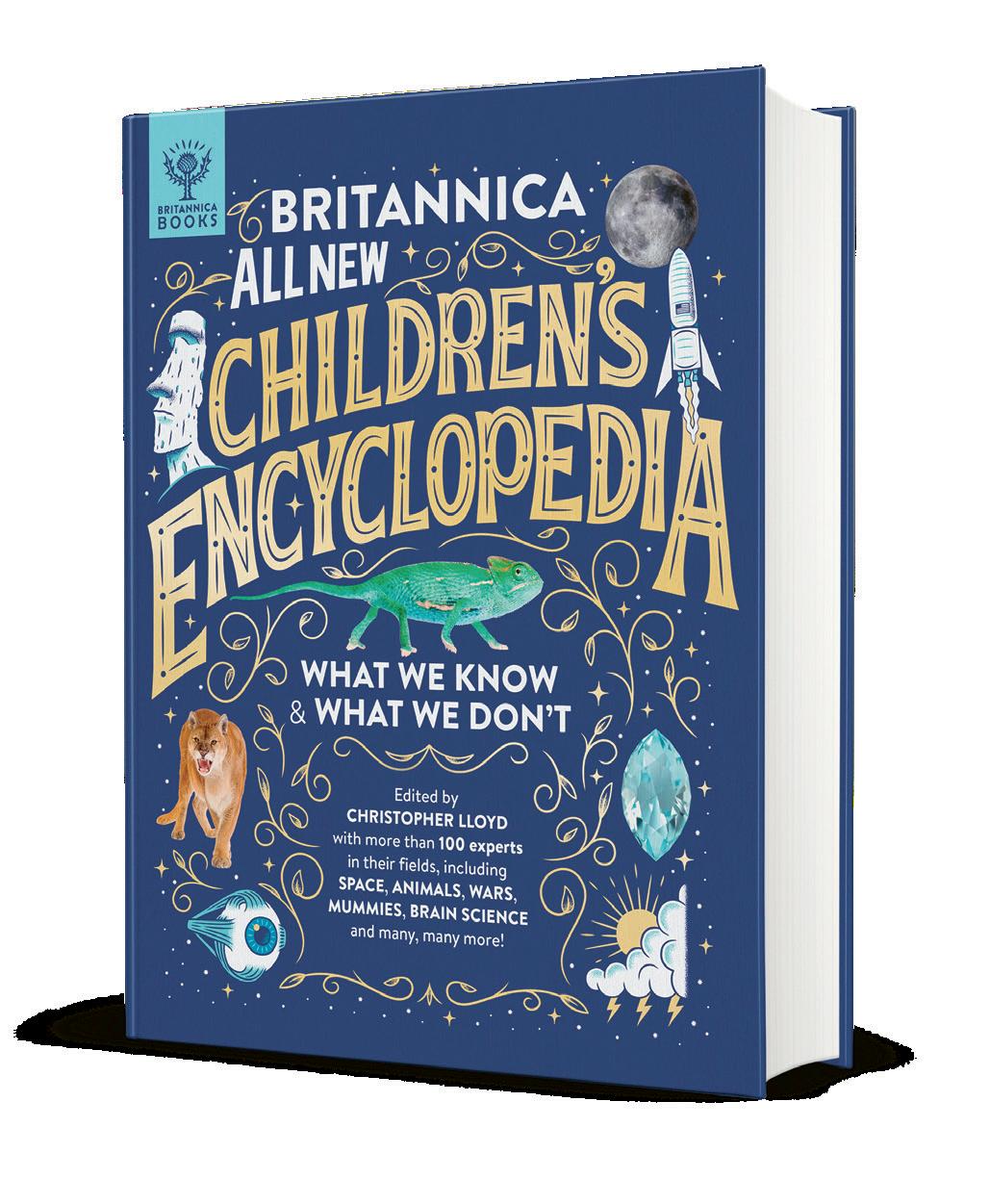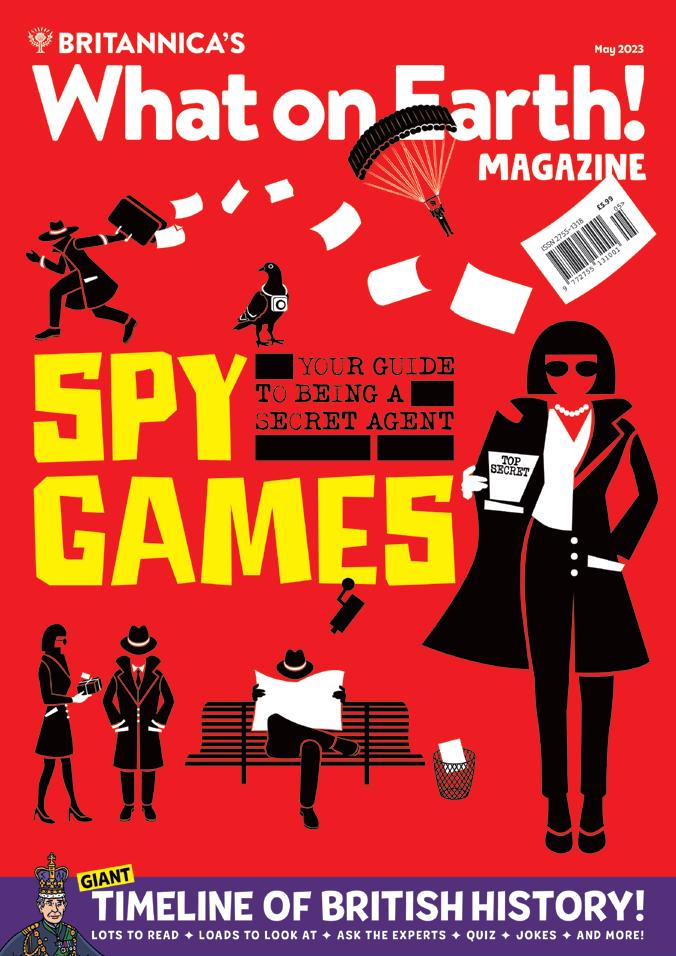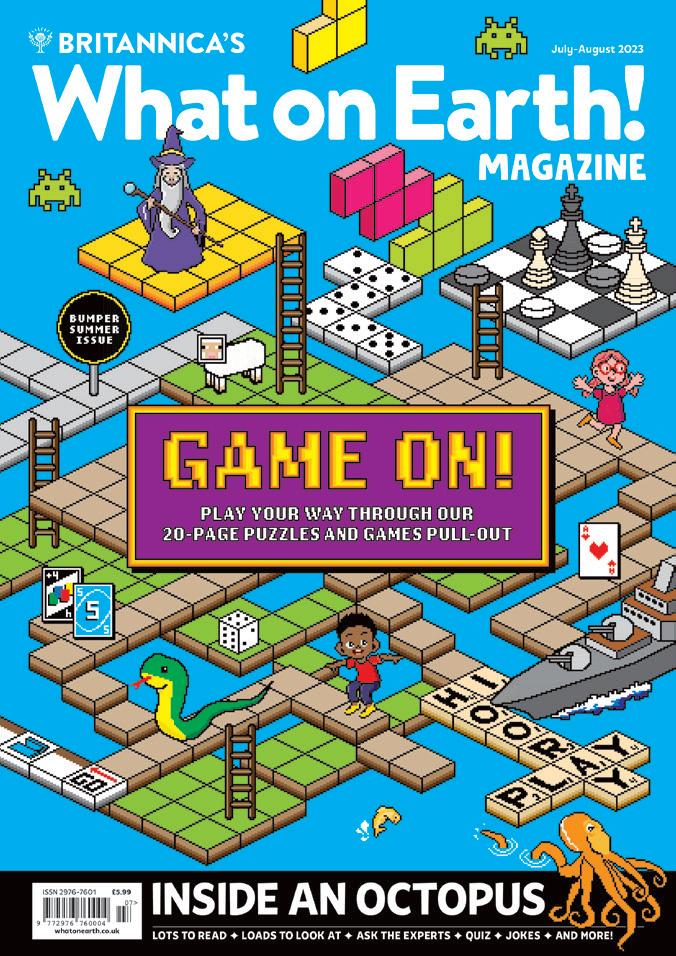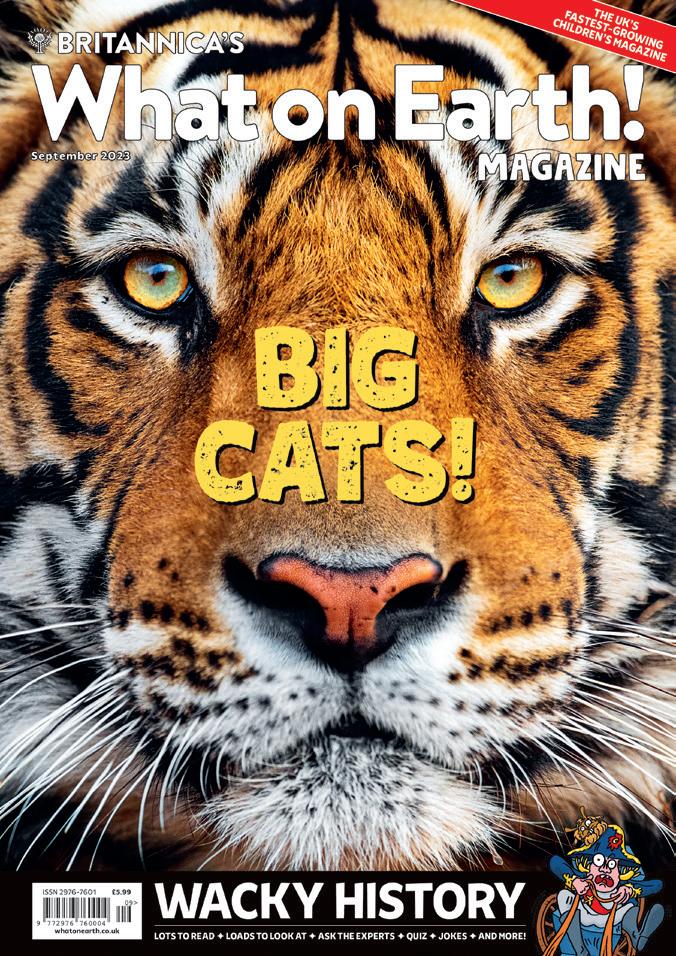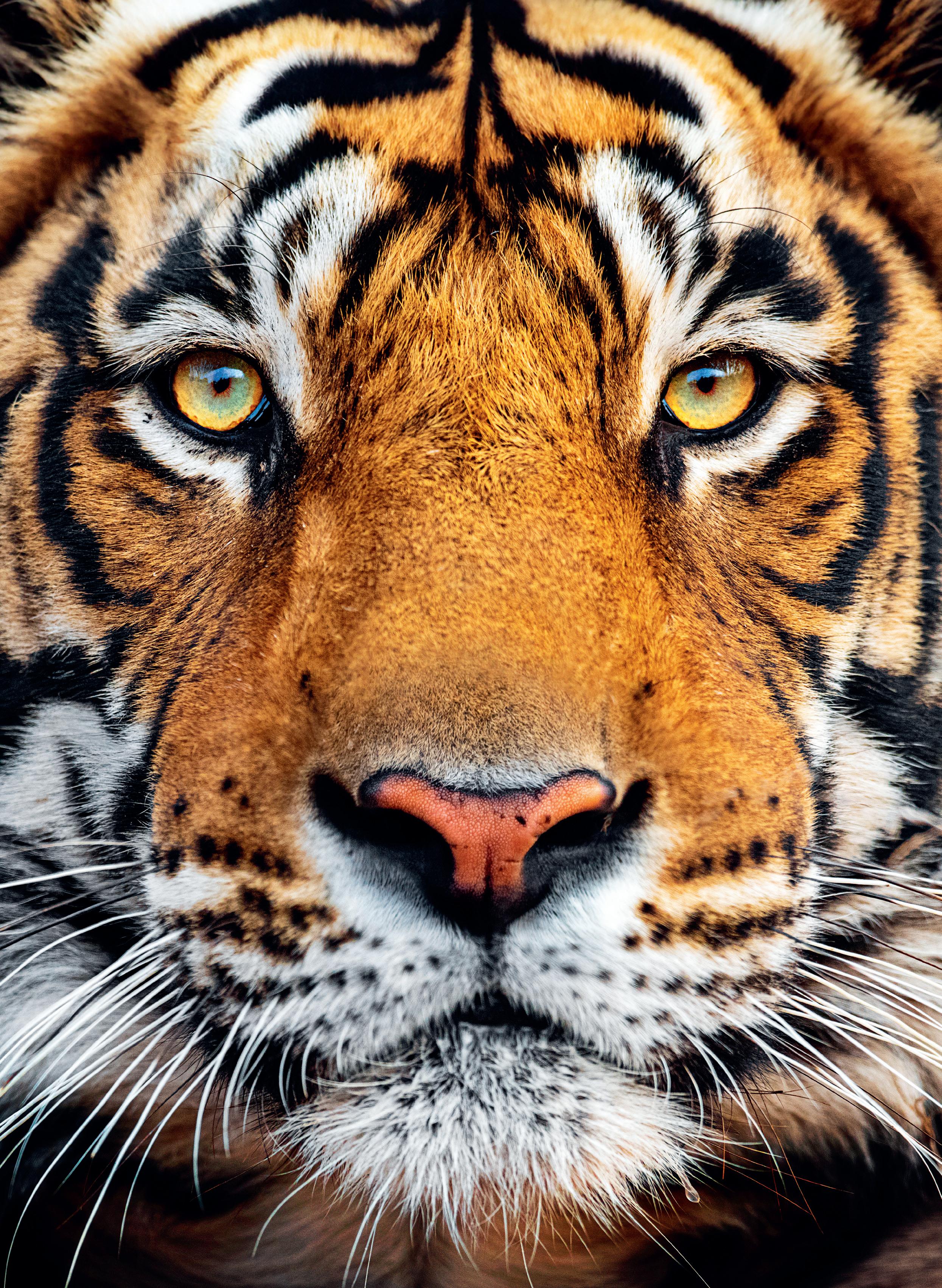
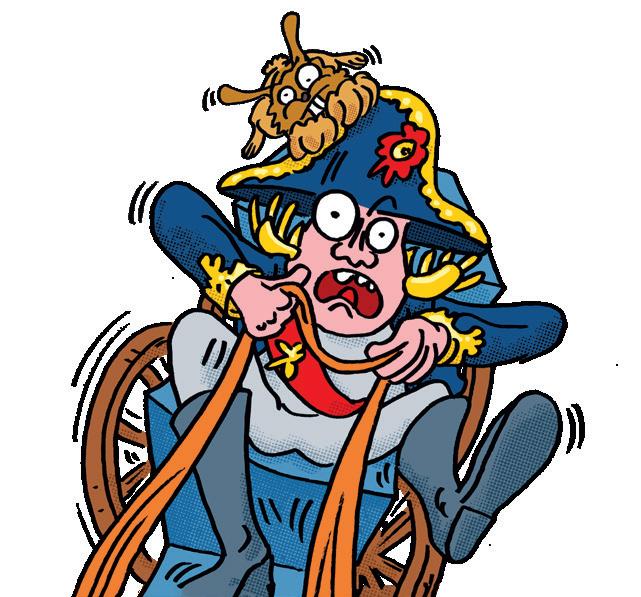
BIG CATS
Join us for a fascinating big cat safari on page 14
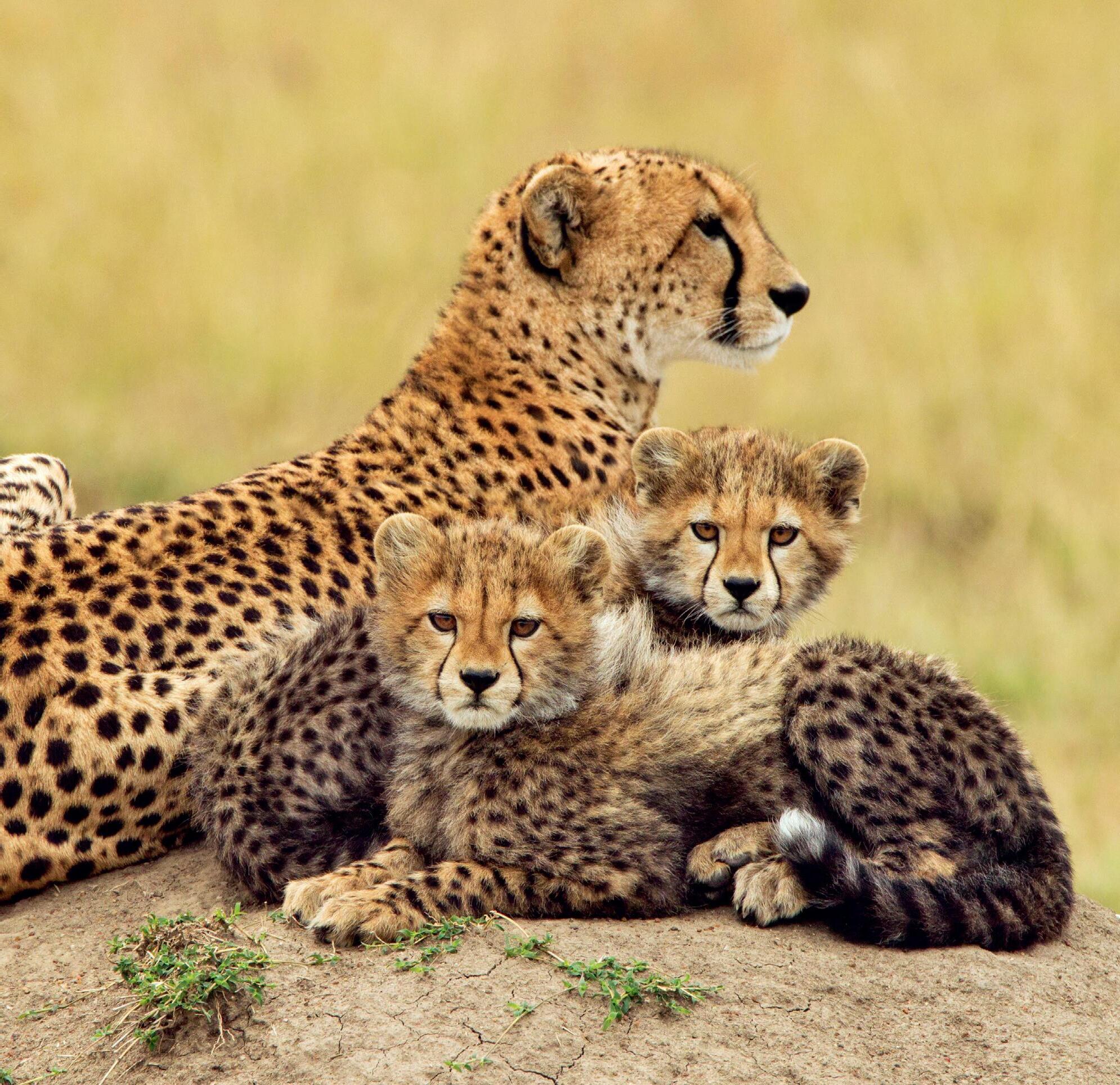
CONTENTS
HOW TO CHAT CHICKEN
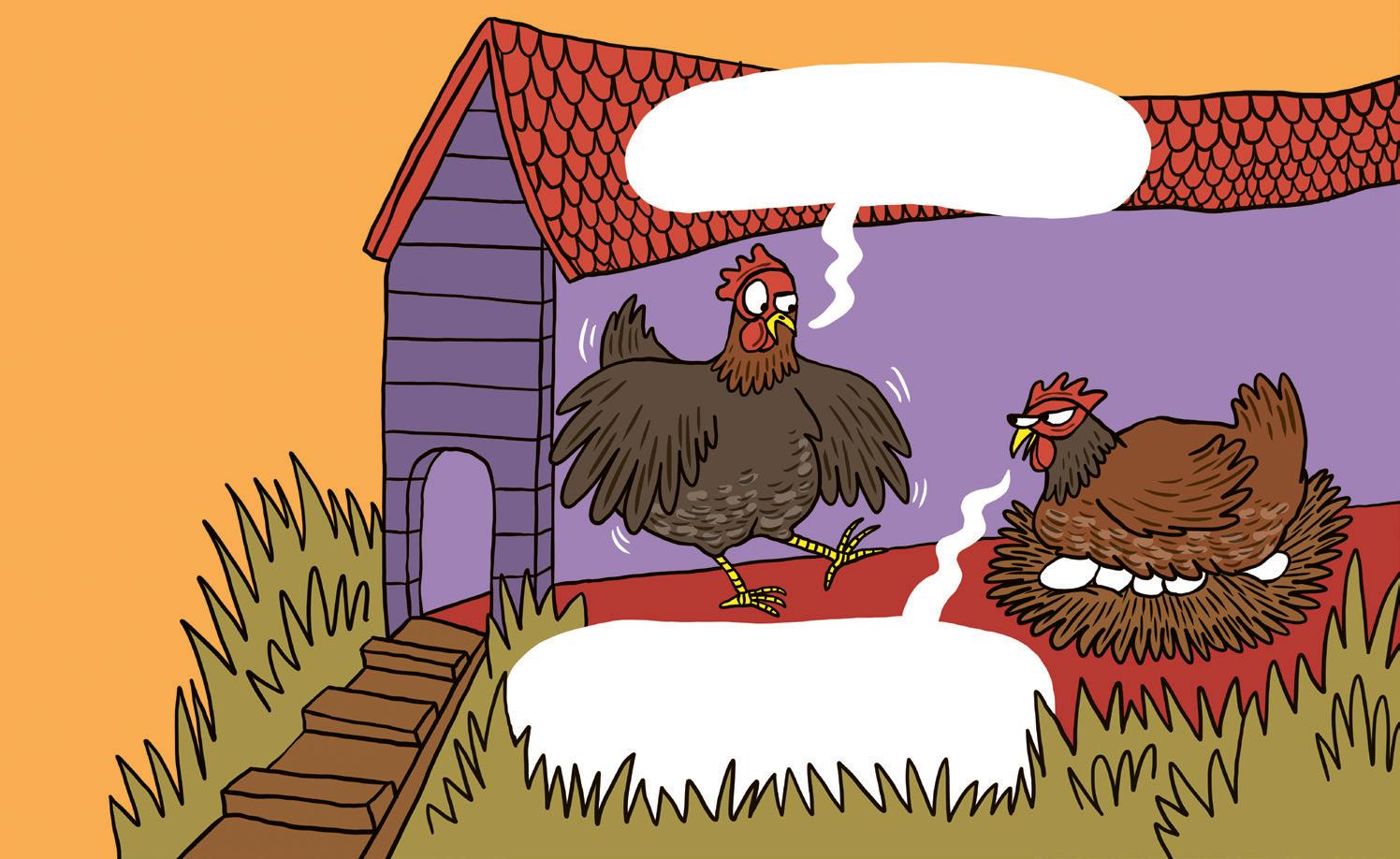
Learn to speak fluent chicken on page 20
B
B
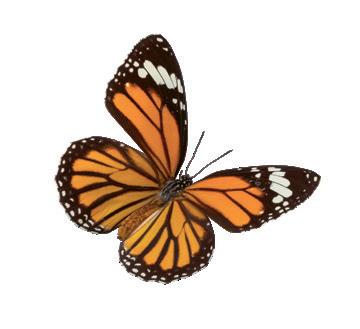
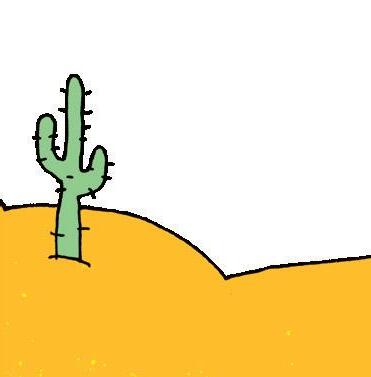



Join us for a fascinating big cat safari on page 14

CONTENTS

Learn to speak fluent chicken on page 20
B
B


EUREKA!
Can a robot conductor make beautiful music?

Follow the trail of crazily connected facts on page 4 all the way from a pair of giant ears to a world record for eating cake!
ASK THE EXPERTS
What are the most commonly spoken languages today? And which is the oldest?
All is revealed on page 39.
WHAT ON EARTH!
Page 6
PUZZLES & GAMES
Page 46
NOBODY KNOWS
Page 55
THE WHAT ON EARTH! QUIZ
Page 34
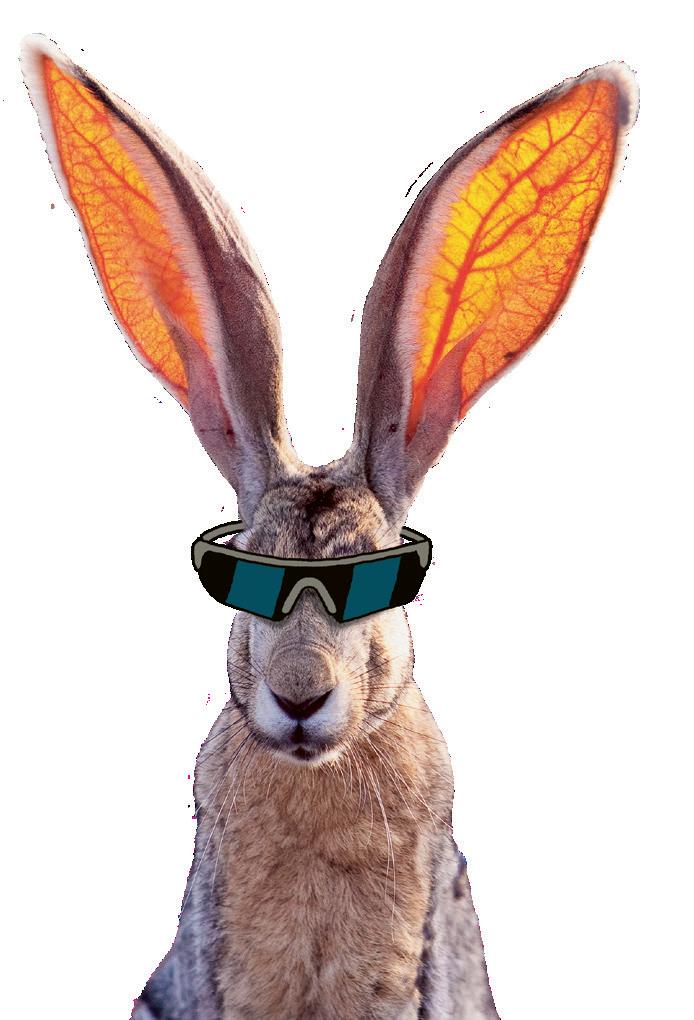
Find out all about infographics on page 24, including how Florence Nightingale’s pioneering diagram, pictured below, saved thousands of lives.
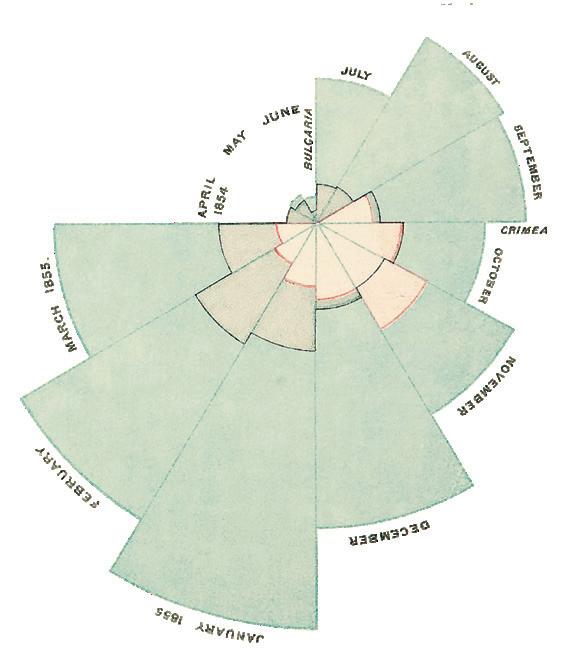
Would you like to study at pirate university? Find out how on page 57

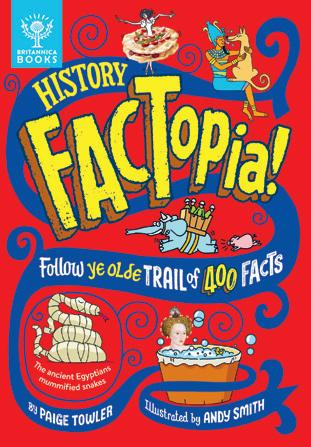
Discover 16 bizarre things that actually happened on page 40, including the first selfie.
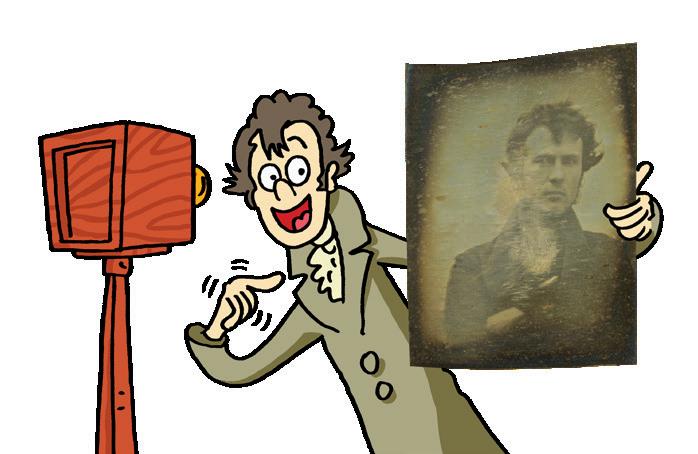
Discover nine colours named after people (and the Minions!)
on page 12
To win ALL the brilliant books featured in our September Issue, just answer this question: What is the fastest big cat? Send your answer to editor@whatonearth.co.uk and a winner will be chosen at random by our jokes editor May. Good luck!

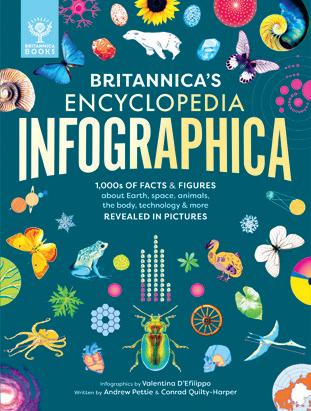
Look out for this month’s selection, hand-picked by our jokes editor May, on page 58.
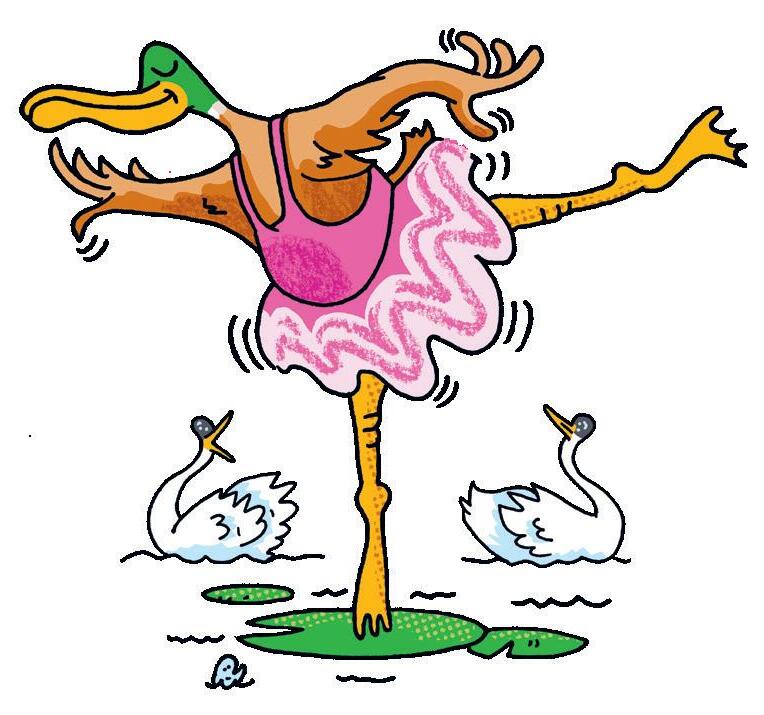

Email us your letters, photos and favourite facts to: editor@whatonearth.co.uk
You can also find all these books (and more!) at whatonearthbooks.com/ shop


Not all deserts are hot. The world’s largest desert is in Antarctica, where temperatures can drop below -89°C
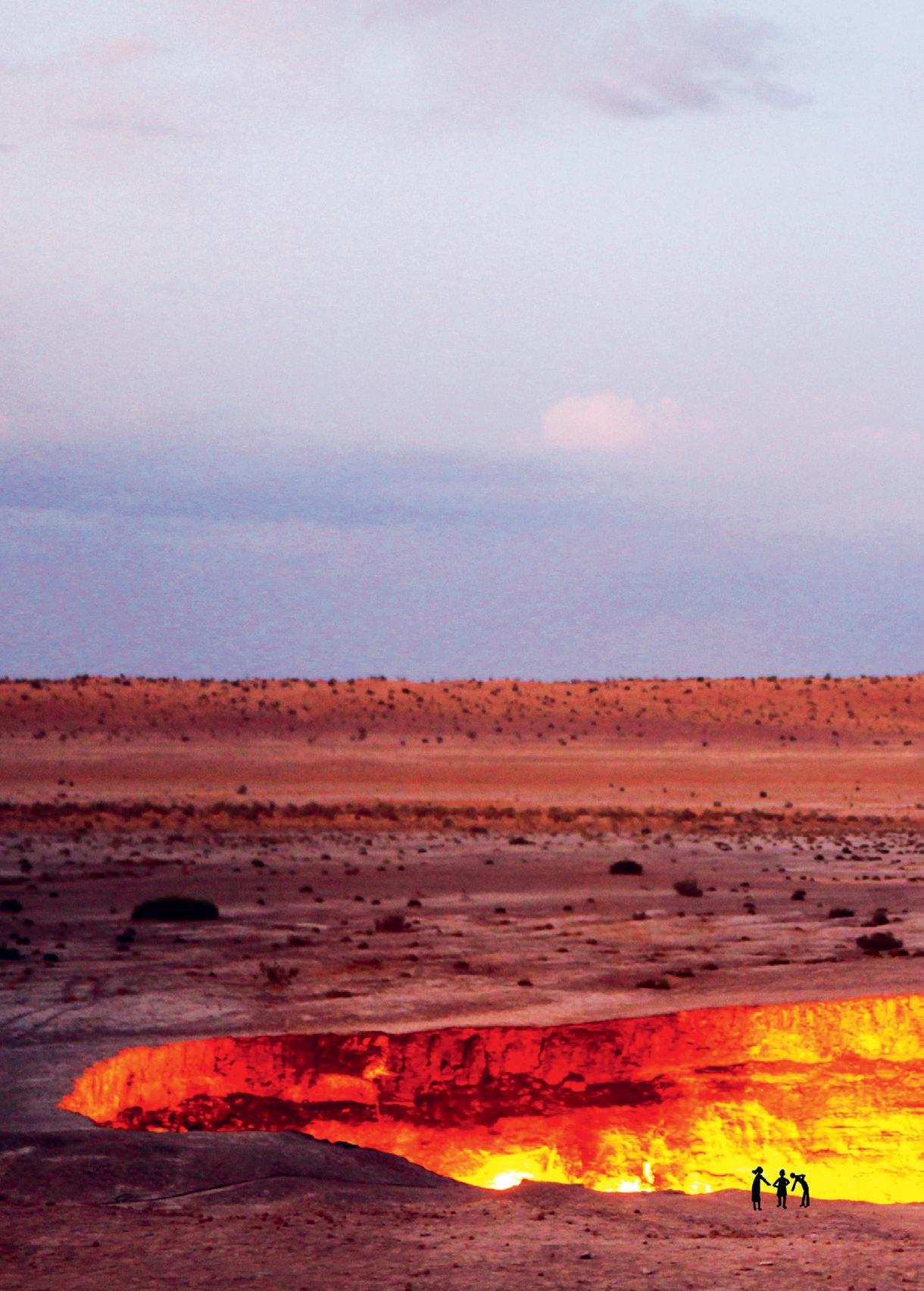
Follow the trail of crazily connected facts all the way from the jackrabbit’s giant ears… to a world record for eating cake!
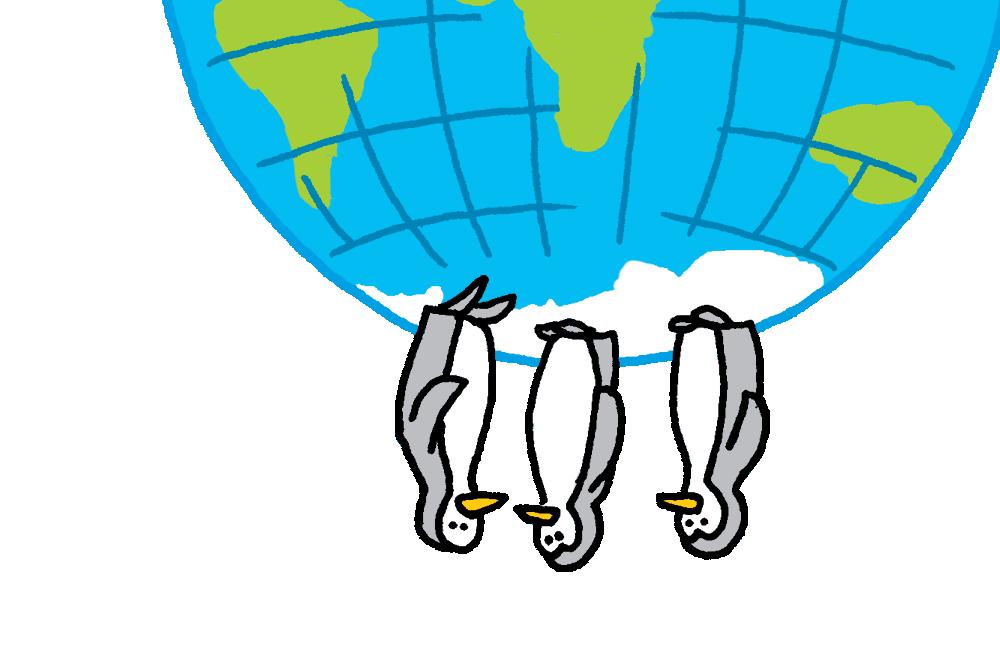
 By Kate Hale
By Kate Hale
It rains diamonds on Jupiter and Saturn
Thorny devils, desert-dwelling lizards from Australia, use their skin like a straw to suck in water from sand and transport it directly to the lizard’s mouth like a drink
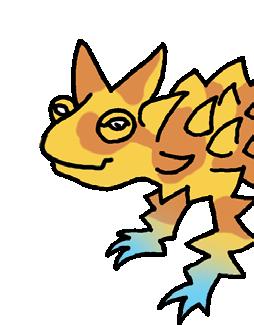
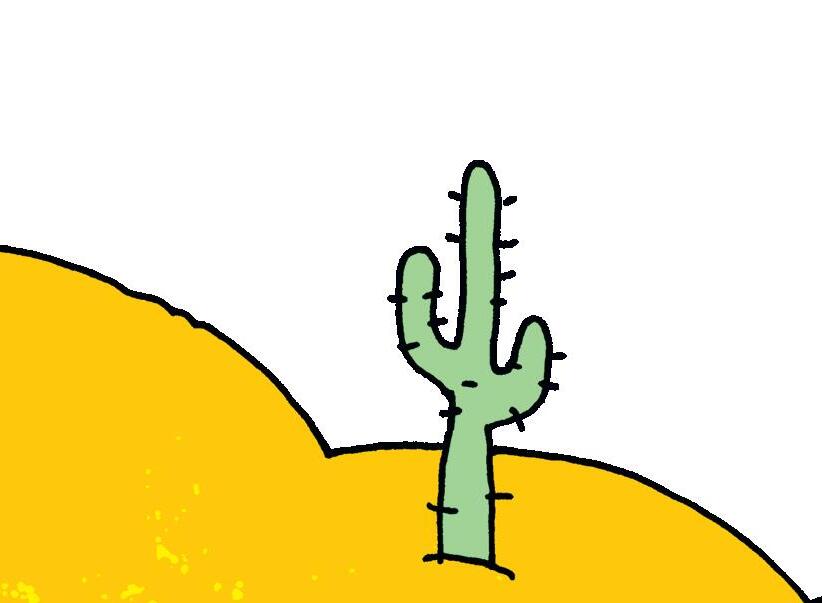
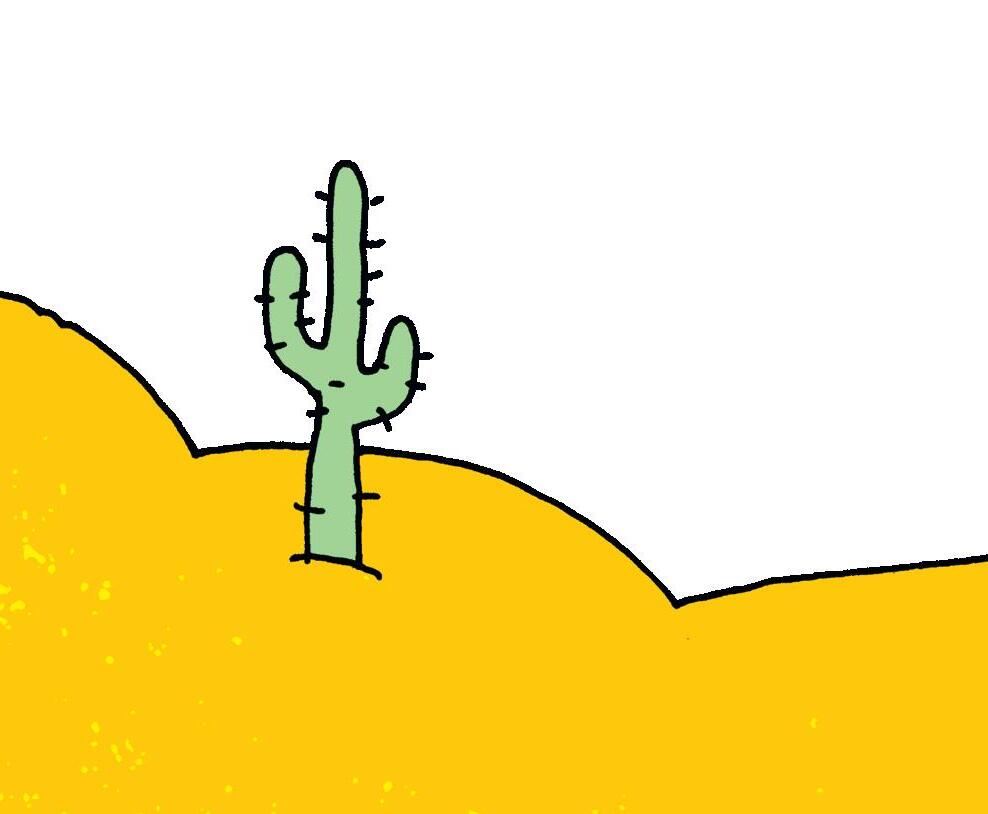
that’s been burning for more than 50 years

Jackrabbits use their huge ears to help release body heat and keep cool in the desert
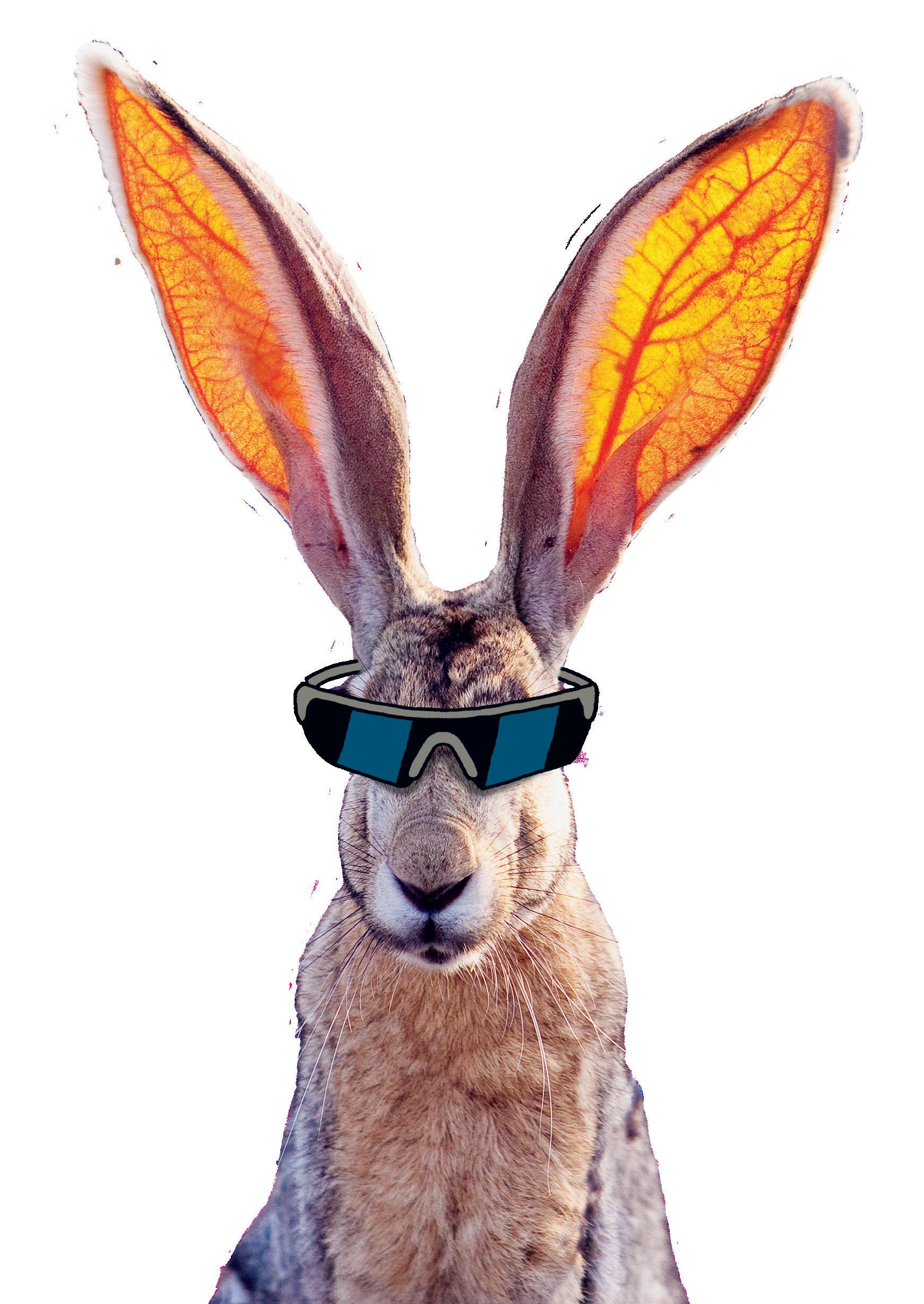
A dog named
accidentally ate £7,500 worth of diamonds from her owner’s jewellery store. The diamonds came out safely from the other end

The ancient Greeks and Romans thought diamonds were tears from the gods

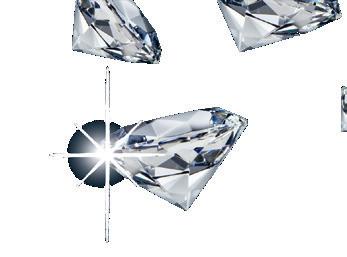
 Illustrations by Andy Smith
Illustrations by Andy Smith
Animals that eat their own poo, such as guinea pigs and rabbits, are called coprophages
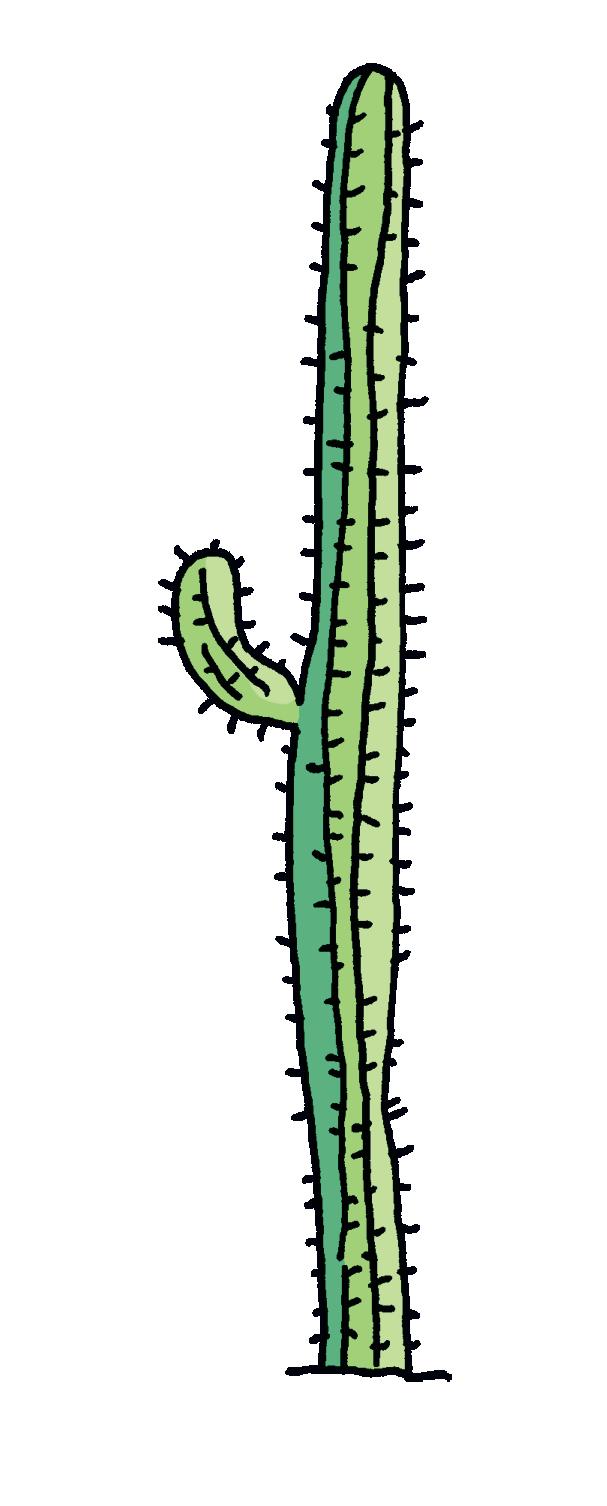

The Sun creates
particles of light, calledphotons,

The surface of the Sun is hot enough to melt diamonds

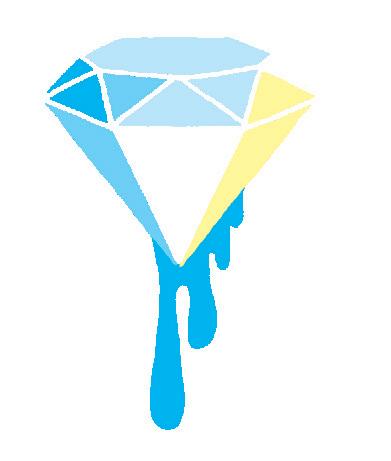
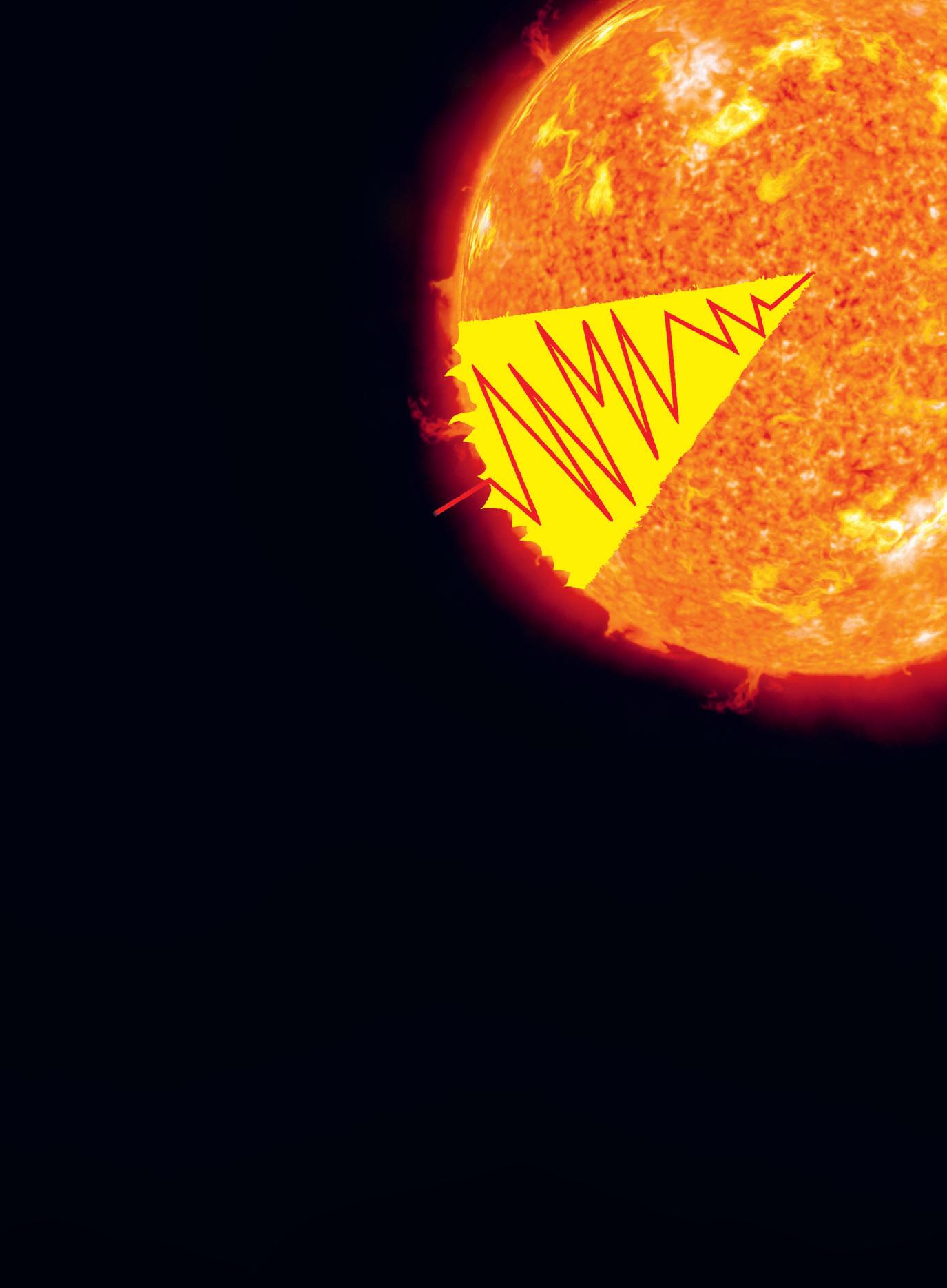

Onemansetaworldrecordbyeating6.6kilogramsofbirthdaycakeinjust8minutes!
The rumbling sounds your body makes when it’s hungry are called

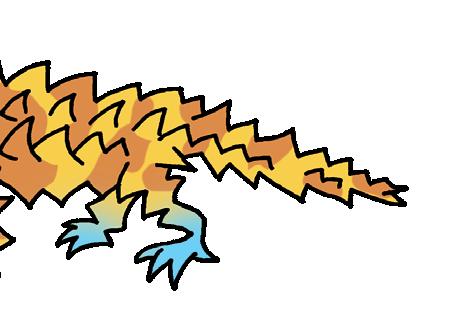
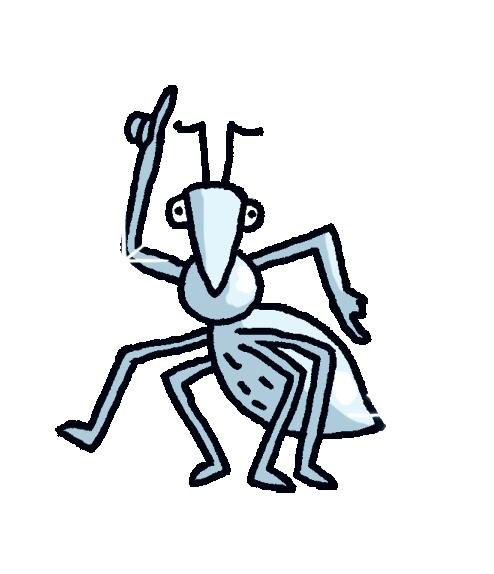
borborygmi

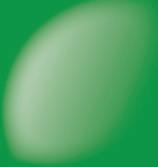

These towering, human-made ‘supertrees’ in Singapore, Southeast Asia, have beautiful tropical flowers and ferns growing around their metal frames. You can walk between the trees on ‘skywalks’ built 50 metres up in the air!









The bright band of stars in the sky are among billions in the Milky Way. A continual process of freezing, thawing and evaporation has created the hexagon-shaped mud flats on the ground below.
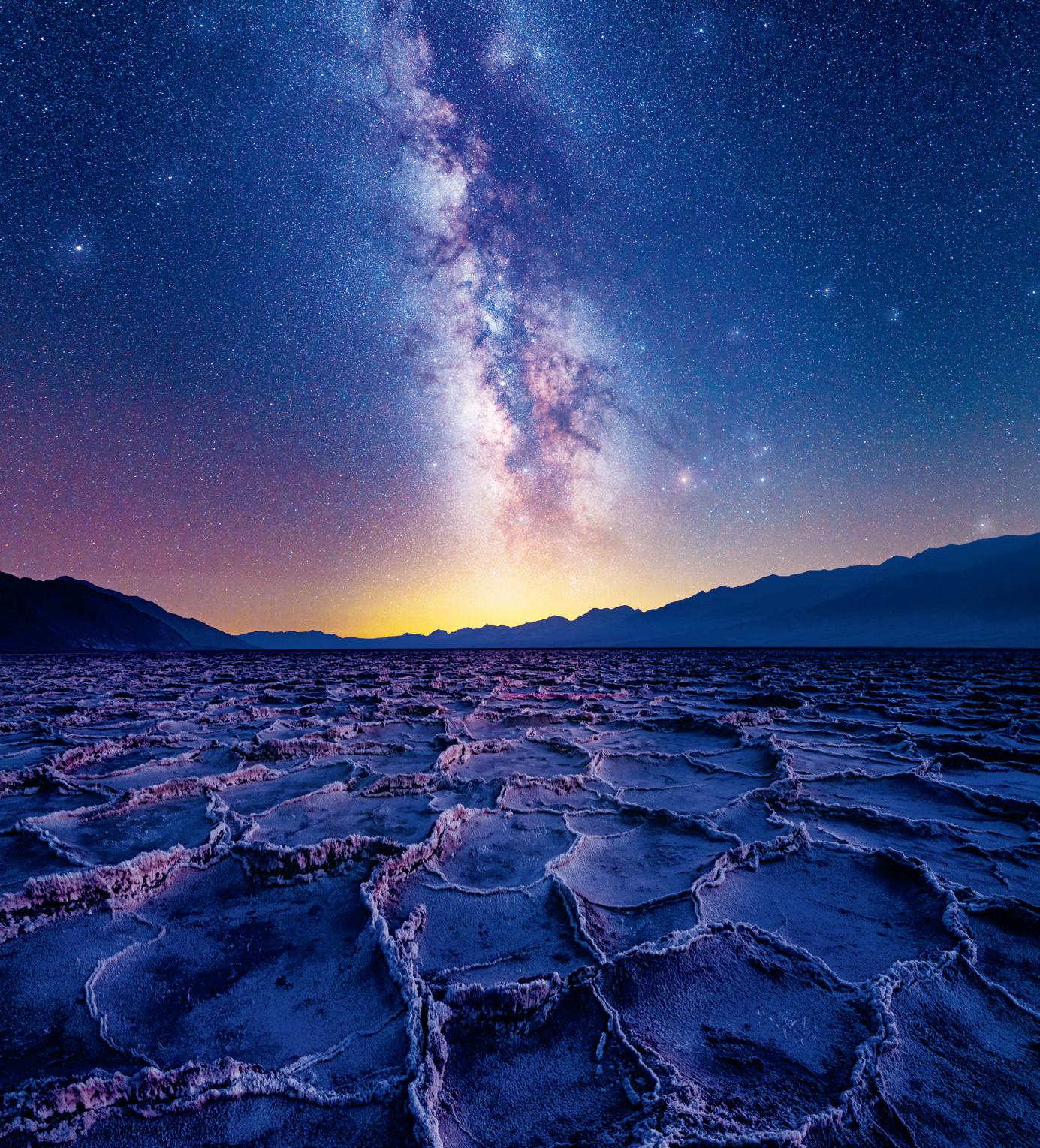
Just before this hilarious photo was taken in a park in New York, USA, the dog’s owner threw a ball. The dog then launched itself into the air and opened its mouth wide to catch the ball. Bravo!

During a summer heatwave, one of the best ways to cool down is to get soaking wet. In this photo, a group of girls are doing exactly that by leaping into a waterfall in a park in Washington D.C., USA. Many people around the world did the same thing during July, which according to NASA was the hottest month on Earth since temperature records began in 1880.
 CREDIT: CHRIS PORSZ / COMEDY PETS
CREDIT: BADWATER MILKY WAY / ABHIJIT PATIL
CREDIT: CHRIS PORSZ / COMEDY PETS
CREDIT: BADWATER MILKY WAY / ABHIJIT PATIL



The giant yellow blob bursting out from inside the Temple of Piety, a historic building in Yorkshire, UK, looks like a giant bacterium or an alien monster from outer space. In fact, the mysterious yellow blob is an inflatable work of art by Steve Messam. The artwork’s name, if you haven’t already guessed it, is Spiked!
CREDIT: OWEN HUMPHREYS / PA
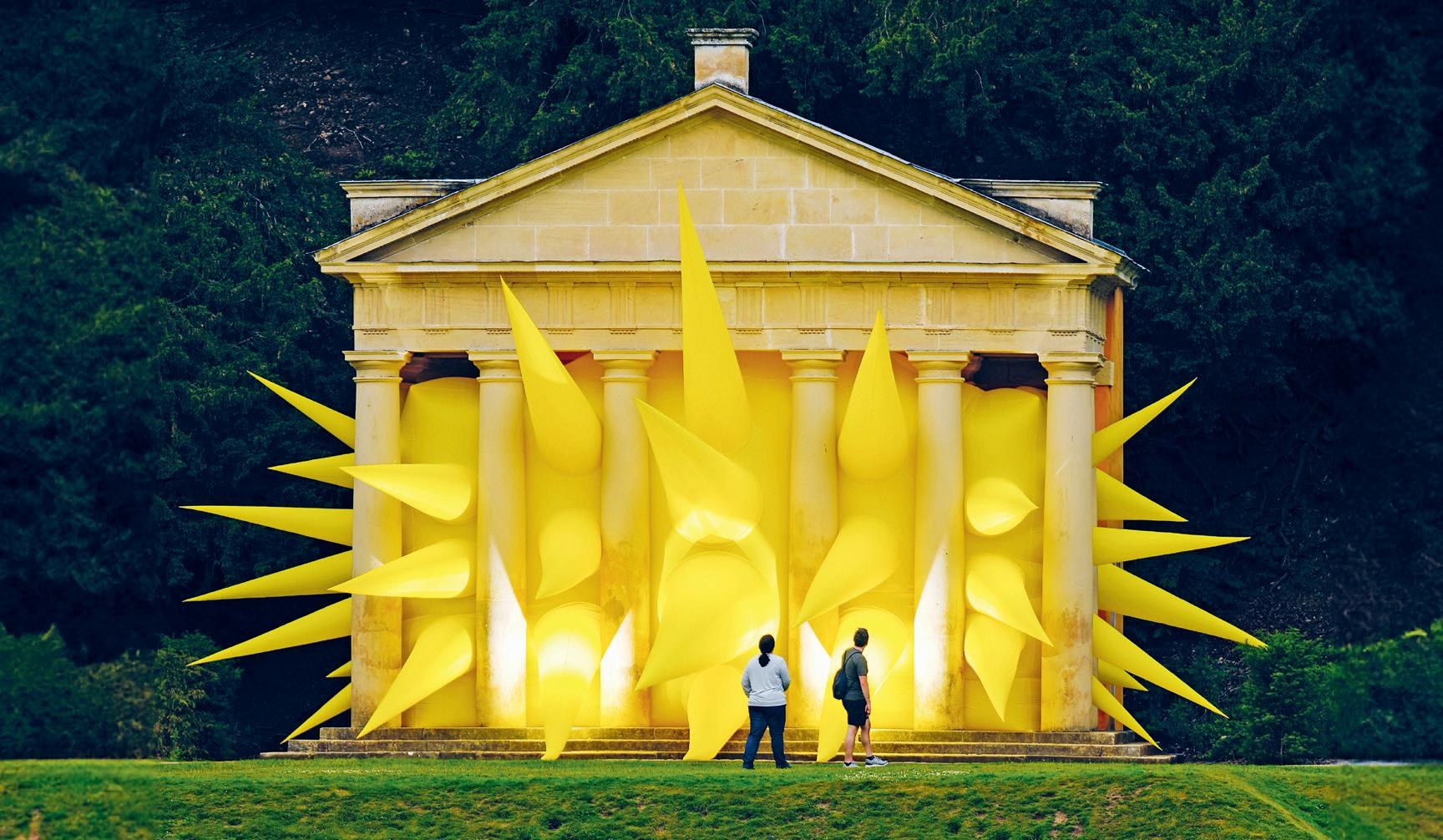

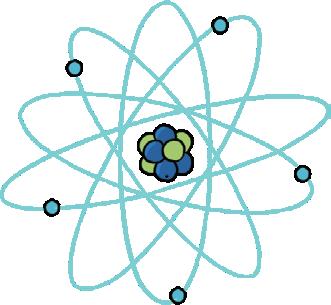
In July the European Space Agency released this stunning image of stars forming 1,470 light years from Earth. But below the stars and the disc of material that helps the stars to grow, there was a mystery of the cosmos – in the form of a question mark! Scientists aren’t yet sure what the question mark is, but they have some ideas. The red colour means that it’s quite far away. And it is probably a distant galaxy, or even two galaxies colliding!
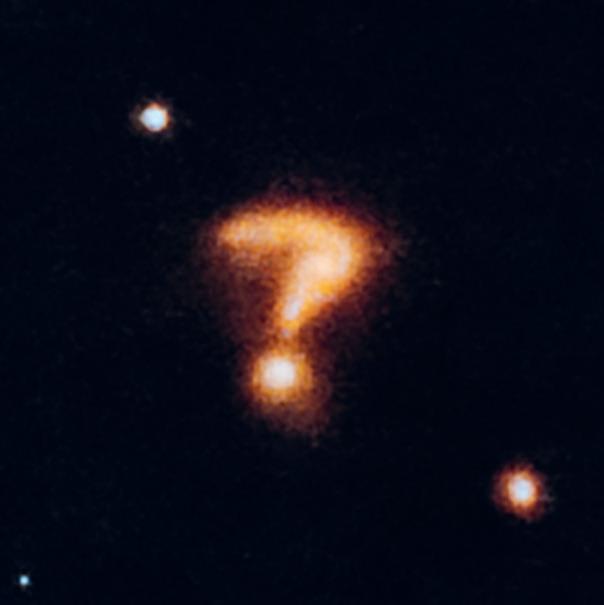
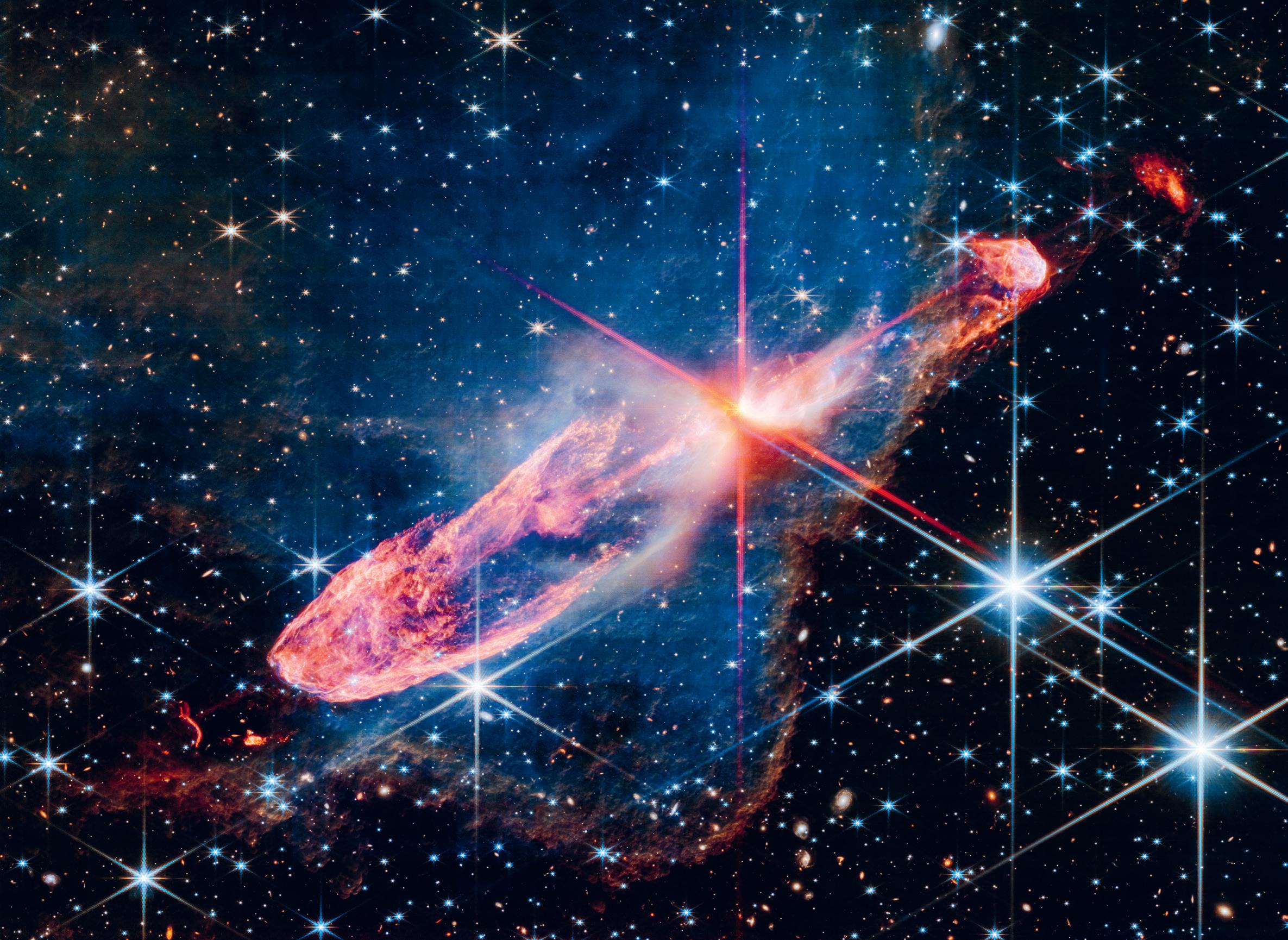
Scientists have discovered that the small West Atlantic trumpetfish uses extremely sneaky tactics to catch its prey.
The trumpetfish is a predator that lives near coral reefs. People diving near the reefs had noticed that trumpetfish often swim very close to large, non-predatory fish that they don’t eat, such as parrotfish. But why would trumpetfish want to hang out alongside parrotfish?
Scientists had an idea: they thought that keeping close to non-threatening fish might
help the trumpetfish get closer to its prey without scaring them away. They tested this
hypothesis by experimenting with damselfish, a common meal for trumpetfish. They
made models of trumpetfish and parrotfish and tested how the damselfish reacted to seeing them.
When the damselfish saw the model trumpetfish, they swam away. But when the two models were used together, the damselfish were less careful, just like they were for the model parrotfish alone. This told scientists that the trumpetfish’s sneaking was successful. Scientists think that this is the first example of an animal using another animal to hide itself from prey!
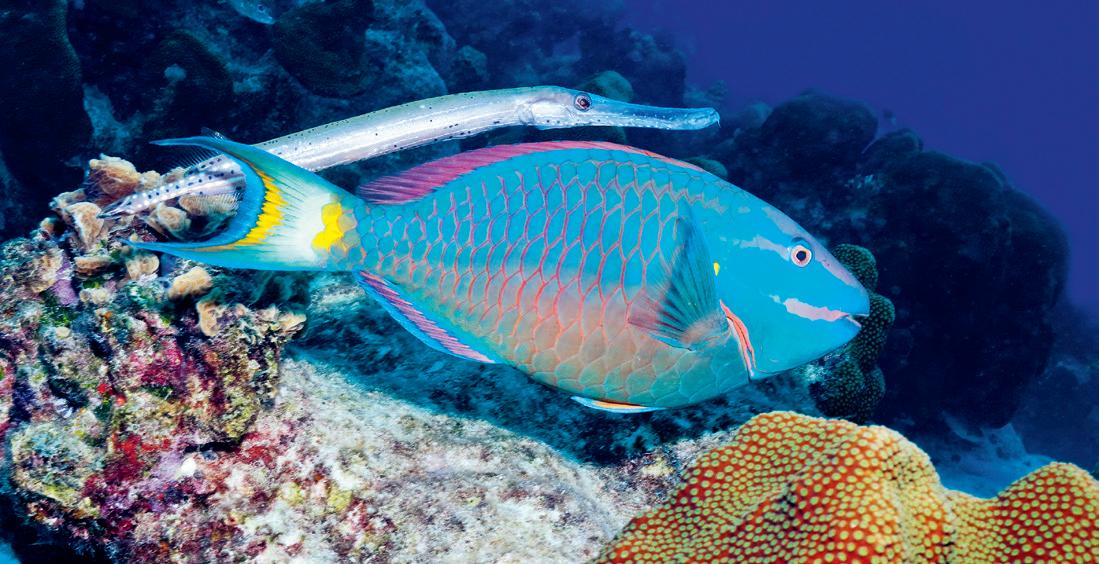 Sneaky trumpetfish (top) are masters of hide-and-seek!
Sneaky trumpetfish (top) are masters of hide-and-seek!
The latest astonishing discoveries, inventions and scientific breakthroughs.

Researchers at Penn State University in the US found evidence that humans may have evolved curly hair not just because it looks cool, but because it is cool.
The scientists used humanshaped models called thermal manikins, which simulate body heat, for their research. They dressed them with humanhair wigs to test different hair types: no hair, straight hair, moderately curled hair and tightly curled hair. Then they put the thermal manikins in a climate-controlled wind tunnel and shined them with lamps to simulate the Sun. They even wet the manikins to simulate sweat!
What they found was that tightly curled hair gave the best protection from the Sun’s heat. It also minimised the need to sweat. For our human ancestors, that meant their bodies didn’t need to use so much energy to keep cool. That’s good news for growing big brains, which also generate a lot of heat!
On 30th June an android robot called EveR 6 took to the stage in Seoul, South Korea. It led the country’s national orchestra as their conductor in three out of five pieces that were performed that night. They included one piece performed alongside the

orchestra’s human conductor, Soo-Yeoul Choi.
EveR 6 is equipped with arms, hands and a face to make its conducting as realistic as possible.

Attendees were impressed with the robot’s ability to move like
a real conductor. However, they noted that EveR 6 cannot ‘hear’ the music, which made its performances not quite as good as a human’s.
Audience members agreed that EveR 6’s performance could be improved, perhaps with artificial intelligence that helps it to better understand the music.
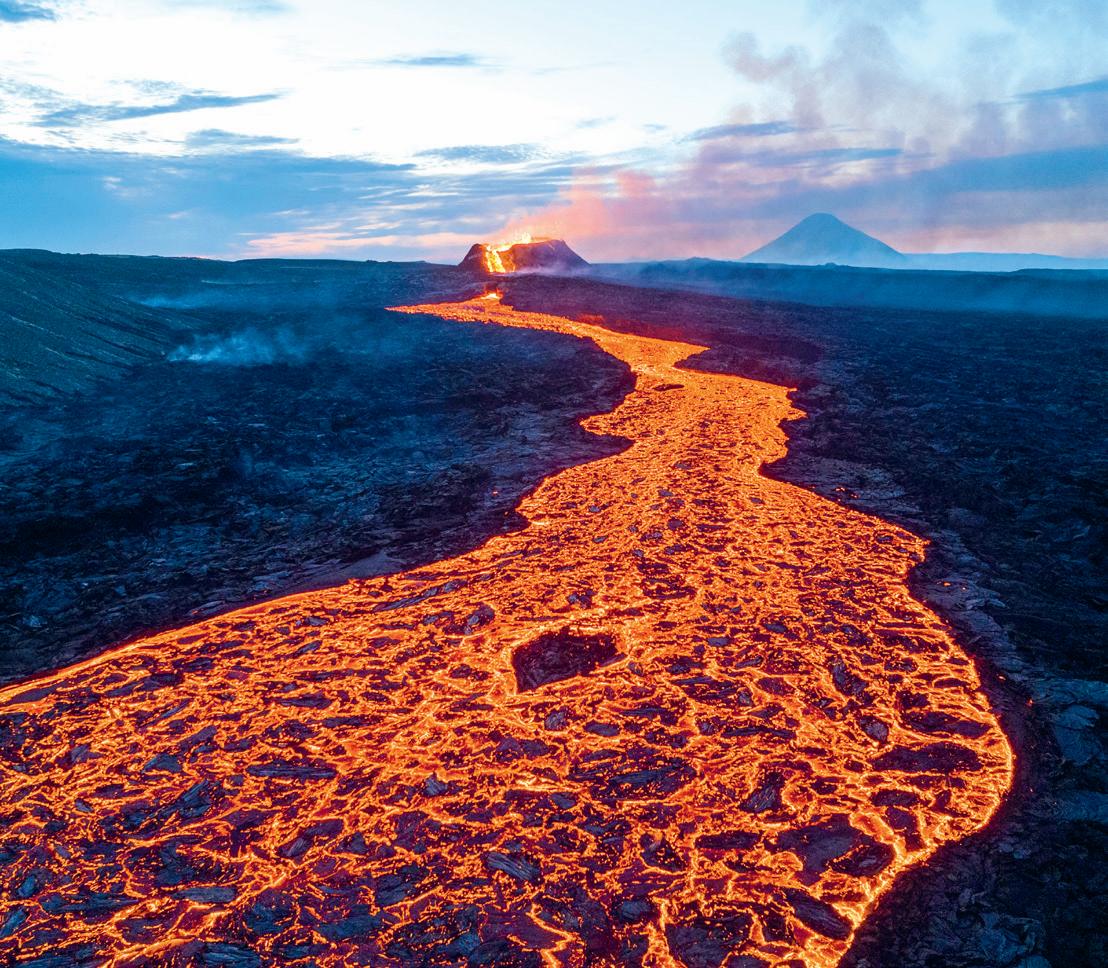
A new volcano has formed in Iceland’s Fagradalsfjall volcanic area. Three cracks that spewed lava and gas opened near the base of a small mountain called Litli-Hrútur (which means ‘Little Ram’ in Icelandic) on 10th July.
By the next morning, two of the cracks had closed, and lava was creating a cone around the third. Just like that, the volcano was born! In just one week the volcano grew to about 30 metres tall. It kept erupting until 5th August.
Nine colours named after people (and small animated henchmen)
International Klein Blue
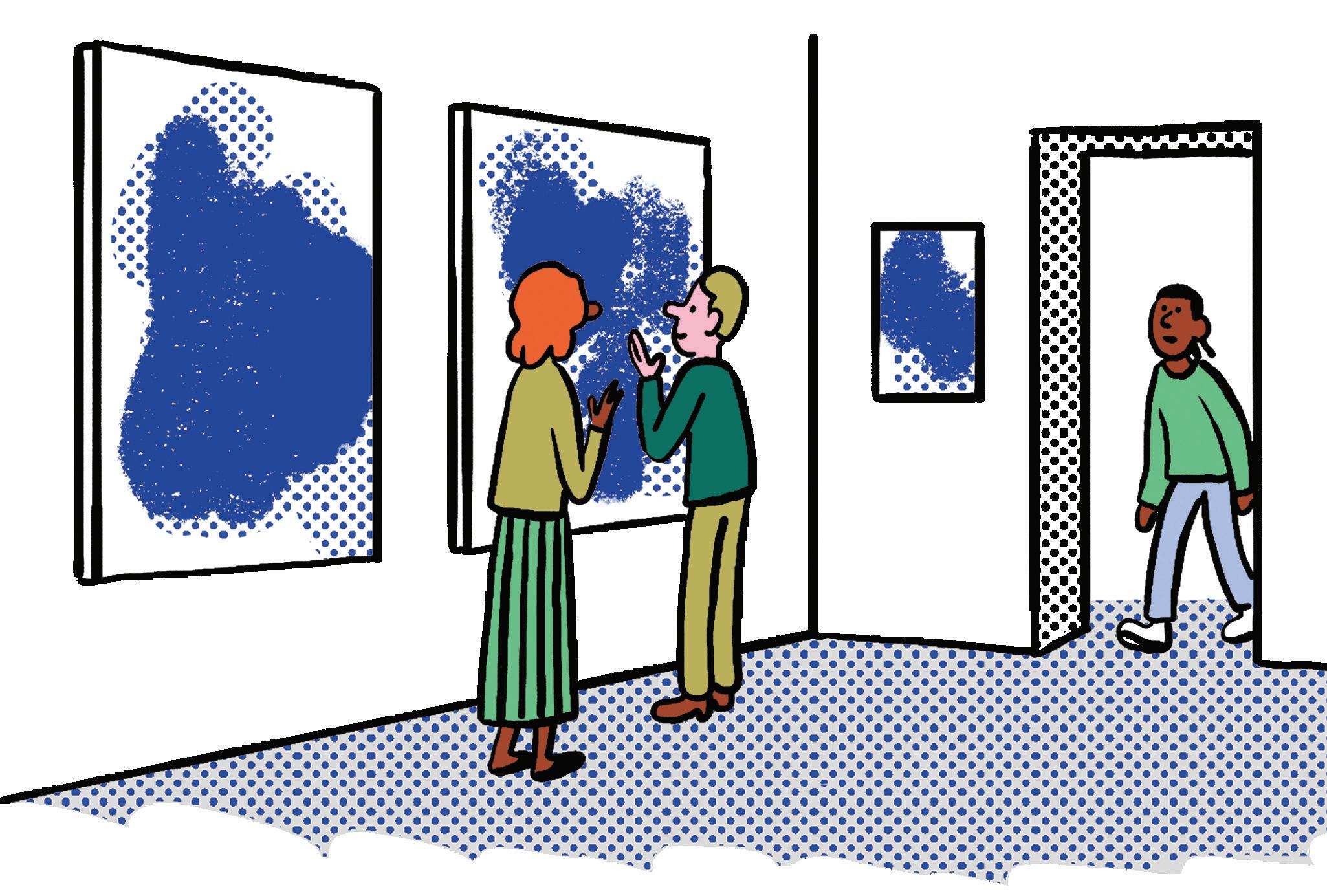
French artist Yves Klein invented a deep, dark blue colour, then registered the formula for his new colour with the government. It was known as IKB for short.*
An American scientist called Alexander G. Schauss designed this soothing pink colour. He had been conducting studies into the effect different colours had on mood and behaviour and hoped his new pink would make people who looked at it less worried and frustrated. It’s named after two members of staff at a naval prison where
Schauss completed one of his experiments: the naval commander (Baker) and warder (Miller).
The 19th-century British scientific illustrator William Hooker created this warm, gentle green for his drawings, so he could perfectly match the shade of green found in leaves.
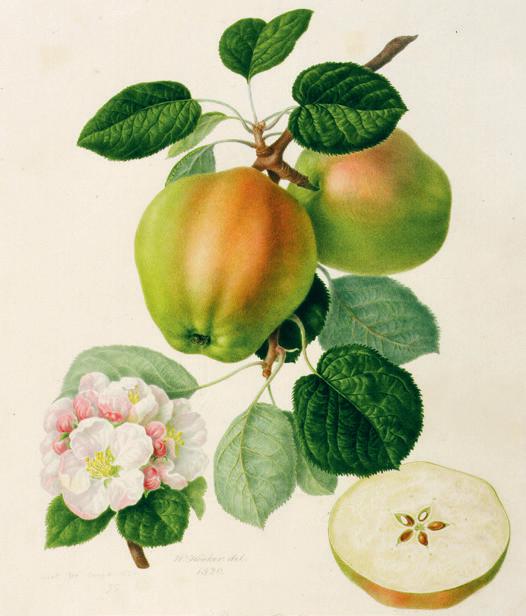
Minion Yellow
In 2015, the bright yellow animated characters known as the Minions were given their very own colour, Minion Yellow.

Perkin’s
A bright purple, this mauve colour was invented in 1856 by an 18-year-old English chemistry student called William Henry Perkin.**
This red-orange colour, often used to describe people’s hair, is named after the great Italian artist of the 1500s, who painted lots of people with red hair in his pictures.
Alice blue
Alice Roosevelt Longworth, the daughter of the 26th US president Theodore Roosevelt, was known for wearing dresses of this icy pale blue colour.
Prepare to be amazed (and amused!) by the unusual facts crammed into these irresistible lists.
Anthony van Dyck was a 17th-century painter from Belgium best known for his portraits of kings, queens and members of their courts. Van Dyck often used a deep, warm brown colour in his paintings and the colour was later named after him. For a time the colour was also called Cologne earth after the dirt in the German city!***

In 1936, King Edward VIII gave up his throne to marry Wallis Simpson, who had been divorced before (a big scandal at the time). They married in 1937. Wallis’s wedding gown was a light, greyish blue that was reportedly designed to match her eyes. The company that made the dress, Mainbocher, called the colour Wallis blue.
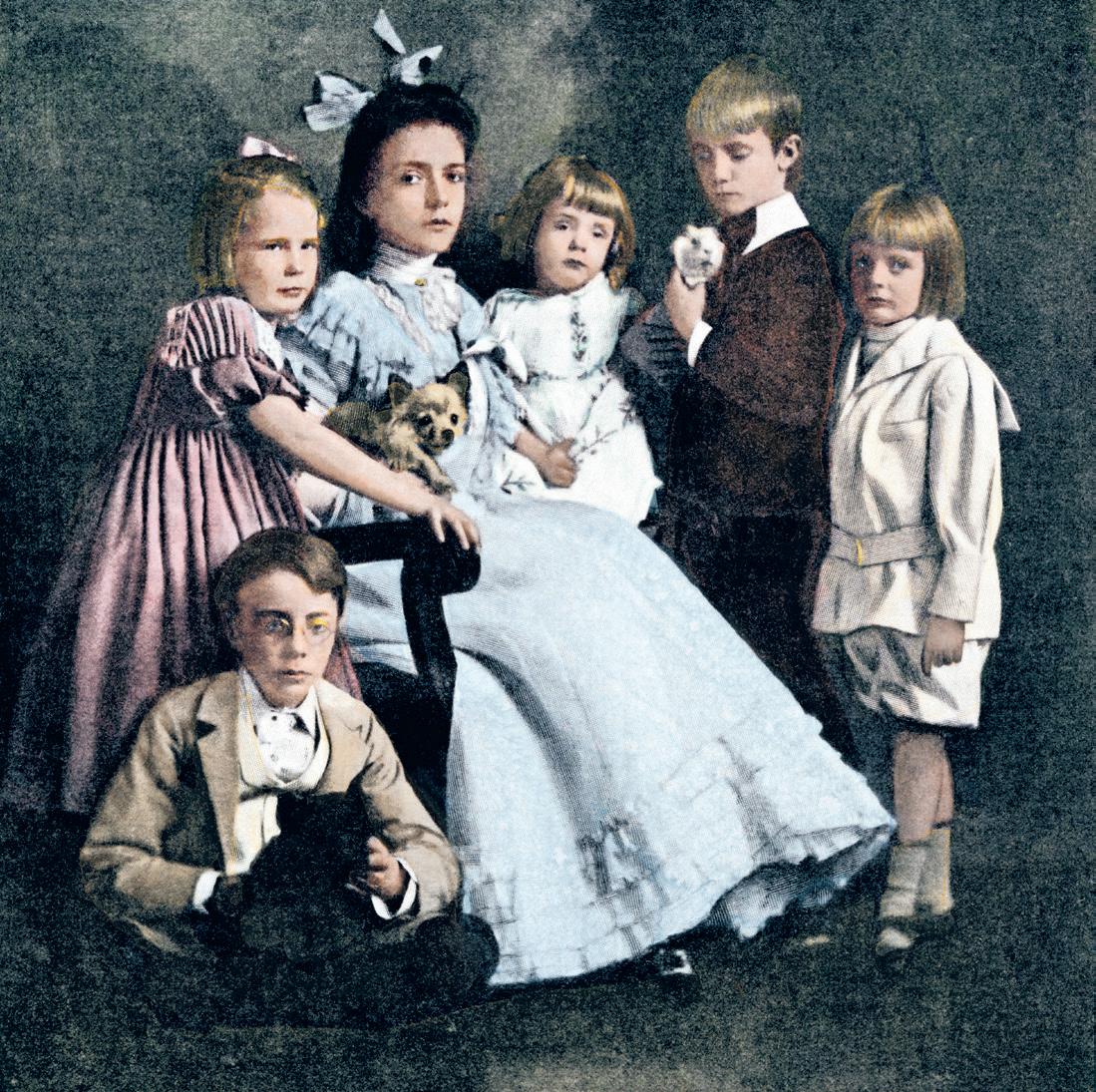
*At one point in Klein’s career, known as his ‘Blue Period’, he only exhibited paintings and other works of art that were blue. To celebrate one of these exhibitions, Klein released 1,001 blue balloons into the skies above Paris.
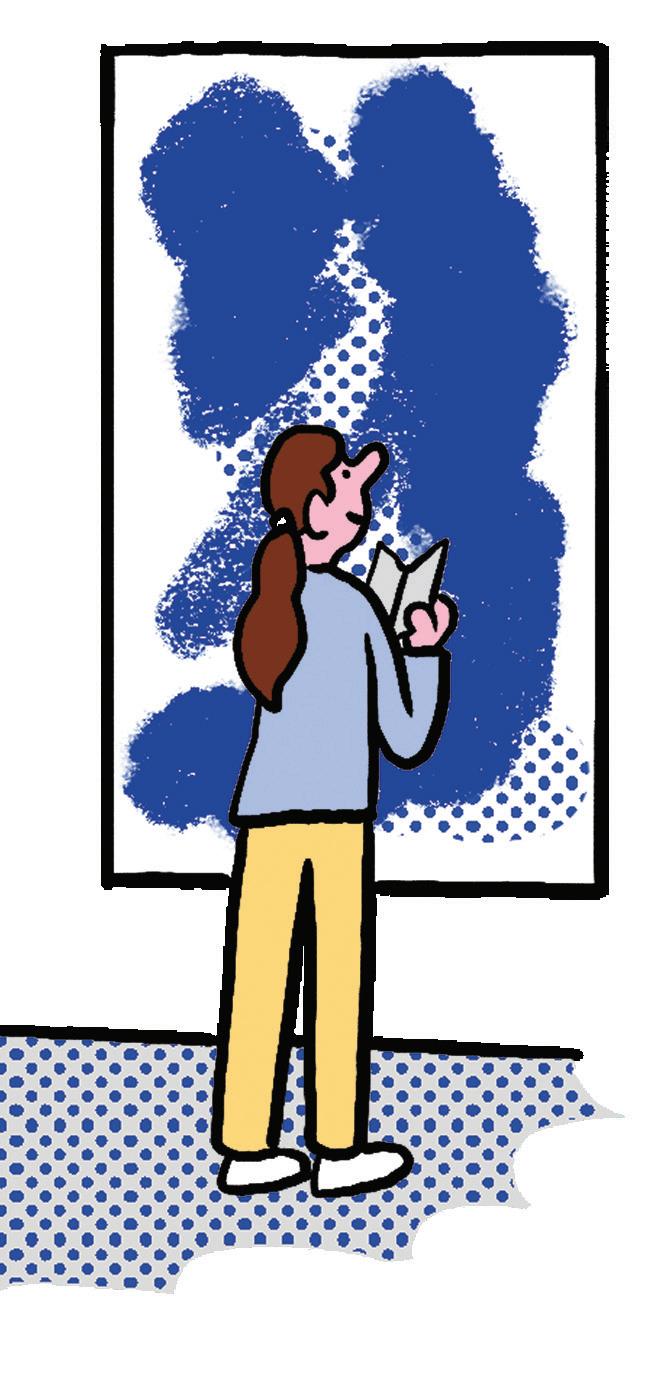
**Perkin patented his new colour and it became so fashionable that a magazine complained that the whole of England was suffering from a case of the ‘mauve measles’.
***In order to get the perfect shade of brown, van Dyck often added real dirt in with the paint!
If the stomach needs to be removed, surgeons can connect the oesophagus directly to the small intestine, so that food can still pass through the digestive tract.
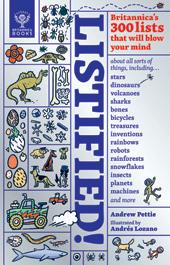
The role the spleen plays in storing and recycling red and white blood cells can be managed by the liver and other organs.
The colon, which is also called the large intestine, can be removed from the digestive tract in the same way as the stomach.
The gallbladder stores extra amounts of a substance called bile, which helps to break down fats. However, your liver can still produce enough bile even if the gallbladder is taken out.
The appendix is a small, worm-shaped organ that’s attached to the large intestine. It is thought to store useful bacteria. However, most people who have their appendix taken out don’t notice any difference.
Although humans need reproductive organs to have children and to produce certain hormones (special body chemicals), they are not essential to survival. People may remove these organs for many reasons, including to combat certain types of cancer or to treat other medical conditions.
*Most humans have two lungs and two kidneys, but in both cases it is possible to survive using just one.
An Yves Klein exhibition in International Klein Blue. Alice blue, a colour favoured by Alice Roosevelt (left centre), was also the inspiration for the hit song ‘Alice Blue Gown’ (1920).Lions, tigers, cheetahs, leopards, jaguars and pumas are among the most successful – and majestic – predators on Earth. So join us for a fascinating big cat safari, as we find out where and how these beautiful animals live.
When you think of a ‘big cat’, what do you picture? A tiger, a lion? Maybe your neighbour’s cat who’s become a bit chubby? With over 40 species of cats in the world, how do we separate who’s ‘big’ from who’s just bigger than average? In this feature, we’ll explore what species are considered big cats and exactly how big they are! We will also find out where big cats live – from the chilly mountains of Canada to the Amazon rainforest. And of course we’ll discover plenty of big-cat facts to satisfy that voracious appetite – for knowledge, of course. So go ahead and sink your claws in!

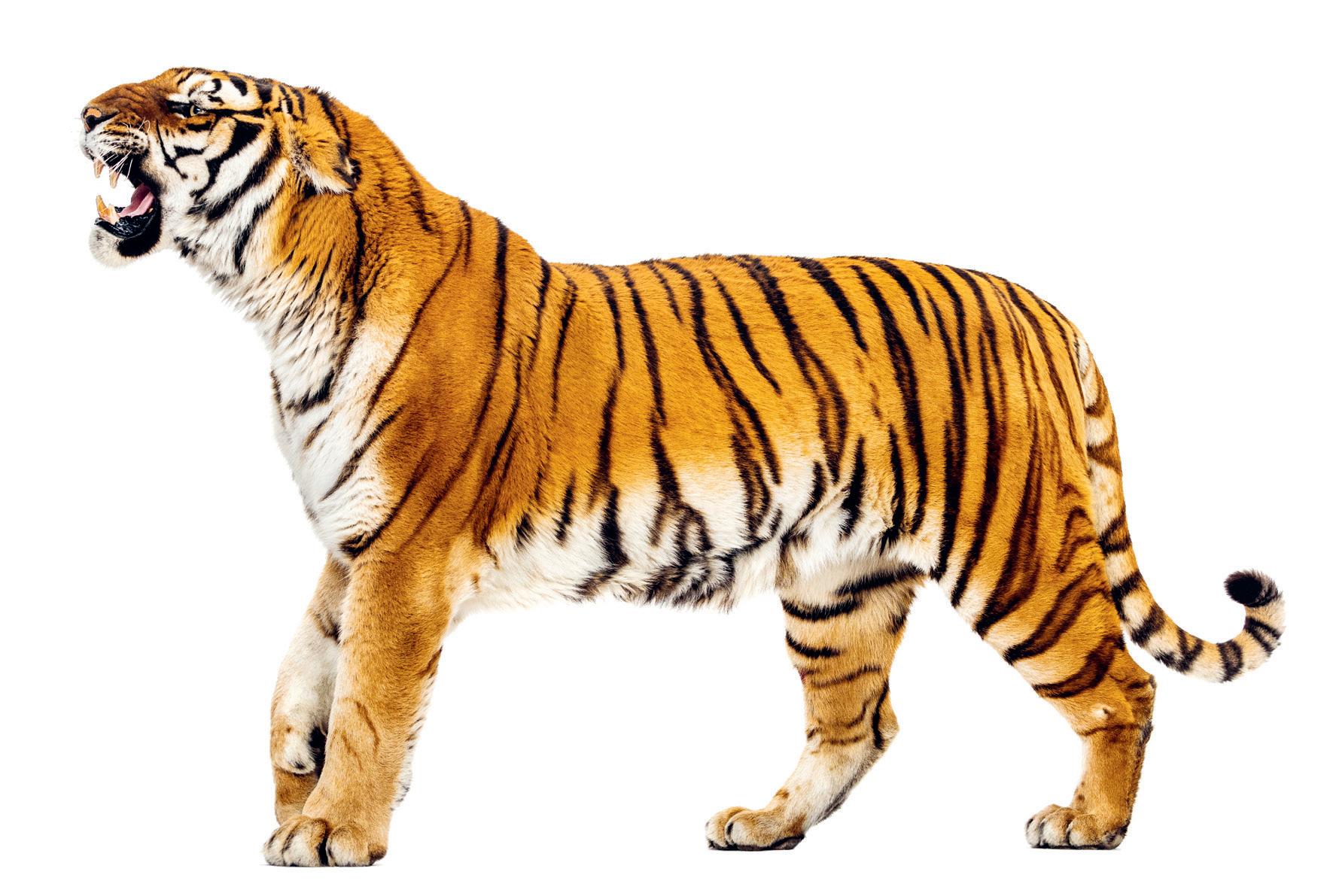


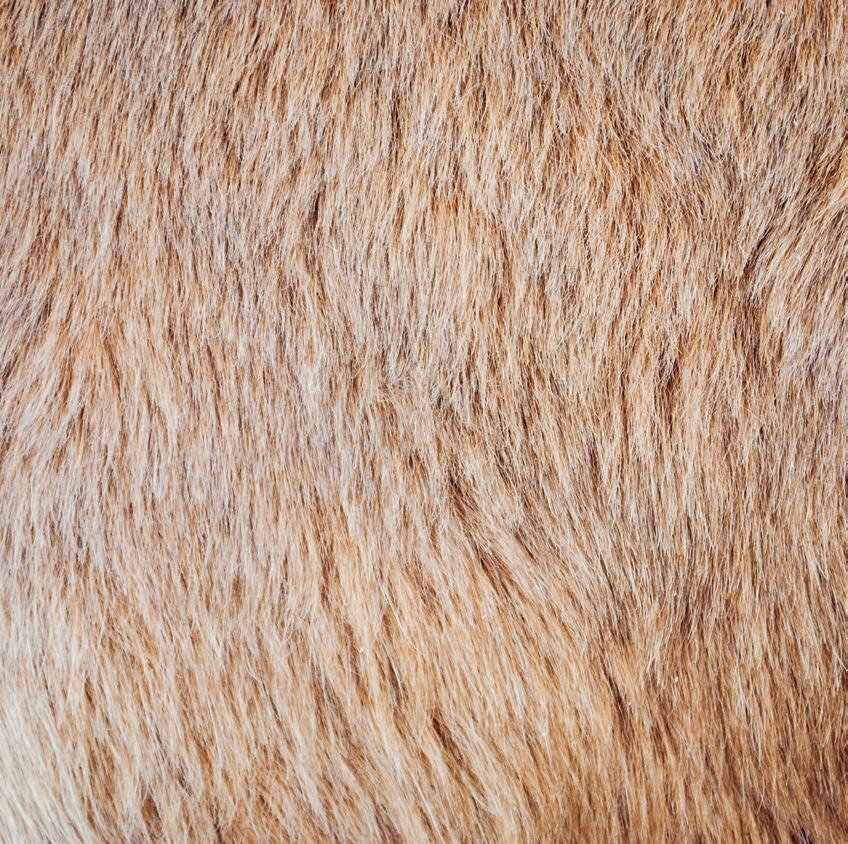
A lion’s roar is 114 decibels. It can be heard from up to 5 miles (8 km) away!

Although you may have been given a different impression by a famous Disney film, there is no ‘king’ of the lions. Lion groups, called prides, have a social order within them, but no pride is dominant over the others. A pride usually has 2–3 grown males – often brothers. The largest male is usually the most dominant one.


Almost all lions live in Africa south of the Sahara. But there is one population of about 650 lions that lives in a very small area in and around Gir National Park in the Indian state of Gujarat.
Many people think that only male lions have manes, but in rare cases female lions have been known to develop manes as well.

Lions get most of the water they need from their prey. However, they will often live near a source of water, because that’s where their prey likes to be.
Female lions, called lionesses, do most of the hunting for the pride. Lionesses are slimmer and run faster than male lions. They hunt at night in groups, stalking wildebeest, antelopes, zebras and similar prey.

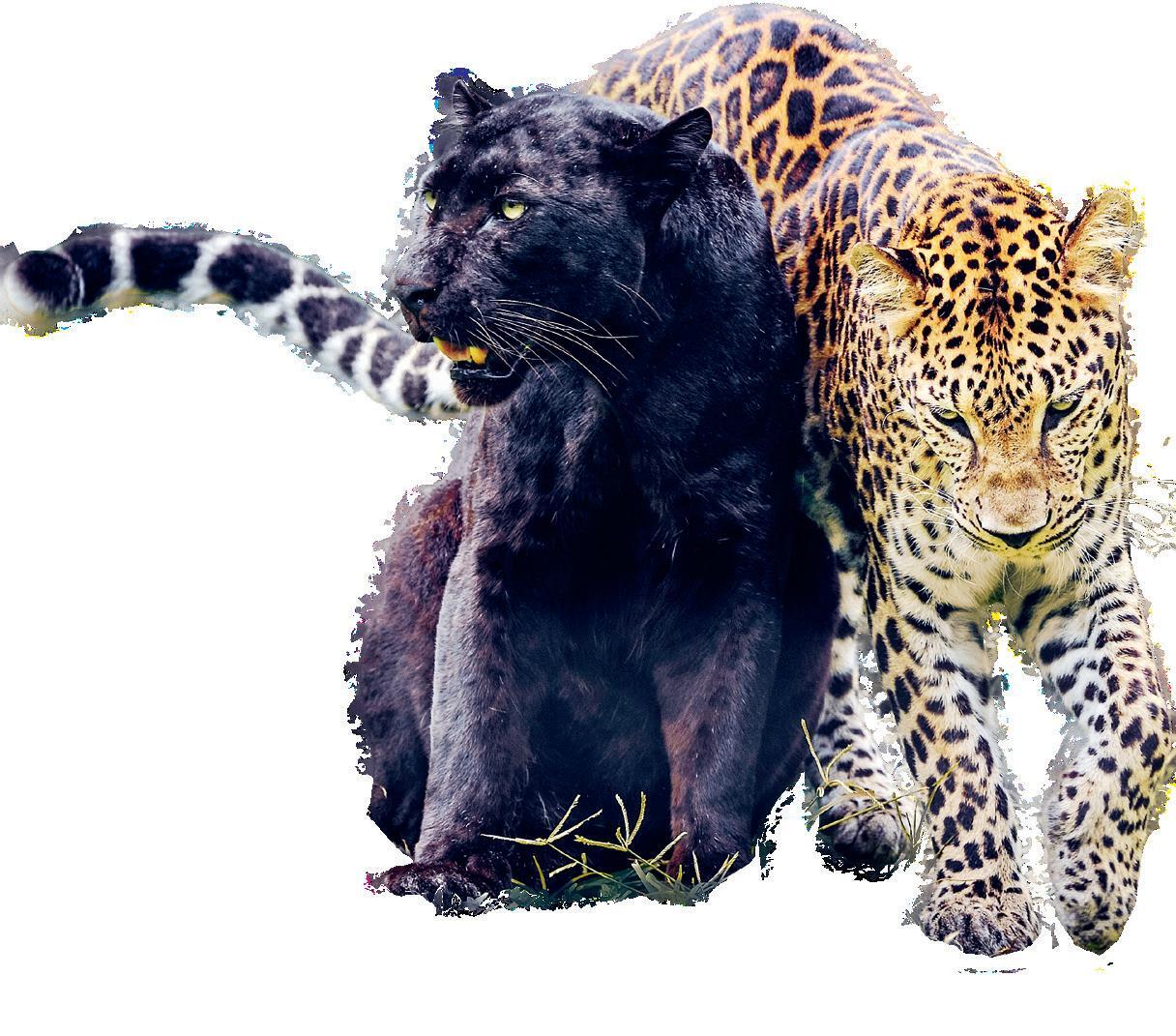

All big cats aside from lions are mostly solitary, which means they live alone. But cheetahs have their own way of doing things! Adult female cheetahs are solitary except for when they are mating or raising their cubs. Adult male cheetahs form groups called coalitions, usually made up of two or three brothers. They claim a territory where they live and hunt together.

Scientists used to consider only cats that could roar to be ‘big cats’. Those cats were all in the genus Panthera. They included the tiger, lion, jaguar and leopard. The snow leopard is the only cat in the genus Panthera that cannot roar.
Lions are the only big cats that roar often. But big cats make other noises, too, including yowling, hissing, snarling, grunting and chuffing.
Cheetahs chirp! Among their many sounds, cheetahs make a noise that sounds a lot like a bird.
Smaller cats, like house cats, can purr, while big cats cannot.
Scientists aren’t sure why smaller cats have evolved to do this.
You may be surprised to know that black panthers are actually not a separate species of big cat. They are colour variants of leopards and jaguars. Black panthers have a colour mutation that makes their fur look dark brown or black. Sometimes they appear to be fully black, but if you look closely you can still see the distinctive patterns, called rosettes, on their fur. The mutation that causes the dark colour, called melanism, occurs in about 10 per cent of both species.
5 4 6
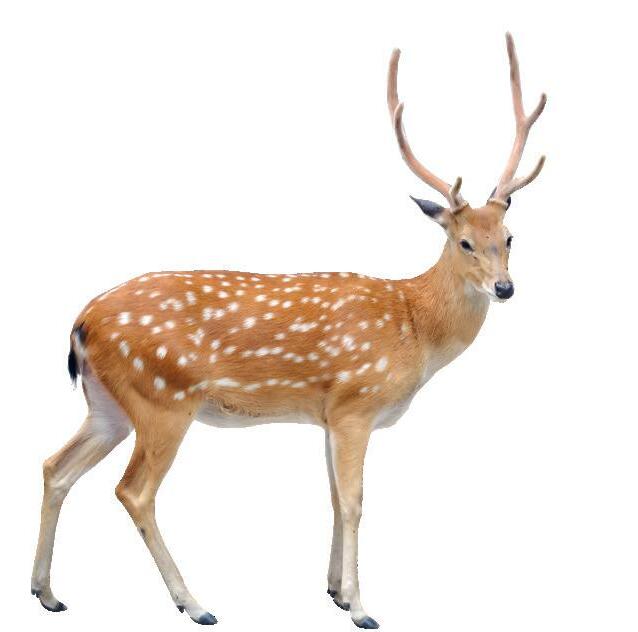
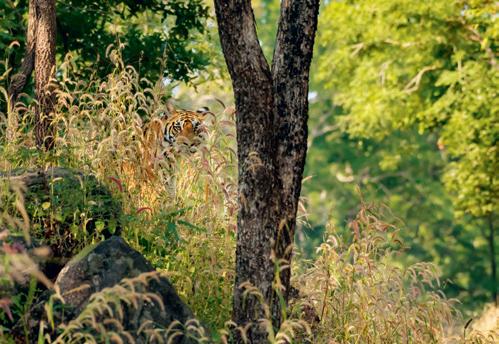
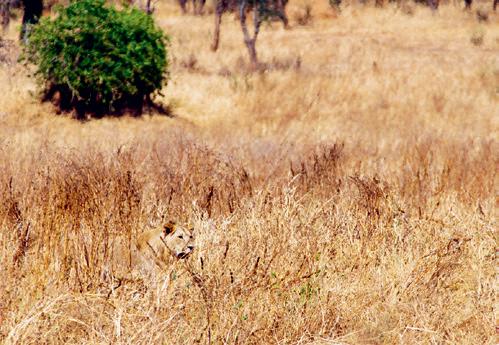
You might wonder how tigers sneak up on their prey in the jungle – they are bright orange, after all! But we humans see tigers differently to the way other animals do because of the way our eyes work. The tigers’ main prey don’t see tigers as orange; they see them as green. That means tigers are very sneaky indeed among all the grass and bushes. As for why tigers didn’t just evolve to be green, there is no known biological way for fur to be green, aside from growing algae on it!
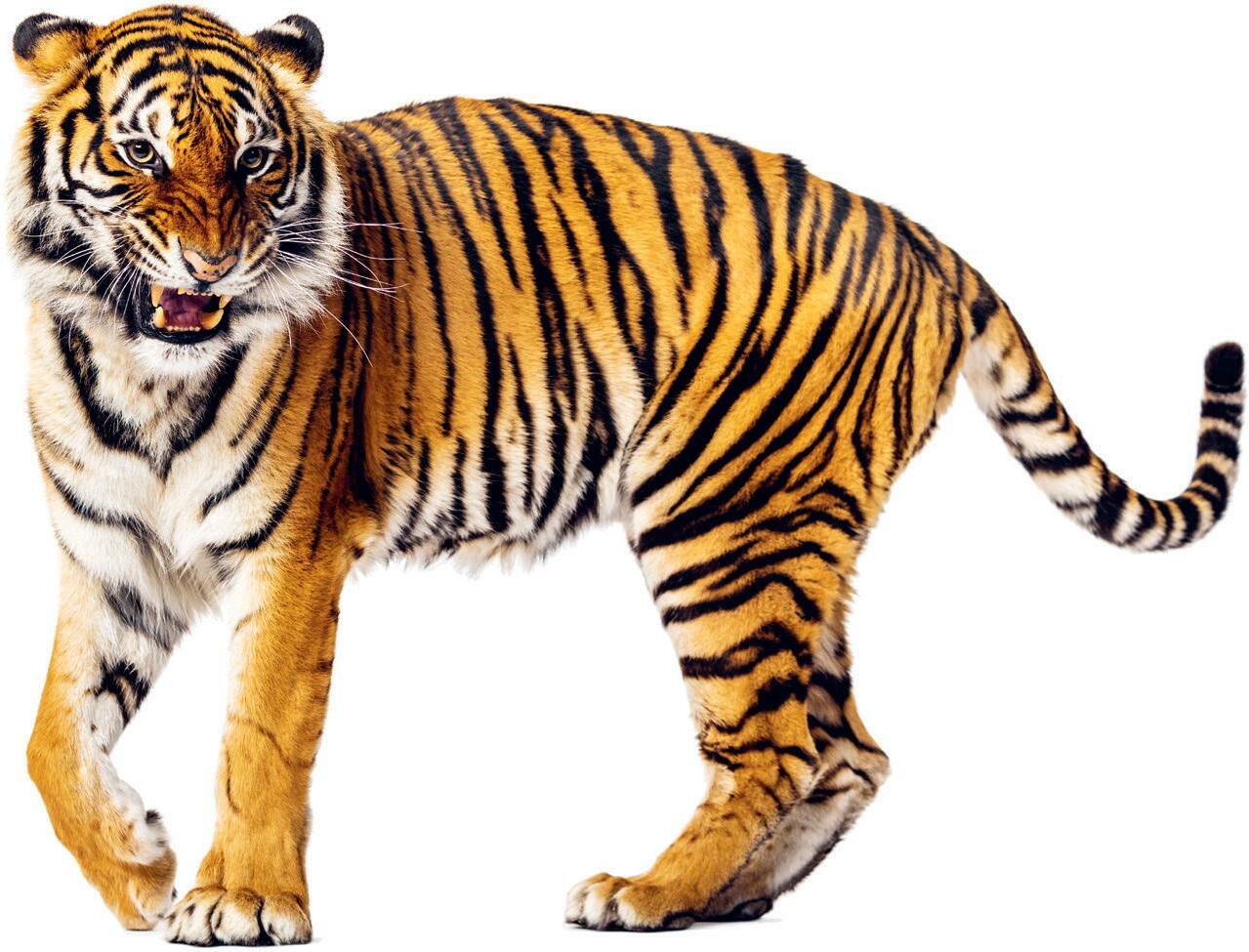
Relative to its size, the jaguar has the strongest bite of all the big cats. Its jaw muscles are slightly stronger and its jaws give better leverage (for its size) than those of other big cats. It can easily bite through the skull of its prey!
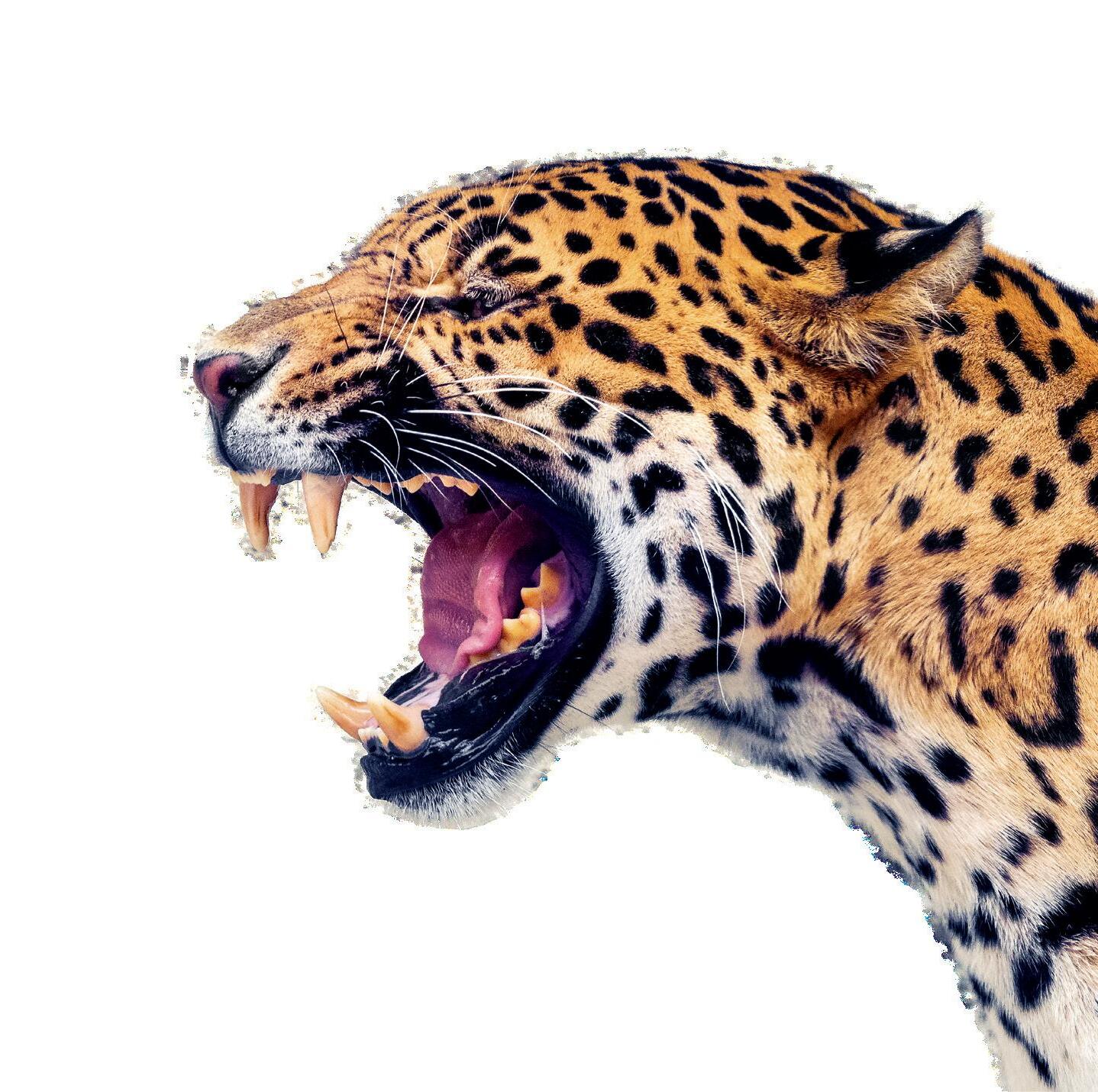
Some big cats like catnip, just like small domestic cats do. Whether or not a cat – whatever its size – likes catnip is determined by genetics.
All cats are members of the scientific family Felidae. Cats come in many different sizes, shapes and colours, and there are more than 40 species of cats in the world, including all the big cats and house cats.

Big cats, like pet cats, like to play and to hide in things. As you can see from the picture below, big cats in zoos like sitting in cardboard boxes just as much as domestic cats!
 SAVANNAH SNEAKER
This deadly big cat hunts among the dry grass of the African savannah.
LURKING IN THE LEAVES
This big cat lives in a variety of habitats, including forests, grasslands and taigas.
JUNGLE JUMPER
This big cat is mostly found in the tropical rainforest of the Amazon.
SAVANNAH SNEAKER
This deadly big cat hunts among the dry grass of the African savannah.
LURKING IN THE LEAVES
This big cat lives in a variety of habitats, including forests, grasslands and taigas.
JUNGLE JUMPER
This big cat is mostly found in the tropical rainforest of the Amazon.
Big cats are found all over the world, although some of them prefer more specific habitats than others. Pumas, for instance, live in mountains, forests and even deserts throughout the Americas. Snow leopards, on the other hand, are found only in the mountains of Central Asia.
Use the map key below to find out where big cats live.
The puma has the biggest range of any land mammal in the Western hemisphere. It can be found in more than twenty different countries, from Canada in North America all the way down to the southern tip of South America in Chile.
India has a variety of different habitats, which makes it perfect for many kinds of wildlife. It is home to fifteen different species of wild cat. That’s 40 per cent of all cat species in the world! Big cats that live in India include the tiger, snow leopard, lion and leopard. The clouded leopard, sometimes counted as a big cat, lives there too.
ThereTigersareendangered. captivityaremoretigersin StatesintheUnited thanlive inthewild.Pantheratigris



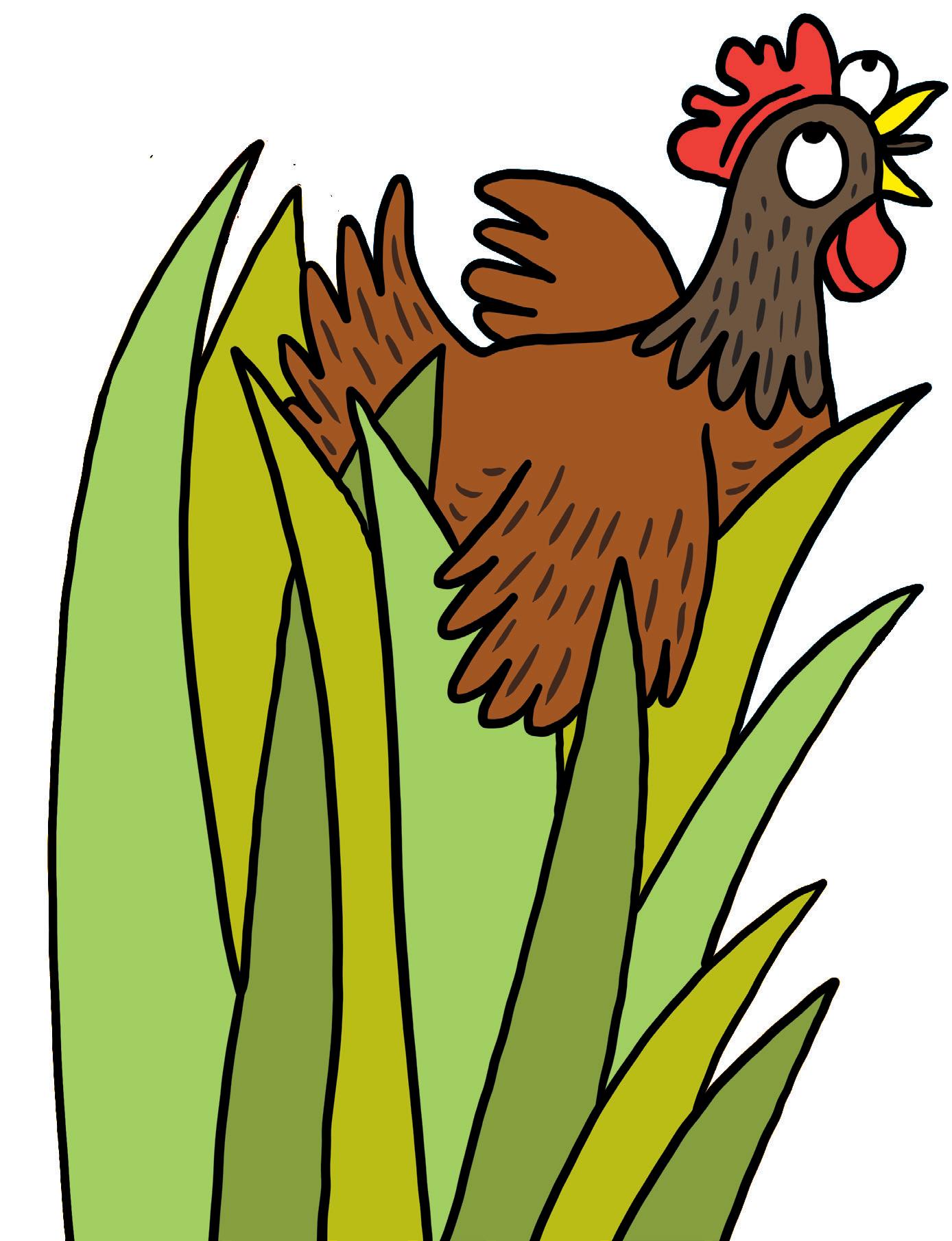

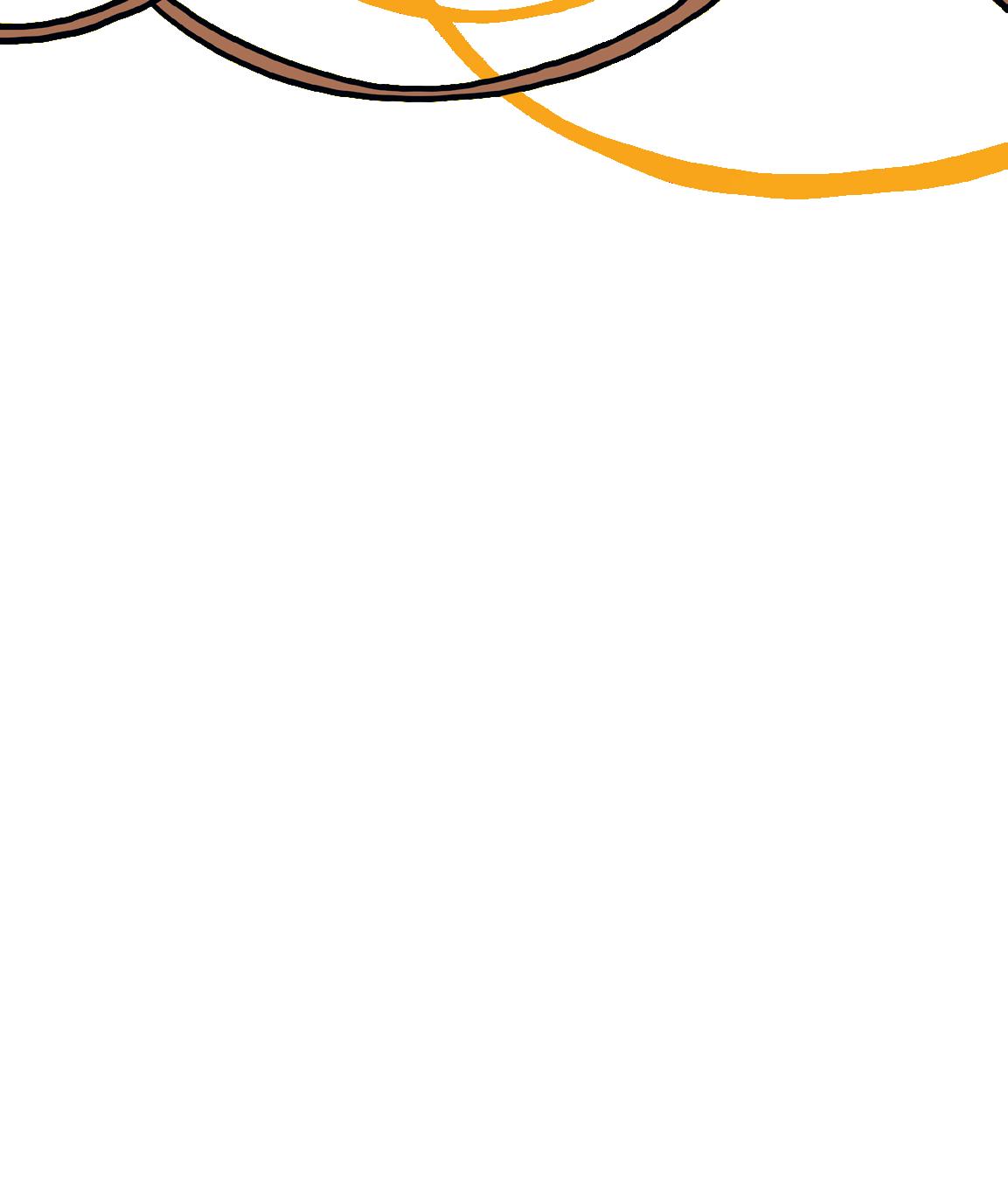
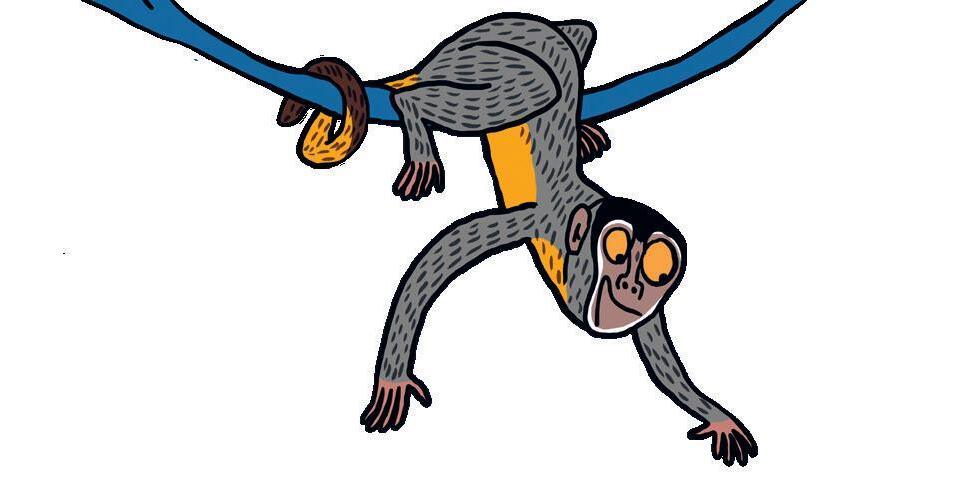 By Dr Nick Crumpton Illustrations by Adrienne Barman
By Dr Nick Crumpton Illustrations by Adrienne Barman
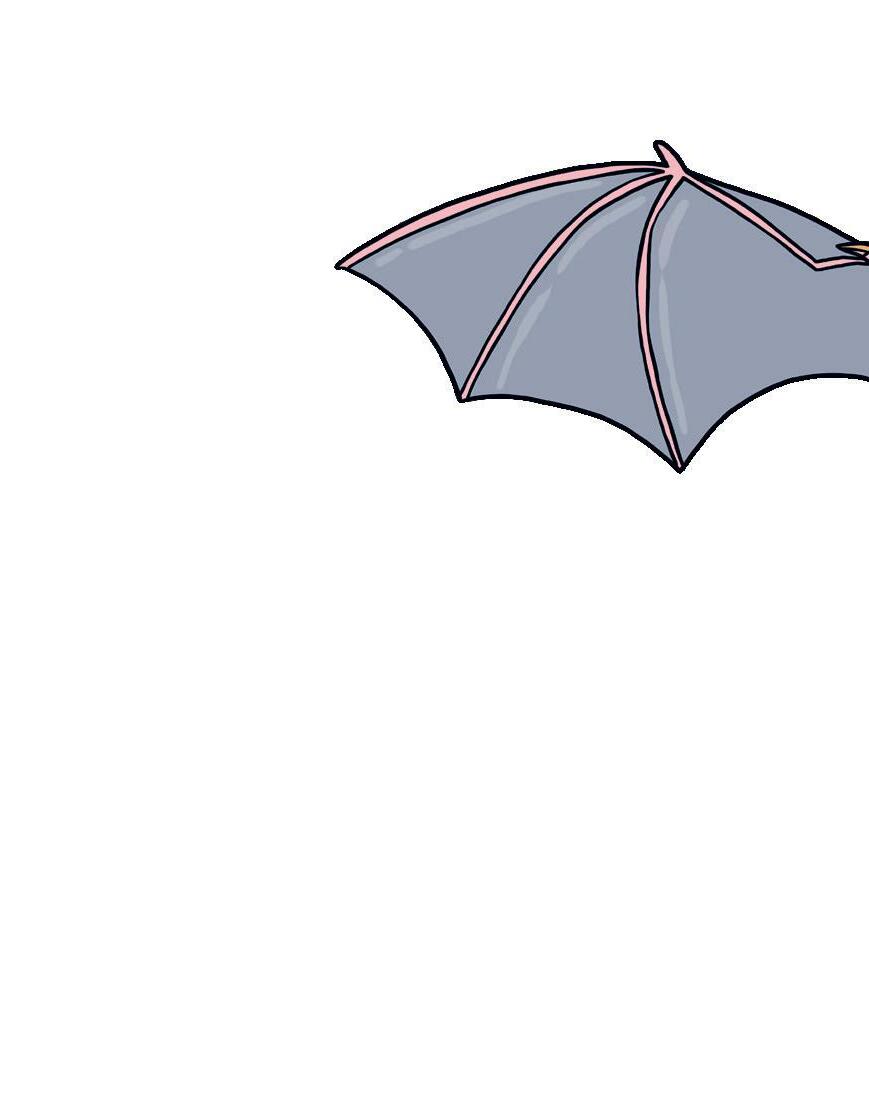
Have you ever wondered what your pet cat’s miaow means? Or what a firefly’s flash is signalling? Our animal expert Dr Nick is here to help!
Animals communicate for lots of different reasons: to ask for food or make friends, or to defend their territory or find a mate. Animals don’t talk with words in the same way humans do. But they do often use sounds, movements or even smells to get their point across.
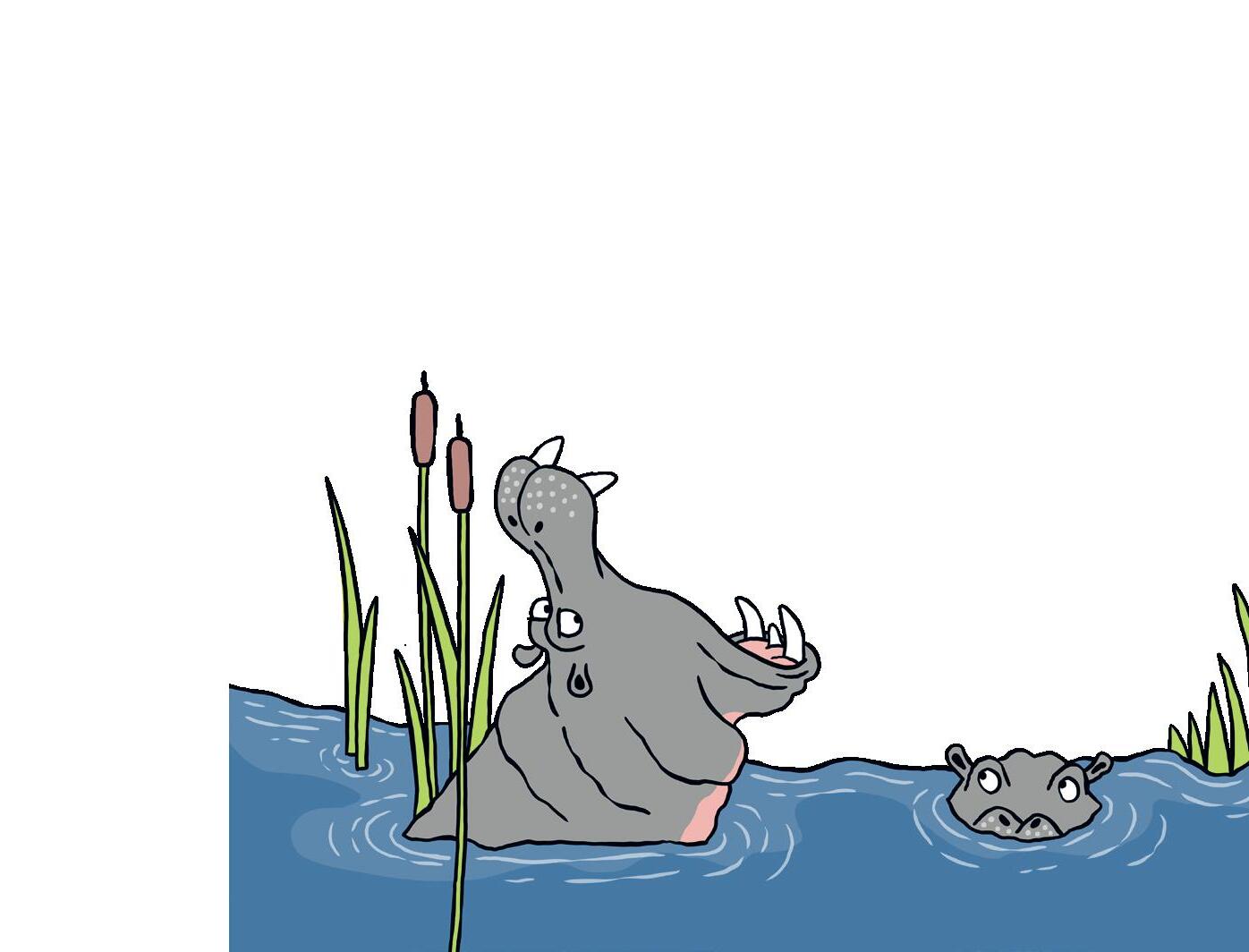
Join us as we journey through the animal kingdom and learn how to chat with chickens, gossip with gorillas and have discussions with dogs. Each month you’ll learn some cool animal noises and other ways animals communicate, as well as their translations. Why not try them out for yourself as you go, to really get in touch with your wild side?

Continued on next page
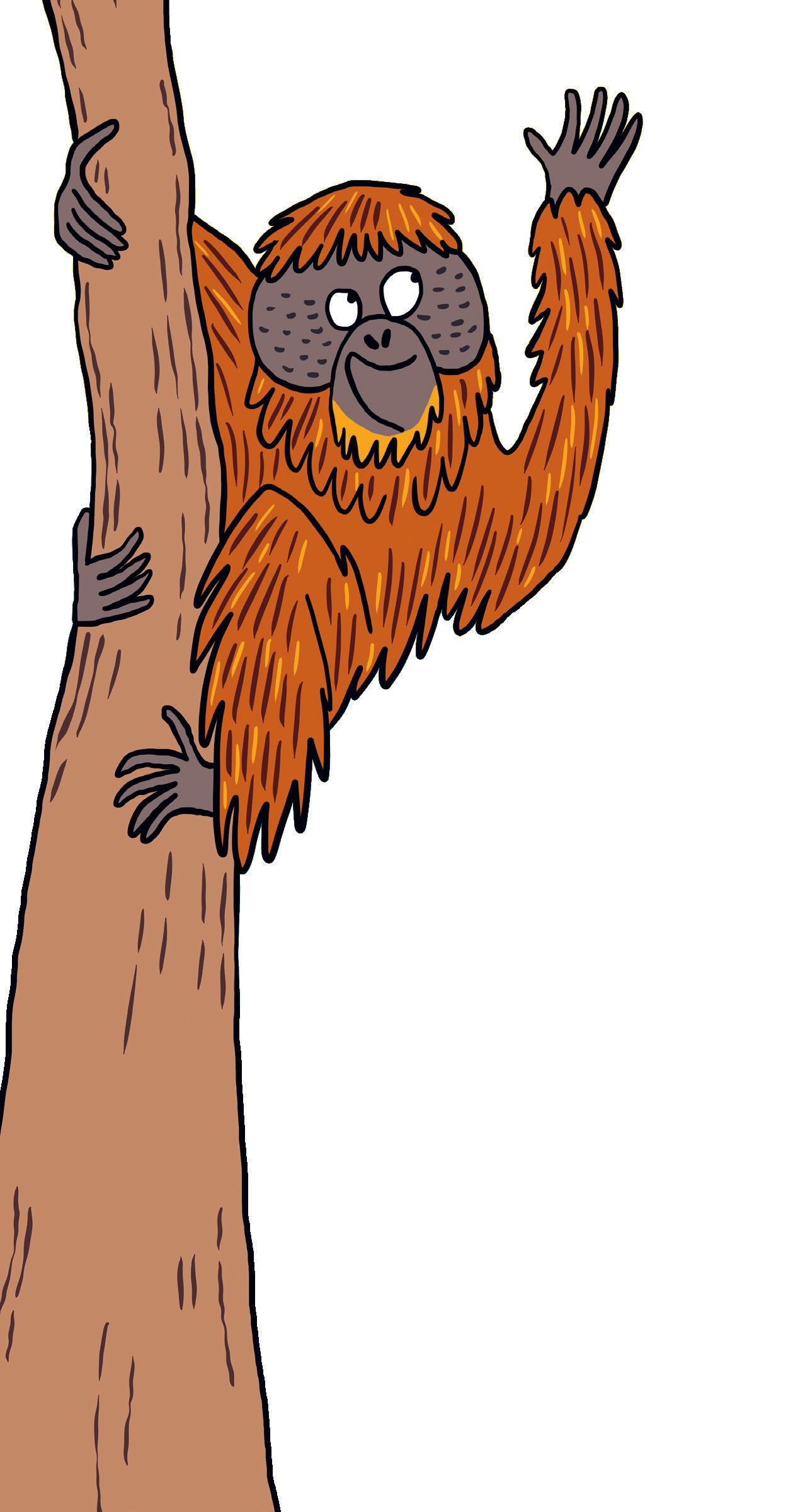
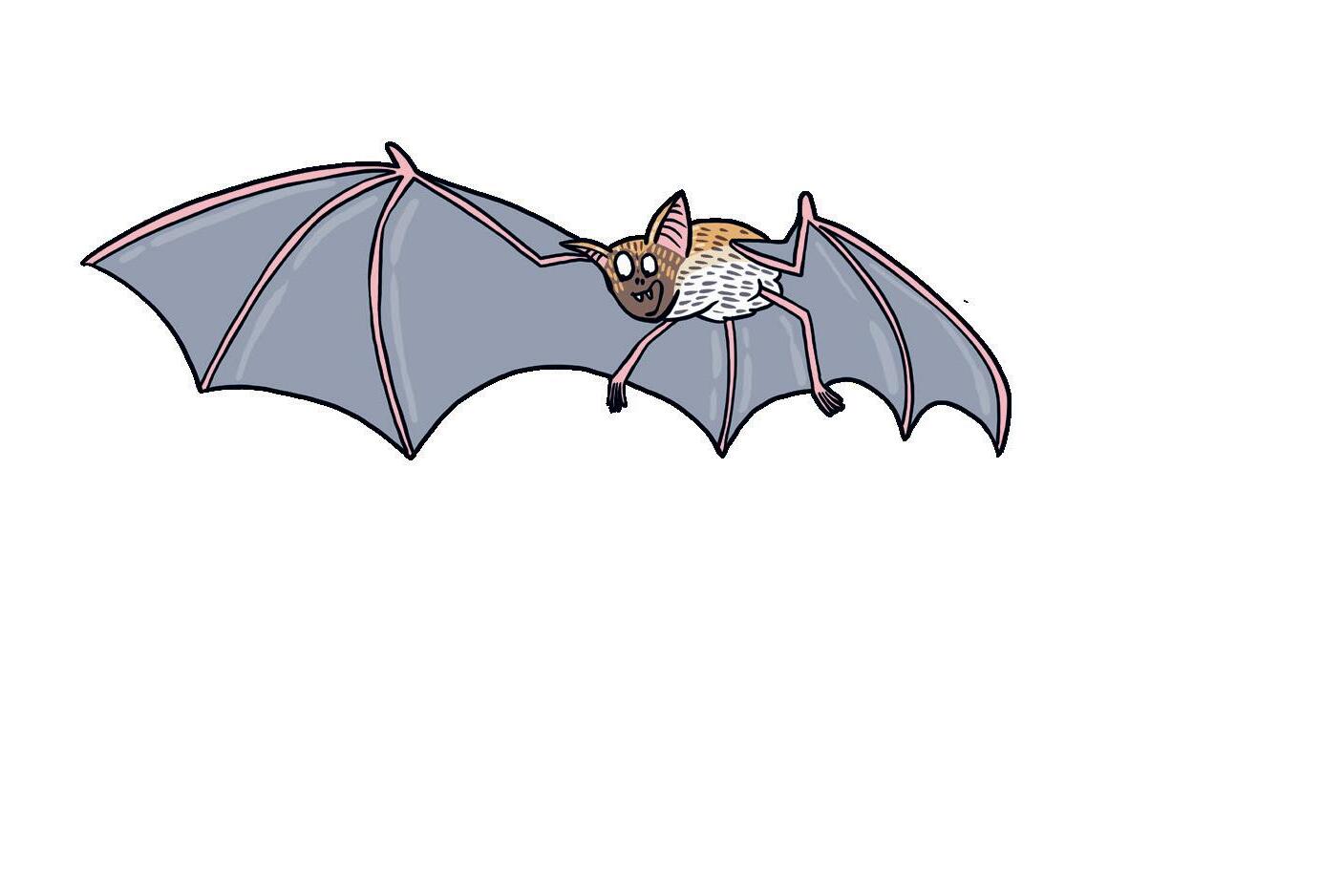
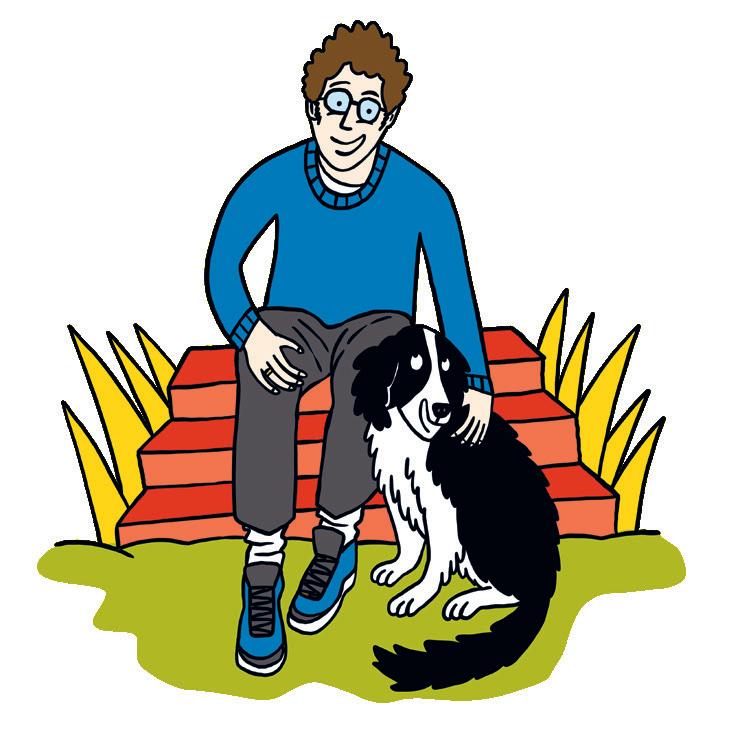
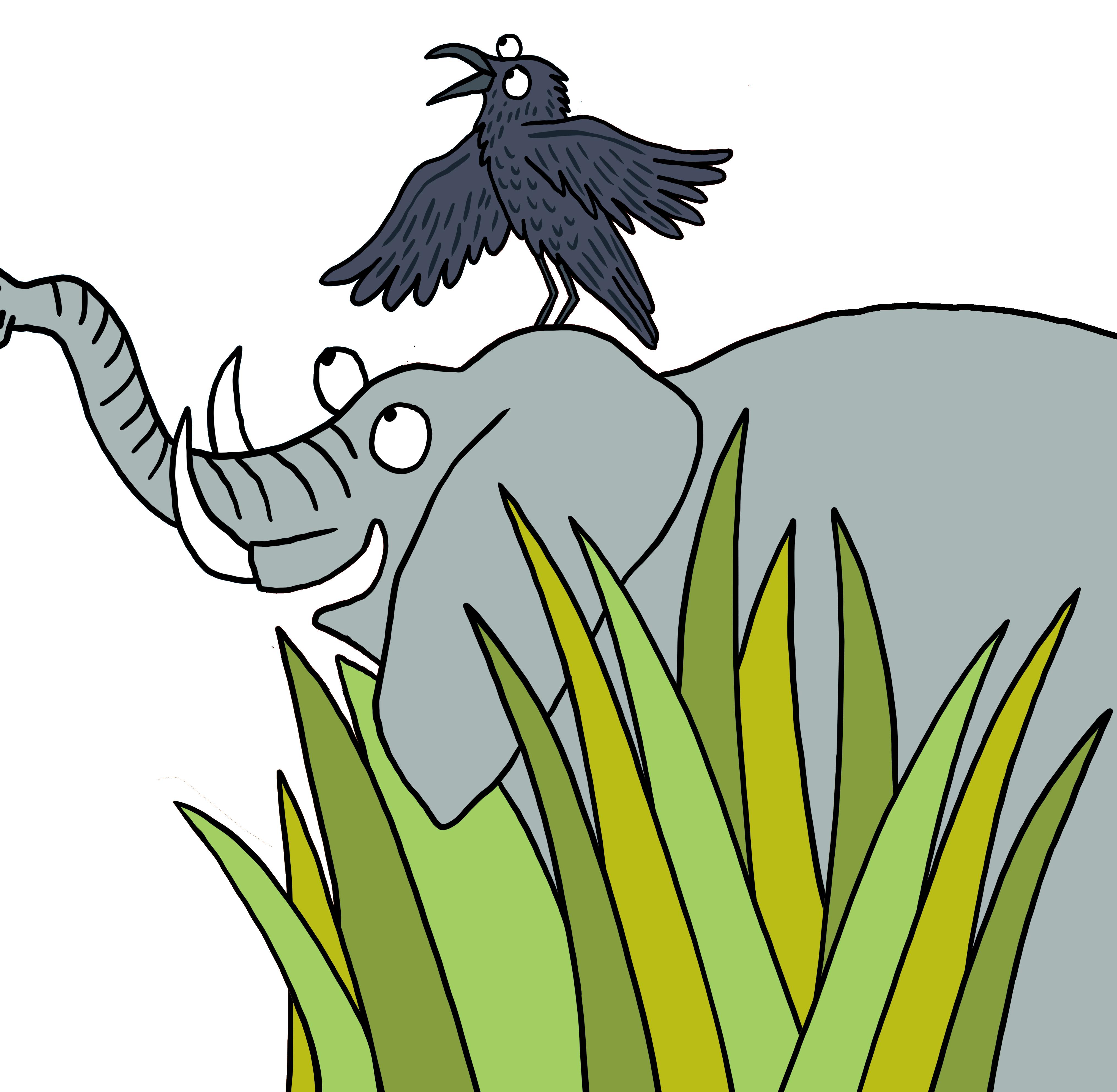

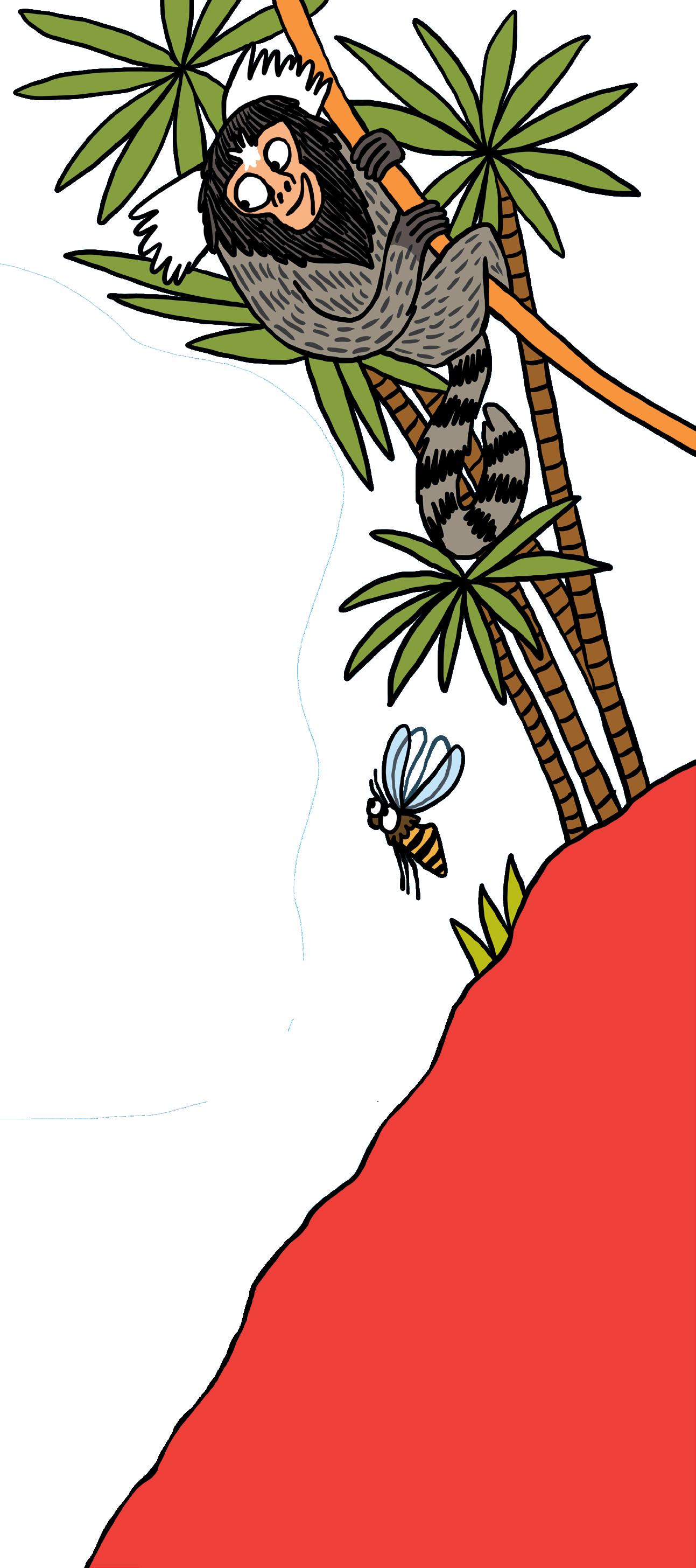
Dr Nick Crumpton is your tour guide through all the various ways animals communicate with each other. He is a children’s book writer and zoologist from London who has been studying animals for many years. Dr Nick now works at the Natural History Museum in London, where he is continually inspired by the amazing scientists who work there and the mind-blowing specimens kept behind the scenes. He loves hanging out with his partner’s family collie Isla, and right now his favourite animals are sharks (although he might change his mind next week…).

You might have heard hens go ‘boouuuaaaak’ and roosters go ‘eaaurg kegh-ahhh oo-OOOO!’ But there are lots of other sounds that are useful to learn if you want to chat chicken.
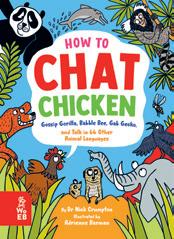
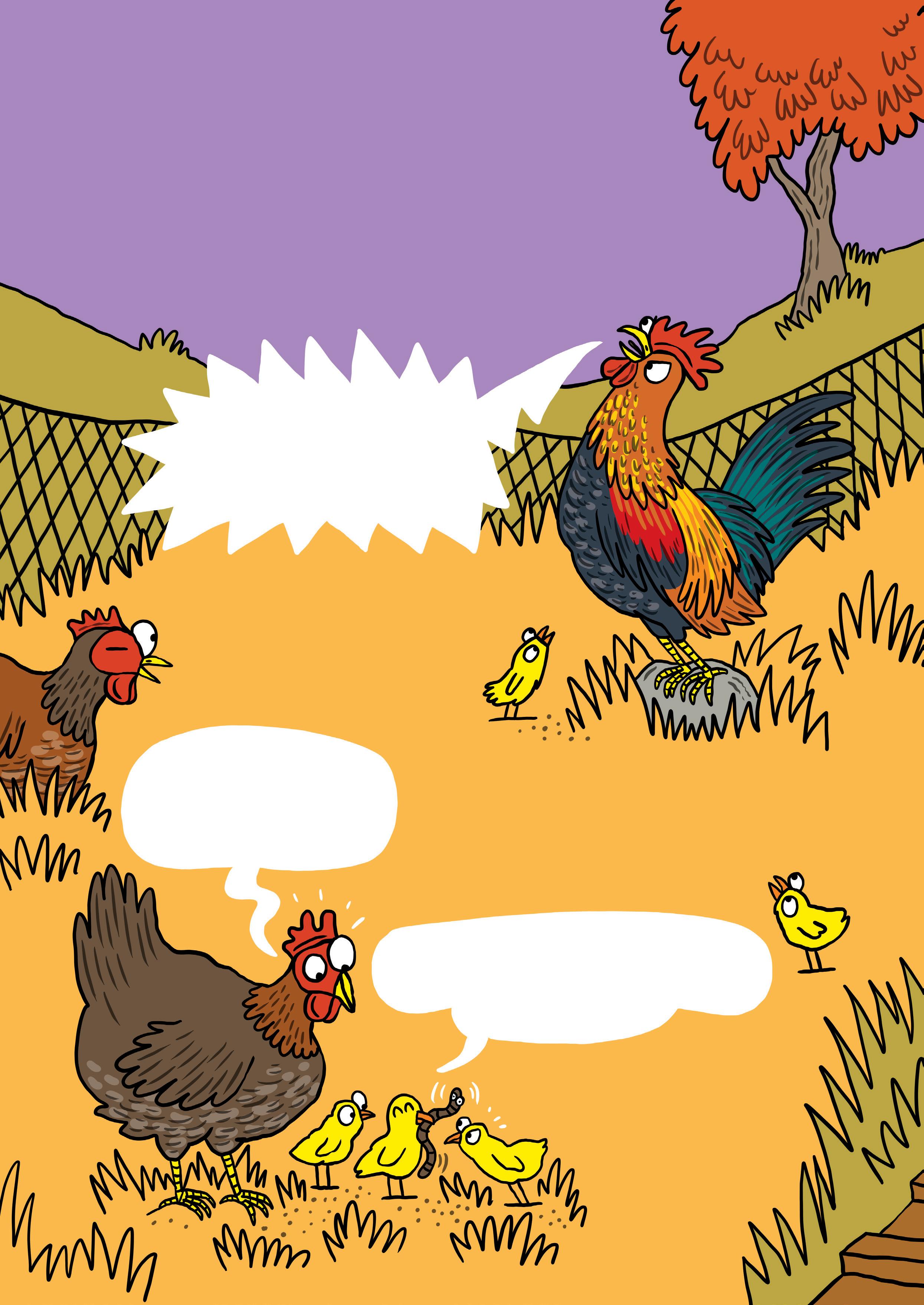
(Danger in the sky!)
The top chicken, or rooster, alerts everyone else to watch out if they spy danger. The sound can change depending on where the danger is.
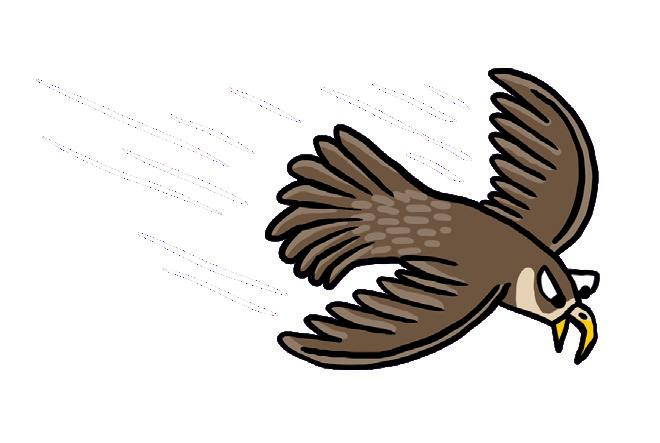
(I’m happy )
When chickens are comfortable and feel safe, they purr or murmur. Mother hens also use this sound to call their chicks.
(This is tasty!)
This sound is made by chicks when they are feeding. It means they’re enjoying their food.
(Danger on the ground!)
(Move please, I need that nest!)
There are only so many spots in which to lay an egg, so sometimes hens need to share. However, they’re not always happy about it!
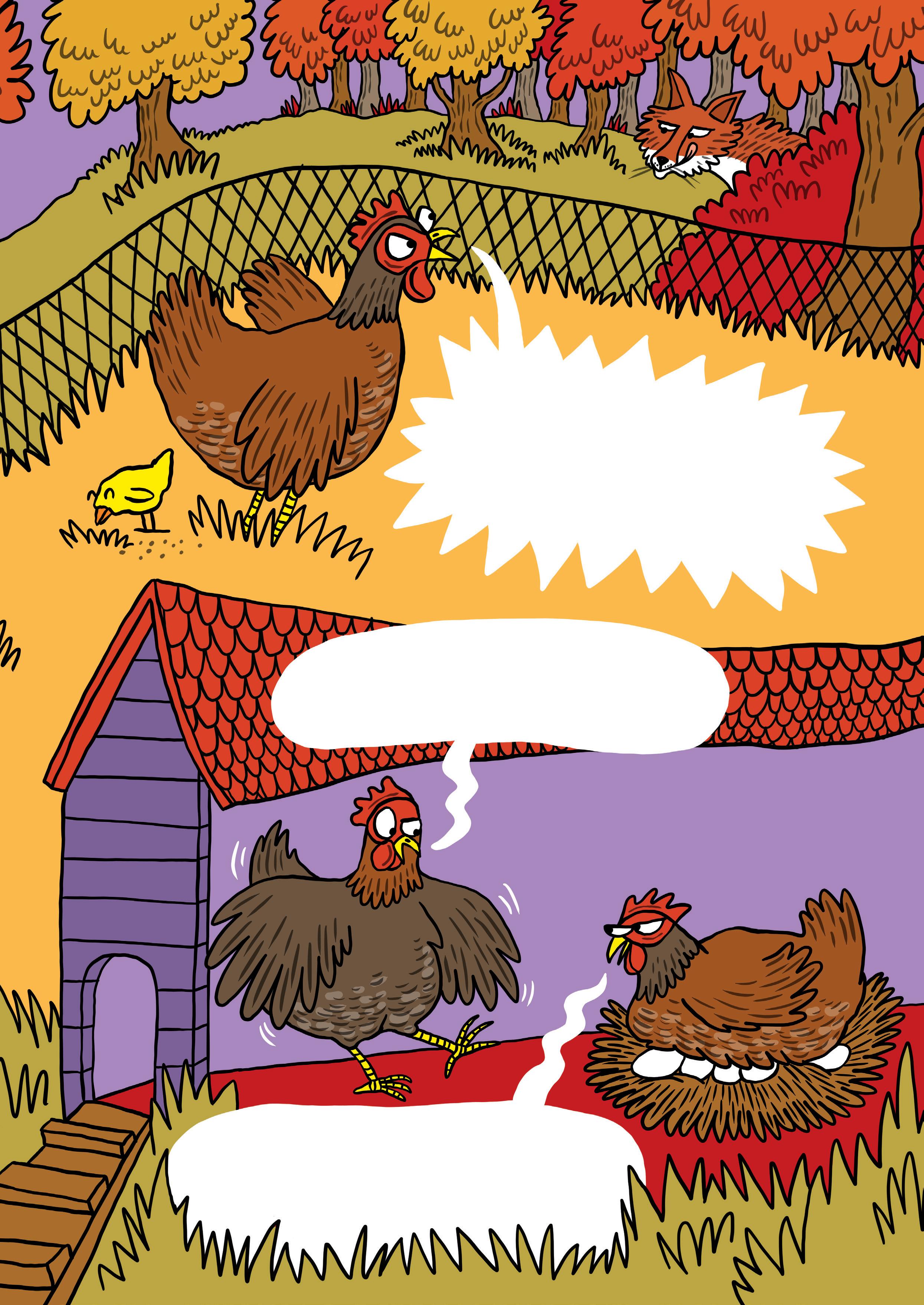
R R R R R R R RRR
(Get away from me and my eggs!)
We humans are a very visual species. Did you know that around 70 per cent of the way our brain perceives the world is visual? Or that people can identify a picture of a familiar object in just 13 thousandths of a second?
This is what makes infographics so powerful. An infographic reveals information using pictures. Most infographics represent collections of facts, which we call data. Showing data in pictures helps us to understand information at a glance – and can even make us go ‘Wow!’
You have probably already seen infographics such as maps, charts, graphs and timelines in your daily life or at school. In this feature, we’ll dive deep into data about our universe. Some of the graphics are worth taking time to explore, but others you will pick up in the blink of an eye!
We all see and use infographics every day, even if we don’t realise it! Many people use maps to help them plan their travel. The maps above show the London Underground. Compare the two maps: the top map is an early Tube map from 1908 which follows the geography of London, and the bottom one is similar to the map in use today. Which do you like better? You might notice that the second map doesn’t line up exactly with what is shown on the geographical map. The designer, Harry Beck, based this clean and easy-to-understand design on circuit diagrams! It uses bright colours and straight lines, which make it much easier for people to understand at a glance.


How amazing information about our world – and beyond! –can be brought to life by fascinating infographics.
The human brain processes images many times faster than it does text!
In fact, studies have shown that even when reading text the brain is recognising the shape of words to help you read faster. That’s why it’s relatively easy to read jumbled-up text as long as the letters are in roughly the right place. See how you get on with this:

If you can raed tihs, yuo’re wlel on yuor way to tihikinng in pcituers. Wlel dnoe! Trun the pgae to tset yuorslef on yuor inofgarpihc raednig siklls.
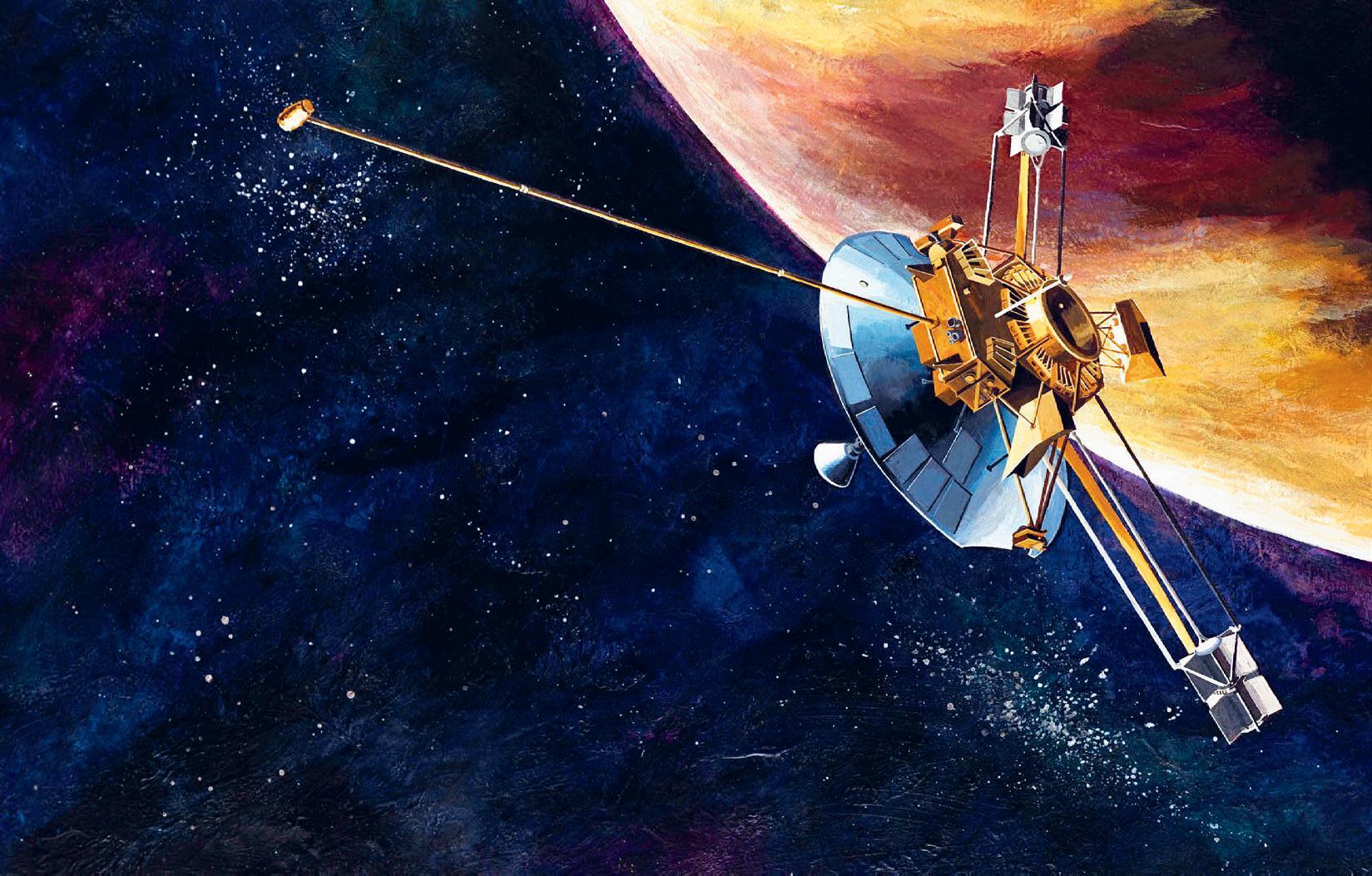
When space scientists were thinking of the clearest and simplest way to communicate with alien lifeforms, they decided to use an infographic! This simple map of the solar system was placed on board NASA’s Pioneer 10 spacecraft, inscribed on a gold-plated plaque. It shows Pioneer 10 travelling on its path from Earth between Jupiter and Saturn. Scientists hoped that if aliens ever found the spacecraft, they would understand where it came from. So far, however, we’ve yet to hear back…
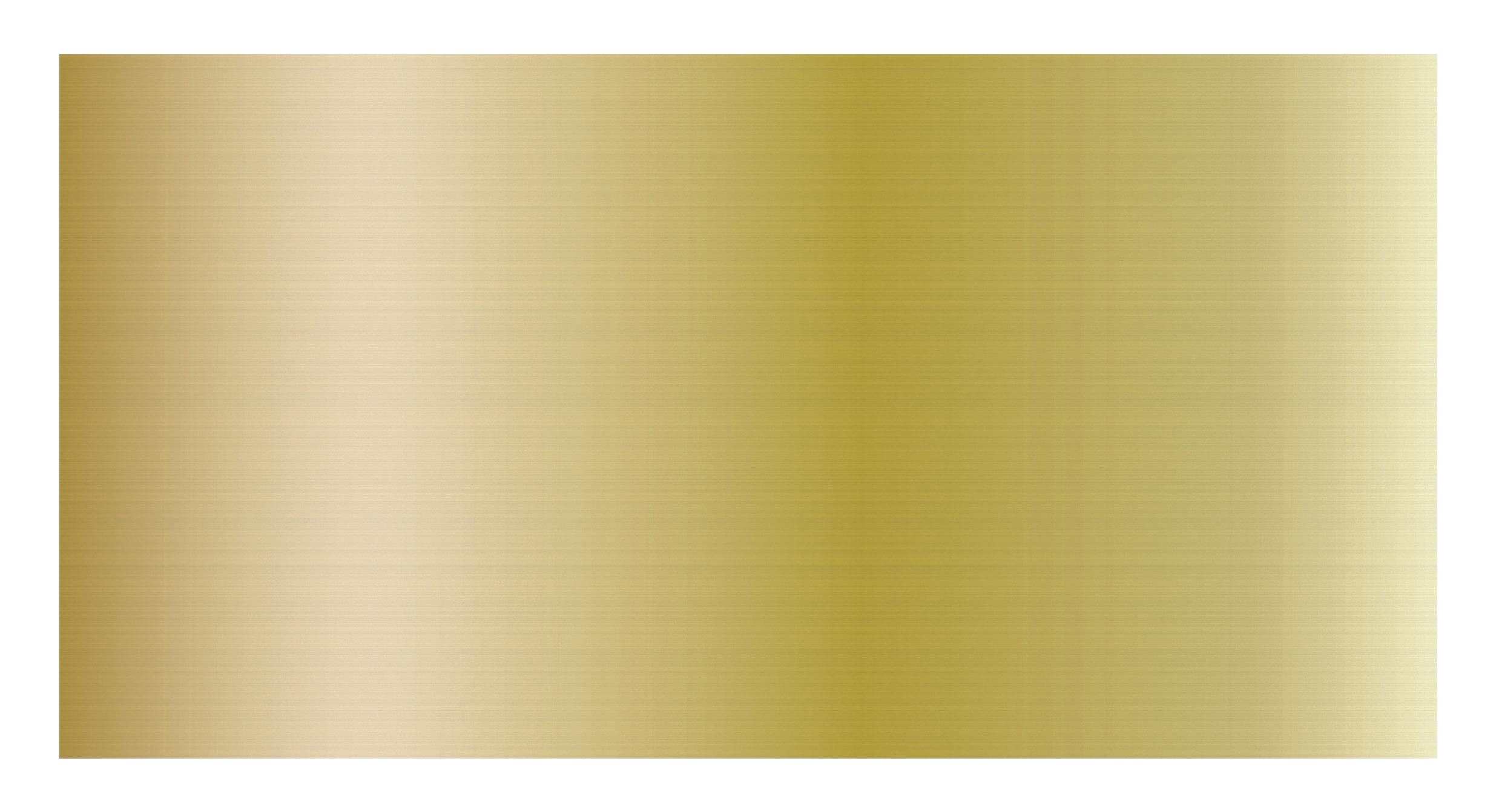
Infographics are used to organise and present all sorts of information. Some infographics can be as simple as showing how many of something there are, or the location of things on a map or timeline. Other infographics explore things that are less familiar – for instance, the size of all the exoplanets that have been discovered outside our own solar system. Here are some other methods to look out for.
Infographics can be as simple as showing how many of a certain thing there are. They might also contain extra information, including, for example, what size they are, or what temperature they are, or what they are made of.
All the exoplanets ever discovered are represented by purple dots on this infographic. The size of each dot relates to the size of the exoplanet. (Here, certain planets are highlighted, too, so we can learn more about them.)
Many infographics are about measuring things, such as height, weight, length and speed. Look out for measurements running along the top, bottom, or up the side of charts, and measuring rules that run across illustrations. All of them will show the unit of measurement being used – for example, metres, years, kilograms or percentages.
Some infographics show things ‘to scale’. This means we are not seeing a picture of the real distance or size, but a fixed measurement that represents a much bigger or much smaller size in the real world. For example, scales are often used on maps.
This scale shows that the length of the pink line represents the tiny distance of 0.1 mm. This means that the microscopic animals in this infographic were enlarged to make them visible.
The colours and patterns in infographics can be an important part of the story they’re telling. Look for the ‘key’ on the infographics, which tells you if the colours or patterns represent measurements, such as temperature.
The key objects in this infographic of the ocean are all in orange, so it is easy to compare their relative depths.
The position of items might also be telling you something about their location (such as where things are on a map), timing (such as points along a timeline) or the categories they belong to (such as a family or group).
To give a sense of the circumference of a giant tree trunk, this infographic shows how many children holding hands you would need to hug it!
more than 30˚C
20–30˚C
10–20˚C
0–10˚C
-10–0˚C
-20– -10˚C
-30– -20˚C
less than -30˚C
This chart uses colour to represent different temperatures.
Where two or more things are being directly compared, they might be the same colour. This can make it easier to look at one thing alongside another in a fair way, or to help you notice important information.
This infographic shows where deserts are found on a map of the world. Hot deserts are highlighted in orange, and cold deserts in blue.
How do you make sense of the size of a gigantic tree? Infographics can help us translate these measurements into things that are more familiar to us.
Some infographics include a note, or key, on How to Read It. Where you spot these notes, read them first.
As we stand on Earth, the Moon feels relatively close to us, but it is actually hundreds of thousands of kilometres away. If you lined up the seven other planets in our solar system in a row, they would fit in the space between Earth and the Moon. In fact, in a strange coincidence, they would fit rather neatly!
SCALE 10,000 km
EARTH VENUS
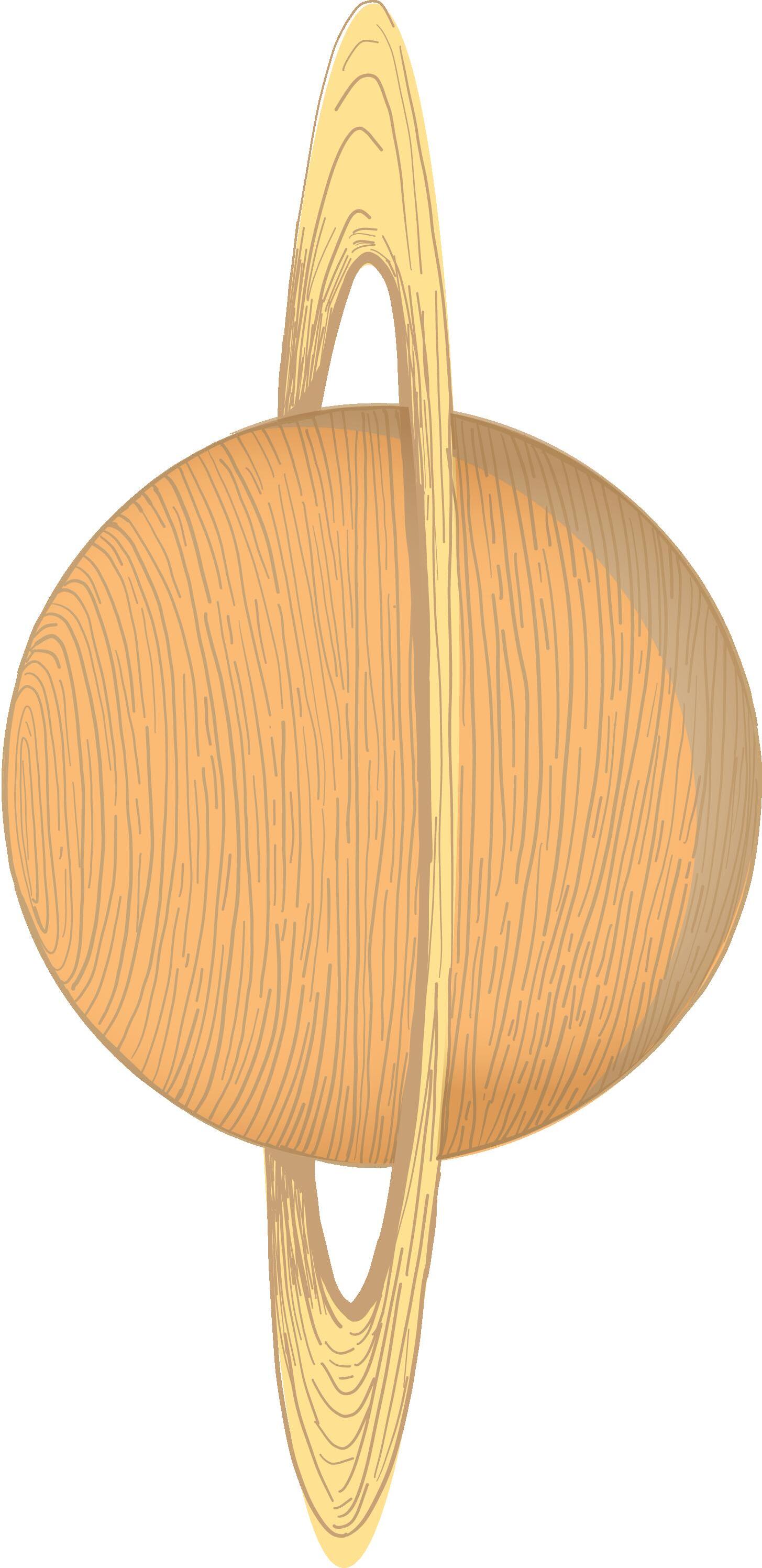
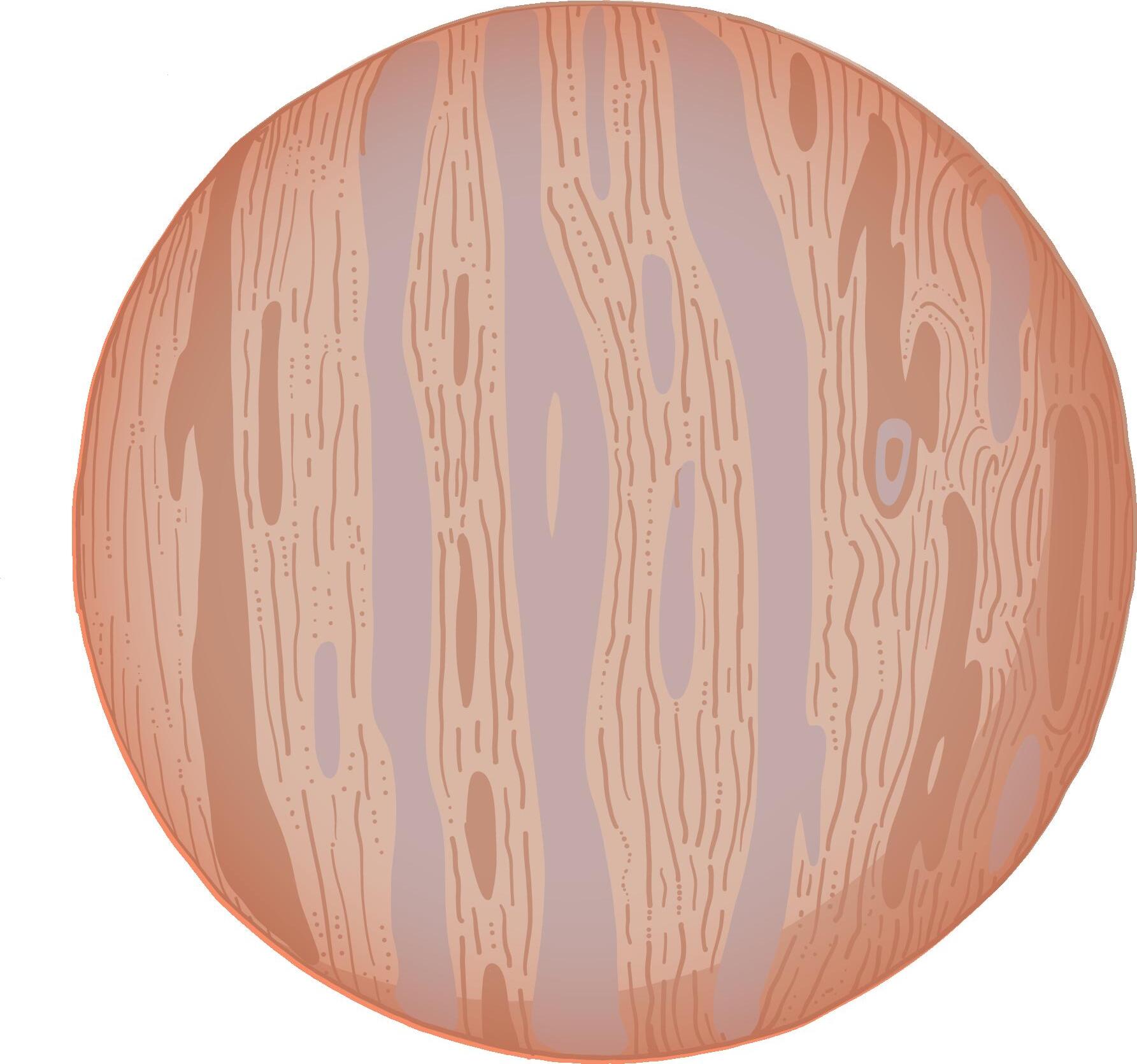
MERCURY MARS
EARTH
Alternatively, you could fit 30 planet Earths in the space between Earth and the Moon!
JUPITERIf you could drive to the Moon at 100 mph, it would take you about 100 days!
About 384,000 km DISTANCE BETWEEN EARTH AND THE MOON
The Moon’s orbit around Earth is not a perfect circle. It’s more like a slightly flattened circle. At its furthest point from Earth, called the apogee, the Moon is 405,500 kilometres away. At its closest point, the perigee, the Moon is 363,000 kilometres away. On average the gap is about 384,000 kilometres. That’s the measurement we’ve used for this infographic.

MOON
Perigee Minimum Moon distance Apogee Maximum Moon distance
MOON
30x Earth

There are more than 1.1 million large asteroids in the solar system. Most of them are located in the asteroid belt between Mars and Jupiter. Asteroids are usually created from the rock, metals and other stuff left over when planets form. Many asteroids are only the size of large boulders, but the biggest can be hundreds of kilometres across.

Ceres is the largest object in the asteroid belt. It is also classified as a dwarf planet, like Pluto. The bright spots on its surface are believed to be salty crusts, left behind when salt water evaporated into space.

Ceres 939 km
525 km
513 km
10
407 km
Diameter in kilometres, km SCALE UK (North to South) 965 km
4 Vesta 2 PallasInfographics have helped people share important information for thousands of years. Here are just a few examples of amazing infographics that shaped the world.
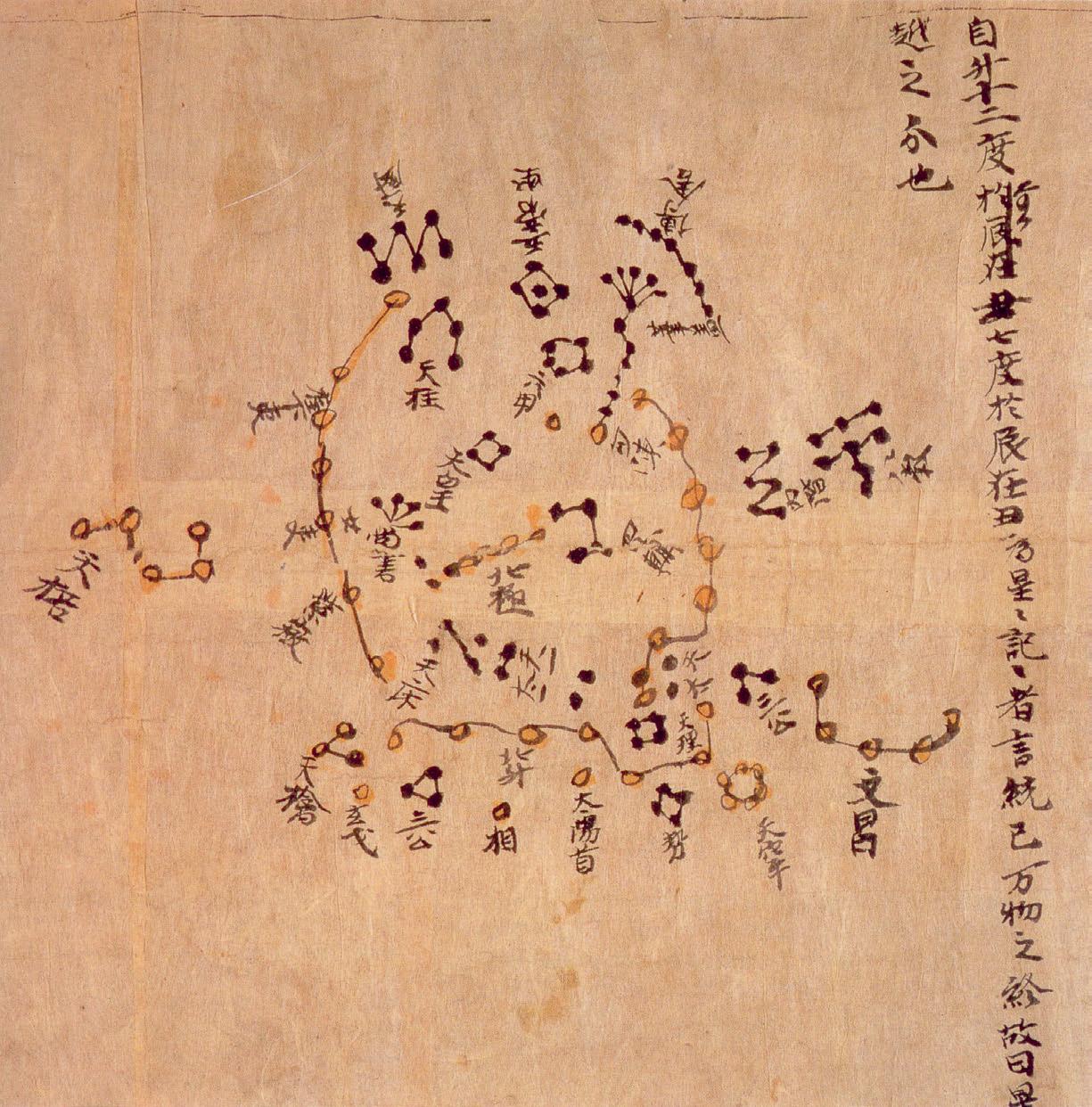
This is the earliest known atlas of the stars, created hundreds of years before the invention of the telescope. It was discovered among thousands of ancient manuscripts in a cave in Dunhuang, China. Find out more at www.bl.uk/collection-items/ chinese-star-chart.
Florence Nightingale’s war mortality diagram, 1858
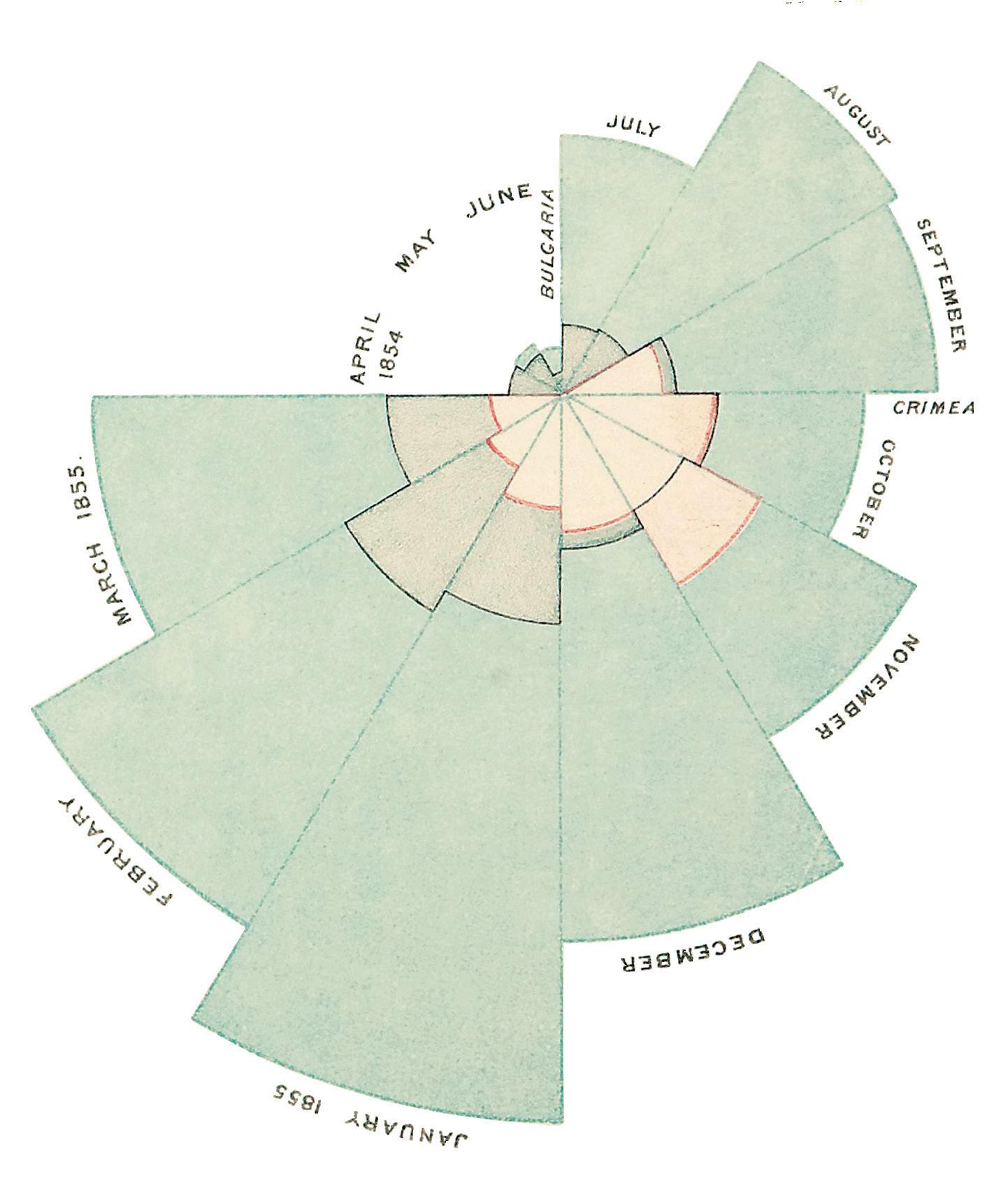
British nurse Florence Nightingale created an infographic called a rose diagram to persuade politicians of the importance of cleanliness and hygiene in hospitals. The improvements in sanitation that she fought for have saved millions of lives. Find out more at www.britannica.com/biography/ Florence-Nightingale.
All the matter in the universe is made from basic chemical elements, and the Russian scientist Dmitri Mendeleev created a system for arranging them called the periodic table. Mendeleev’s table helps scientists to understand how elements behave –and even make predictions about elements we have yet to discover. The modern version of the periodic table is illustrated here. Find out more at www.britannica.com/biography/Dmitri-Mendeleev.
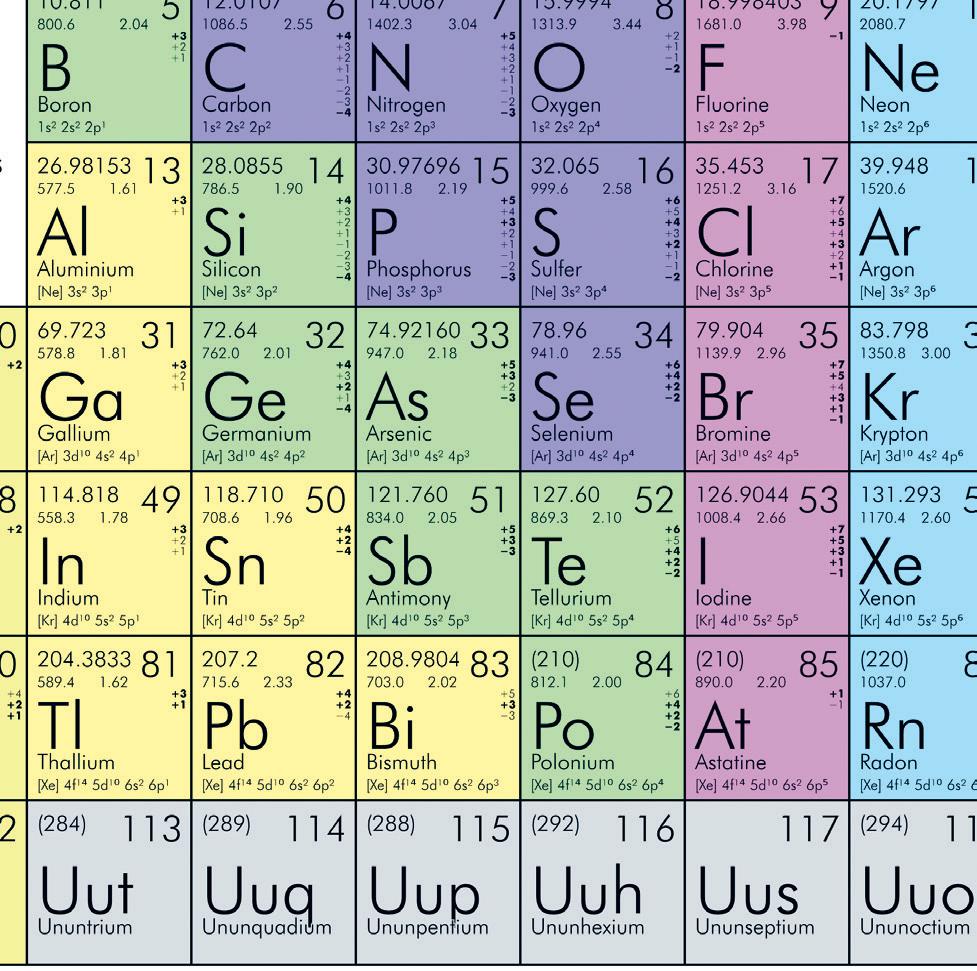
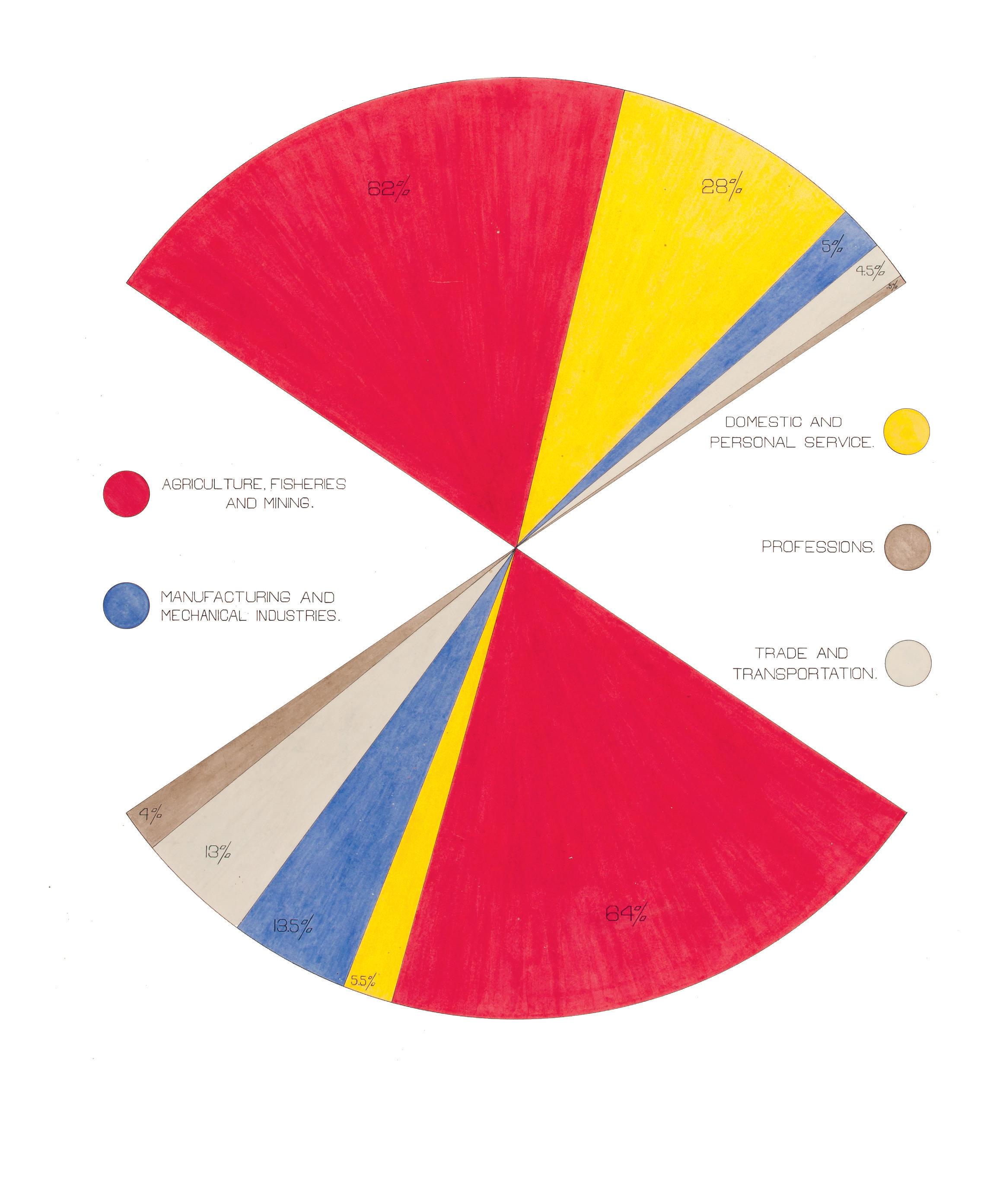
W.E.B. Du Bois was an influential African-American thinker and an early leader of the movement for the equal treatment of Black and white people in the United States. He created around 60 infographics to challenge people’s perceptions of the lives of Black Americans. Find out more at www.tableau.com/blog/ how-web-du-bois-used-datavisualization-confrontprejudice-early-20th-century.
German and Austrian designers Marie and Otto Neurath founded the Isotype Institute, which aimed to educate children using pictures. The Neuraths’ slogan was: ‘Words divide, pictures unite.’ They created beautiful books of infographics that communicate information visually, on topics ranging from how plants grow to the structure of atoms. Find out more at www.marieneurath.org.
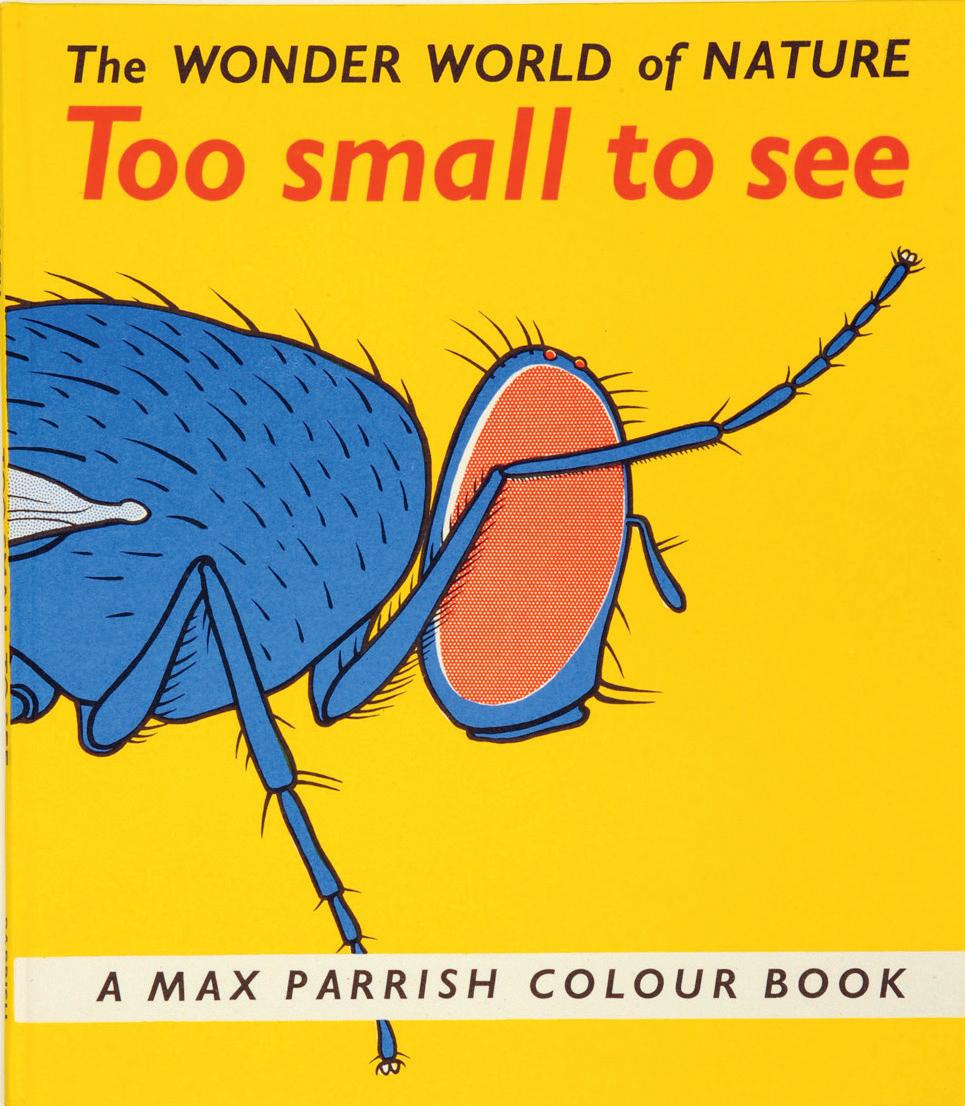
Send an infographic about your friends, family or home to editor@ whatonearth.co.uk for a chance to be featured in the magazine! For a starting idea, maybe you could create a chart of your family’s hair colours, or a map of where your pets sleep? Our favourite design will win a signed copy of the new book, Britannica’sEncyclopedia Infographica!
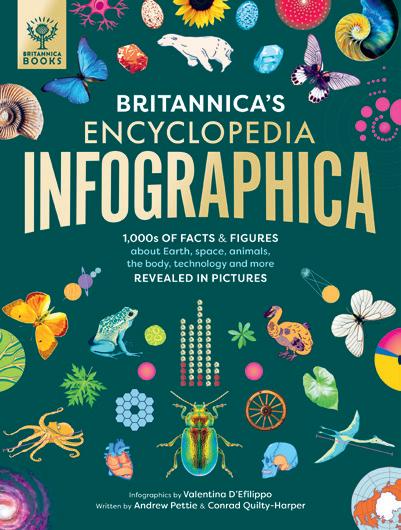
Set up by a team of Swedish scientists and statisticians, the Gapminder foundation uses data and infographics about global wealth, society and the environment to increase people’s understanding of the modern world. Gapminder’s mission is to challenge ignorance and popular misconceptions with ‘a fact-based worldview everyone can understand’. Find out more at www.gapminder.org.

1 Sloths and elephants are among the types of animals that cannot do what?
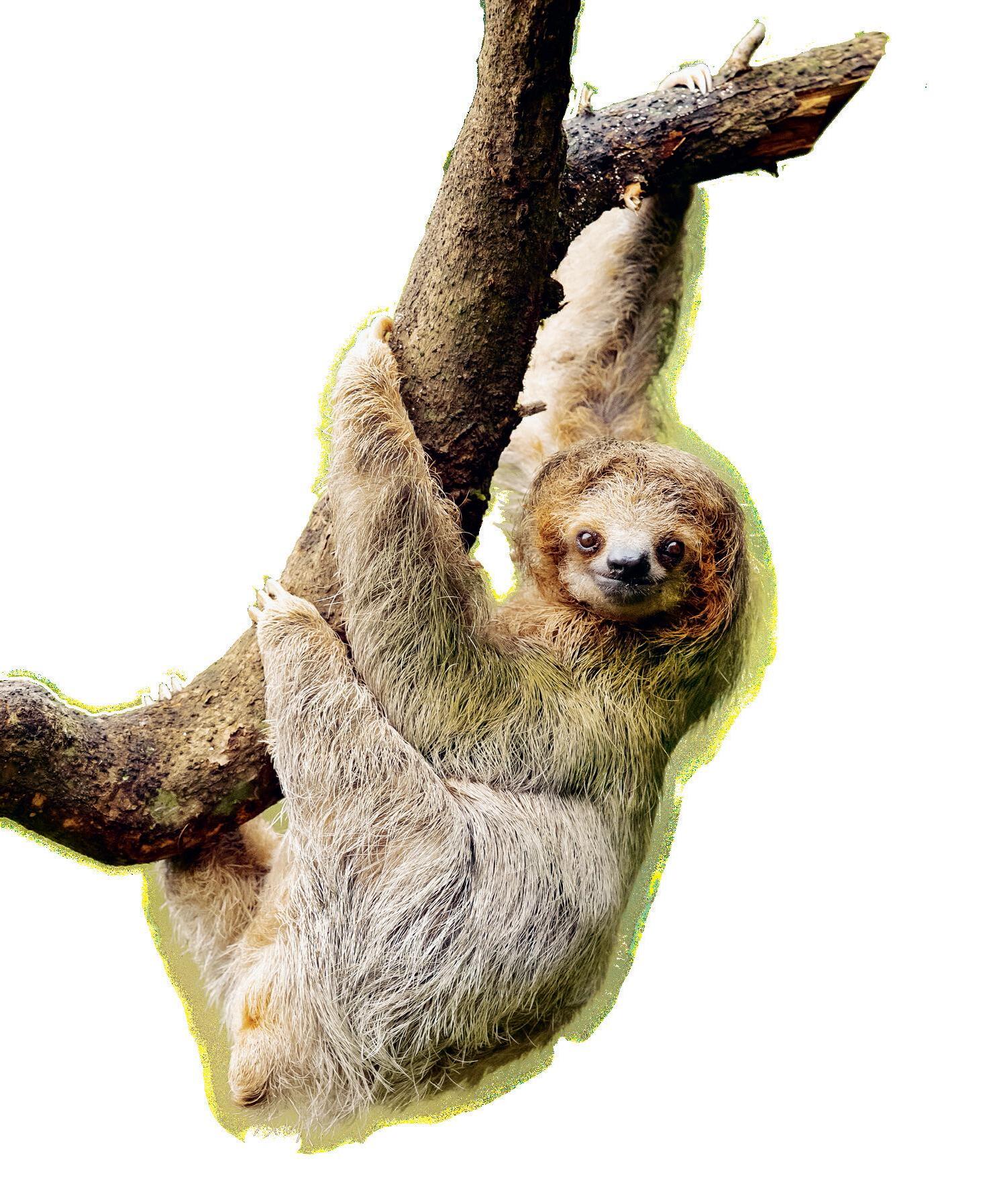
a. Jump
b. Run
c. Climb
d. Sleep
2
What type of fish is Nemo in the animated Pixar film Finding Nemo?
a. Clownfish
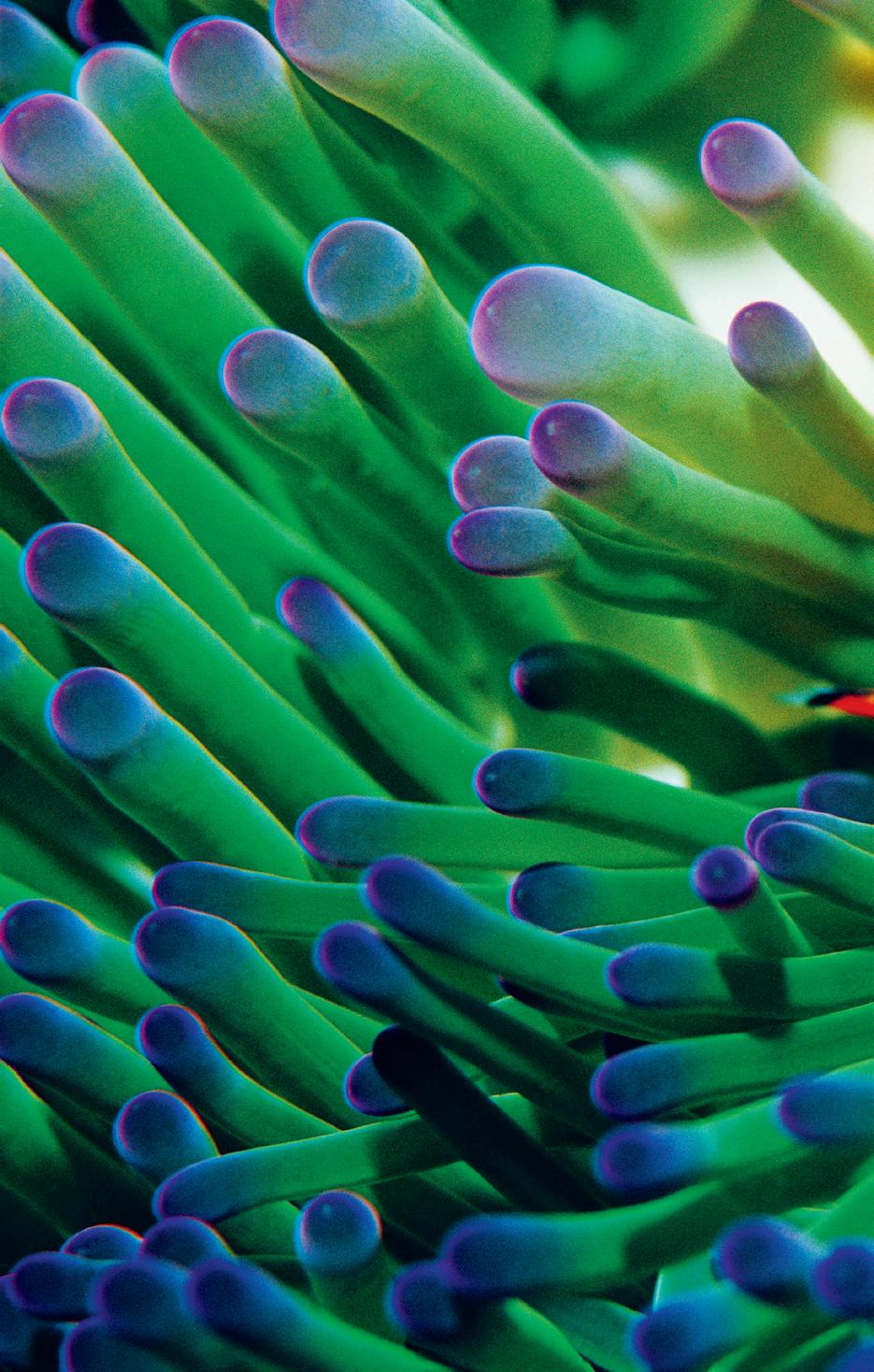
b. Sunfish
c. Zebrafish
d. Goldfish
3 What type of animal is a kakapo?
a. Mammal
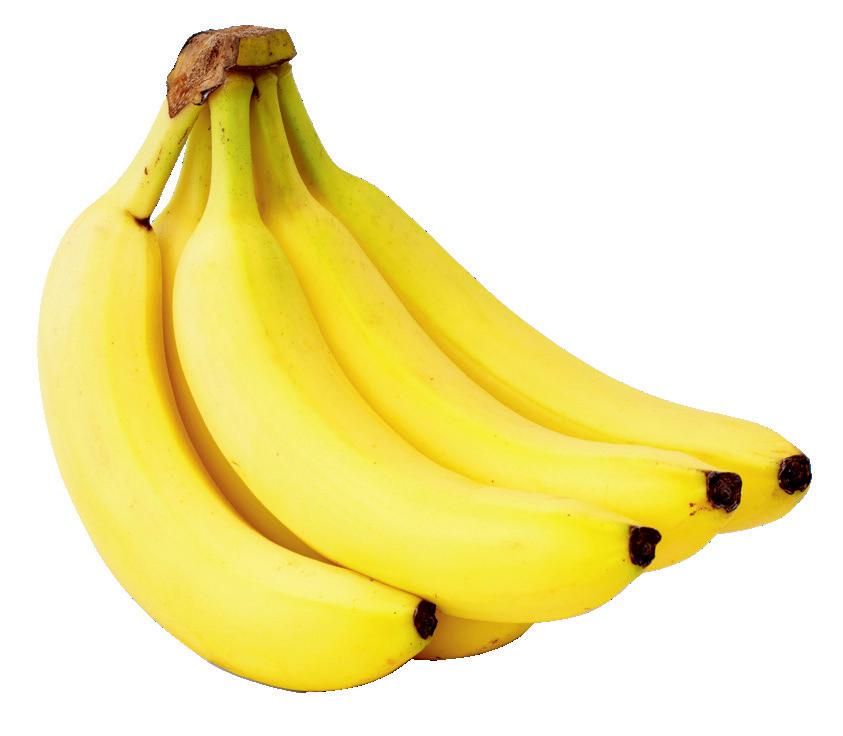
b. Bird
c. Reptile
d. Fish
Test your family’s brainpower by playing the What on Earth! Quiz together. Regular readers may have an advantage because some of the facts appeared in previous issues of the magazine. Don’t worry if you don’t know them all, though – the answers are at the end of the quiz!

4 What is a shark’s skeleton made of?
a. Muscle
b. Bone
c. Cartilage
d. Keratin
5 What part of its body does a butterfly use to taste?
a. Tongue
b. Wing
c. Feet
d. Antennae
6 What type of animal has fingerprints that are almost identical to human fingerprints?
a. Dog
b. Raccoon
c. Koala
d. Chameleon
10 What is the name for a scientist who studies rocks?
a. Rockologist
b. Geologist
c. Geographer
d. Ichthyologist
14 Your foot can house how many different types of fungi?
a. 20
b. 50
c. 100
d. 200
11
What percentage of Earth’s surface is covered with water?
a. 31%
b. 51%
c. 71%
d. 91%
15 Which cells fight infection?

a. Red blood cells
b. White blood cells
c. Blue blood cells
d. Nerve cells
12
Travelling at a mind-boggling speed of 186,000 miles per second, what is the fastest-moving thing in the universe?
a. Sound
b. Gravitational waves
c. Light
d. Wind
16 What percentage of people are left-handed?
a. 5%
b. 10%
c. 15%
d. 30%
17 What is the heaviest human organ?
a. Heart
b. Stomach
7 Which is the only planet in our solar system on which a day lasts longer than a year?
a. Mercury
b. Venus

c. Saturn
d. Uranus
8 What is the collective name for a group of bananas that are attached to each other at one end?
a. A foot
b. A hand
c. An ear
d. A peel
9 How many nanometres are there in a metre?
a. 1 thousand
b. 1 million
c. 10 million
d. 1 billion
5
c. Brain
d. Skin
18 Approximately how many neurons or brain cells are there in the human brain?

a. 86 thousand
b. 86 million
c. 86 billion
d. 86 trillion
19
Human beings are the only species known to do what?
13
a. Laugh
b. Blush
c. Blink
d. Jump
When playing a game of tenpin bowling, what is it called when you score three strikes in a row?
a. A hat-trick
b. A strikeout
c. A duck
d. A turkey
Continued from previous page
20 Florence Nightingale established the first school of what?

a. Painting
b. Nursing
c. Sewing
d. Typing

21 What was the first soft drink to be enjoyed by astronauts in space?
a. Coca-Cola
b. Fanta
c. Lemonade
d. Prime
22 How many black and white keys does
a standard piano have?
a. 55
b. 66
c. 77
d. 88
23
Which famous Greek philosopher was a childhood teacher of Alexander the Great (336-323 BCE), who went on to create one of the largest empires in history?
a. Plato
b. Socrates
c. Aristotle
d. Pythagoras
25

Which of these continents has the most countries?
a. Asia
b. Africa
c. Europe
d. South America
26
Which of these world-famous buildings and monuments is the tallest?
24
a. Nelson’s Column, United Kingdom
b. Statue of Liberty, United States
c. Great Pyramid of Giza, Egypt
d. Eiffel Tower, France
What is the official national language of Brazil?
a. English
b. Portuguese
c. Spanish
d. Brazilian
27
Which of these major world cities is home to the largest number of people?
a. New York

3O
What do each of these five flags represent?
b. London
c. Tokyo

d. Mexico City
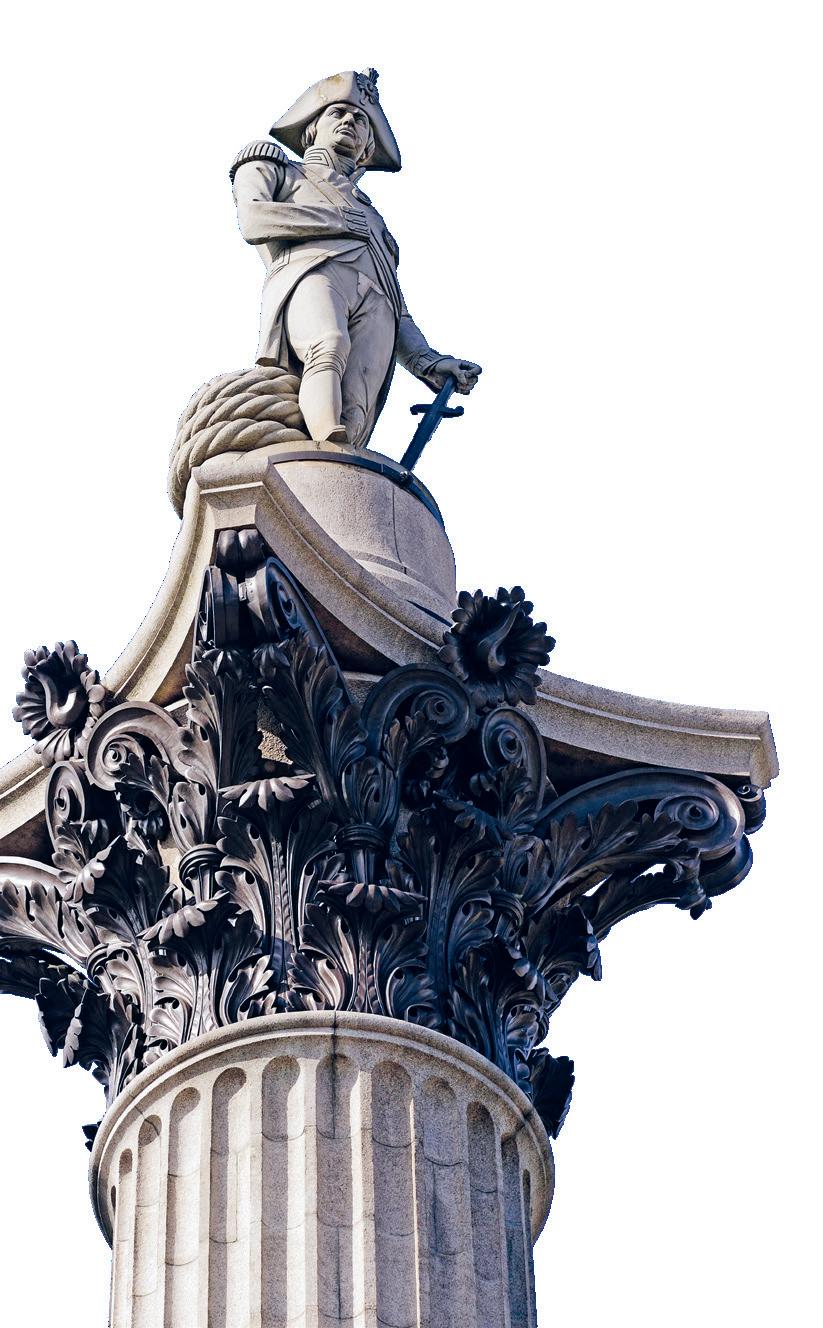
28
Which major European river flows through 10 different countries?
a. Rhine
b. Danube
c. Seine
d. Thames 29
You probably know that Russia is the largest country in the world by surface area. But which country is the second largest?
a. China
b. Brazil
c. United States
d. Canada
Open to all 8 to 14 year-olds. Choose your age category: Junior 8–11 or Senior 11–14. There are separate Quiz Challenges for teams from Schools and for Individuals.
The first online heats for individuals will take place at the end of October. You can choose a time to do the quiz online that suits you.
Live online heats for both school teams and individuals will be held between the 1st and 5th November.
2022 finals
The top 24 individuals and top 8 schools from the Semi-Finals will be invited to the Live London Final on 27th and 28th November in the historic Stationers’ Hall. They will compete to be crowned What on Earth! Quiz Challenge champions!

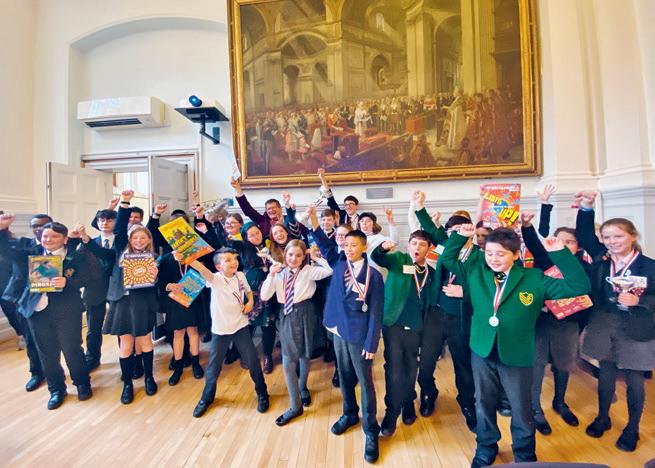
It is easy and free to enter. Whether you would like to enter this year’s What on Earth! Quiz Challenge as a team or as an individual, just go to www.whatonearth.co.uk/quiz
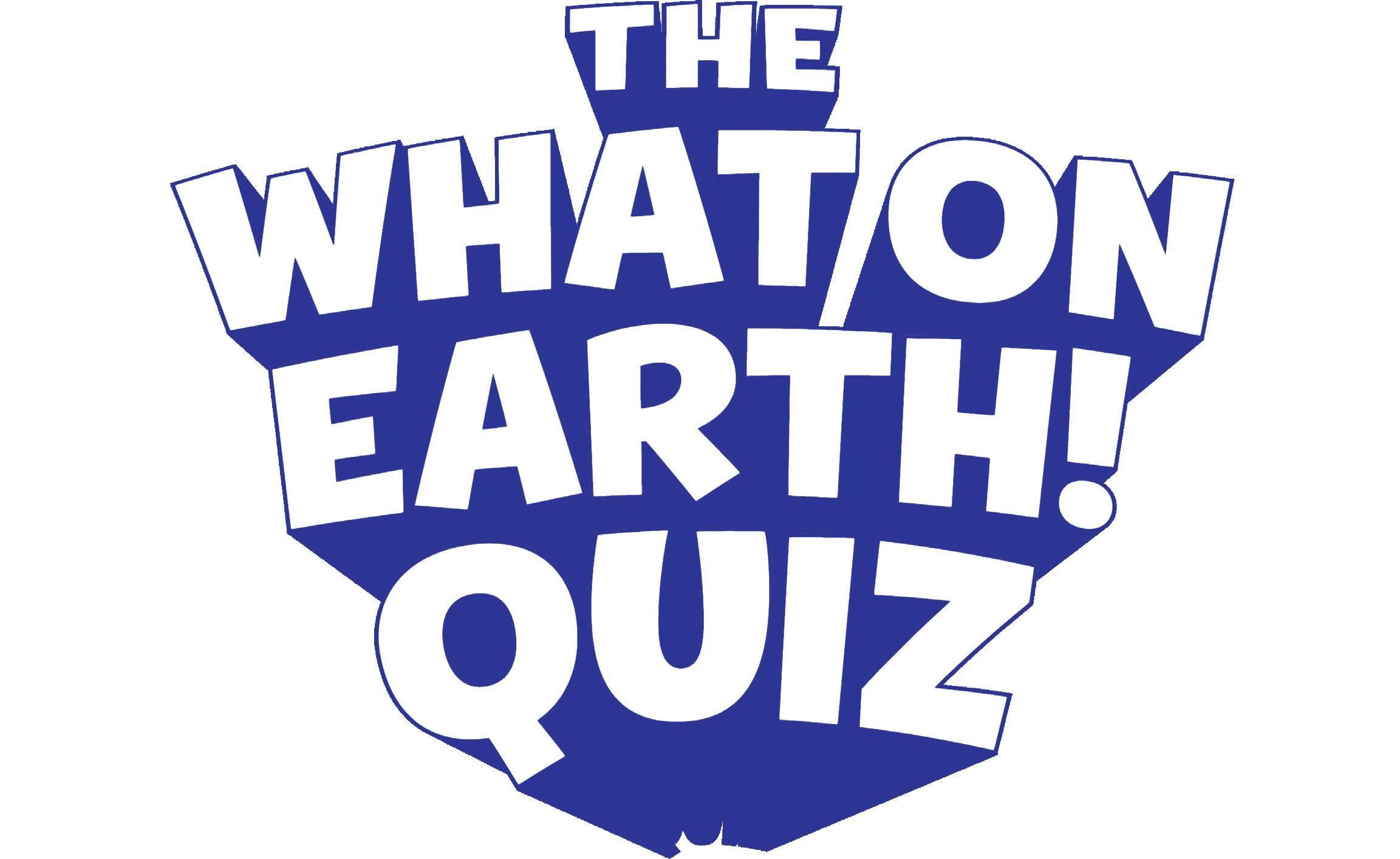
The venue
Good luck!
Then this is the chance for YOU or YOUR SCHOOL to enter…
Readers ask. Experts answer. Send your questions to: editor@whatonearth.co.uk
Question: What is the oldest language still spoken today?
From Josh, age 8
To answer this question, we first have to decide what it means for a language to have an age – and this is no simple task!
For starters, all living languages, which means all languages that continue to be learned and used today, are always changing. When children learn a language from the people around them, they always change it at least a little bit. Over time, these little changes pile onto each other, until eventually the

language is considered a new language that is separate from the language it came from. In this sense, every language used today is, at most, a few hundred years old. We could instead count a language’s age in a different way: by tracing the language back to
IN 2023
its oldest ancestor, which is the original language it developed from. Some languages are very young by this measure, such as Nicaraguan Sign Language, which is only around 40 years old! Most languages, however, are much older by this measure.
English, for example, would be (at least) 5,000 years old. This is because it developed from a ‘reconstructed’ language, which we call ProtoIndo-European, that was spoken around 3,000 to 4,000 BCE.
Nicaraguan Sign Language emerged in a group of deaf children as they communicated with each other at school.
But even that might not be the right answer. Some linguists think that most languages actually had a single origin, which means that they developed from the same ancestor language, many, many years ago.
If they’re right, most languages spoken today would be between 100,000 and 200,000 years old!
DR LAURA KALIN Linguist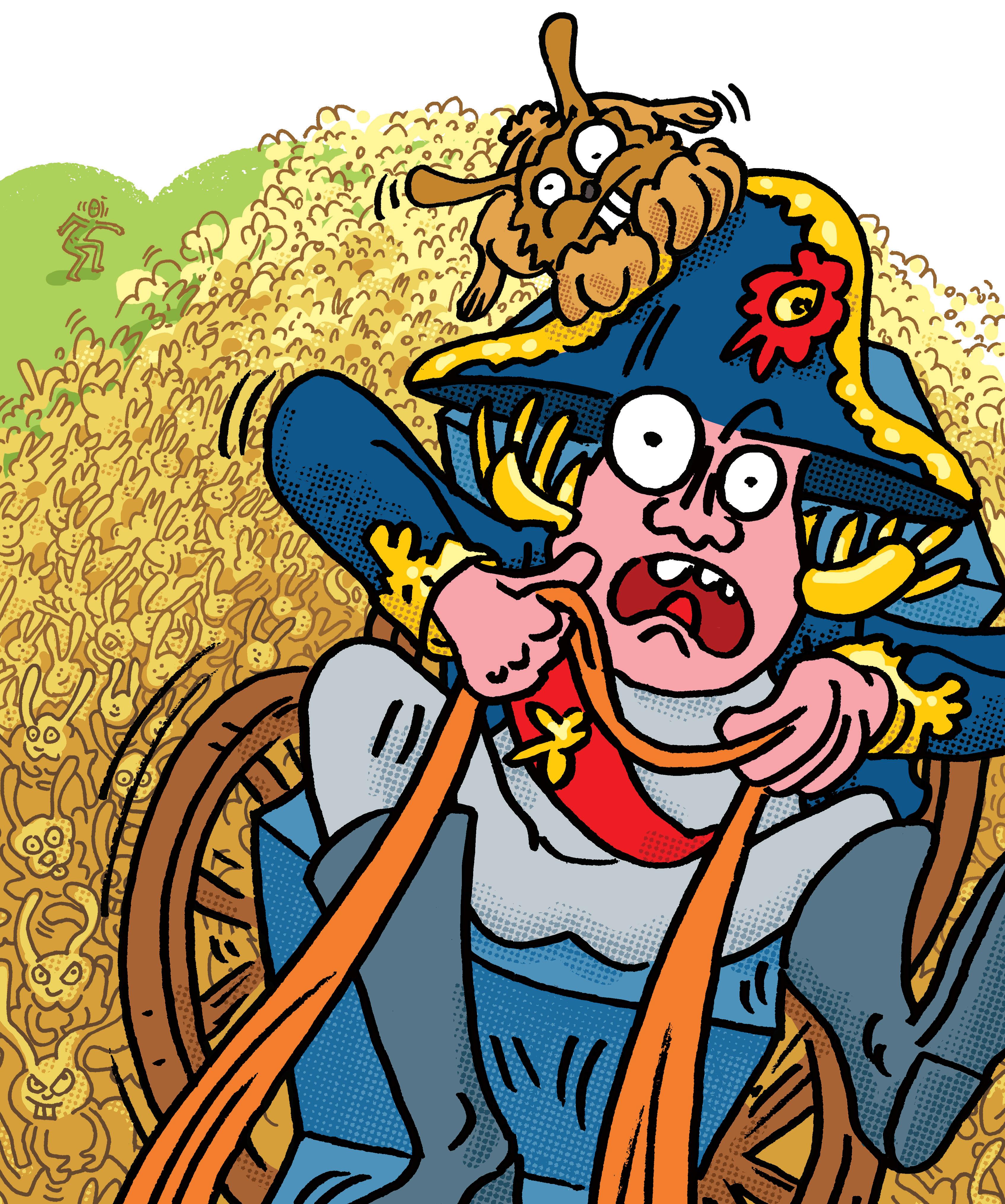
When: 1807
What happened: Napoleon Bonaparte was one of the most powerful rulers in history. But he did lose his share of battles – including one, in 1807, against an army of bunnies! Napoleon had decided to have a rabbit hunt to celebrate the end of a war between the French Empire and Imperial Russia. His chief of staff ordered local farmers to gather up hundreds of rabbits in cages for the hunt. When it was time, they opened the cages
The Sydney Opera House is one of the most famous buildings in the world. Nearly 11 million people visit it every year!
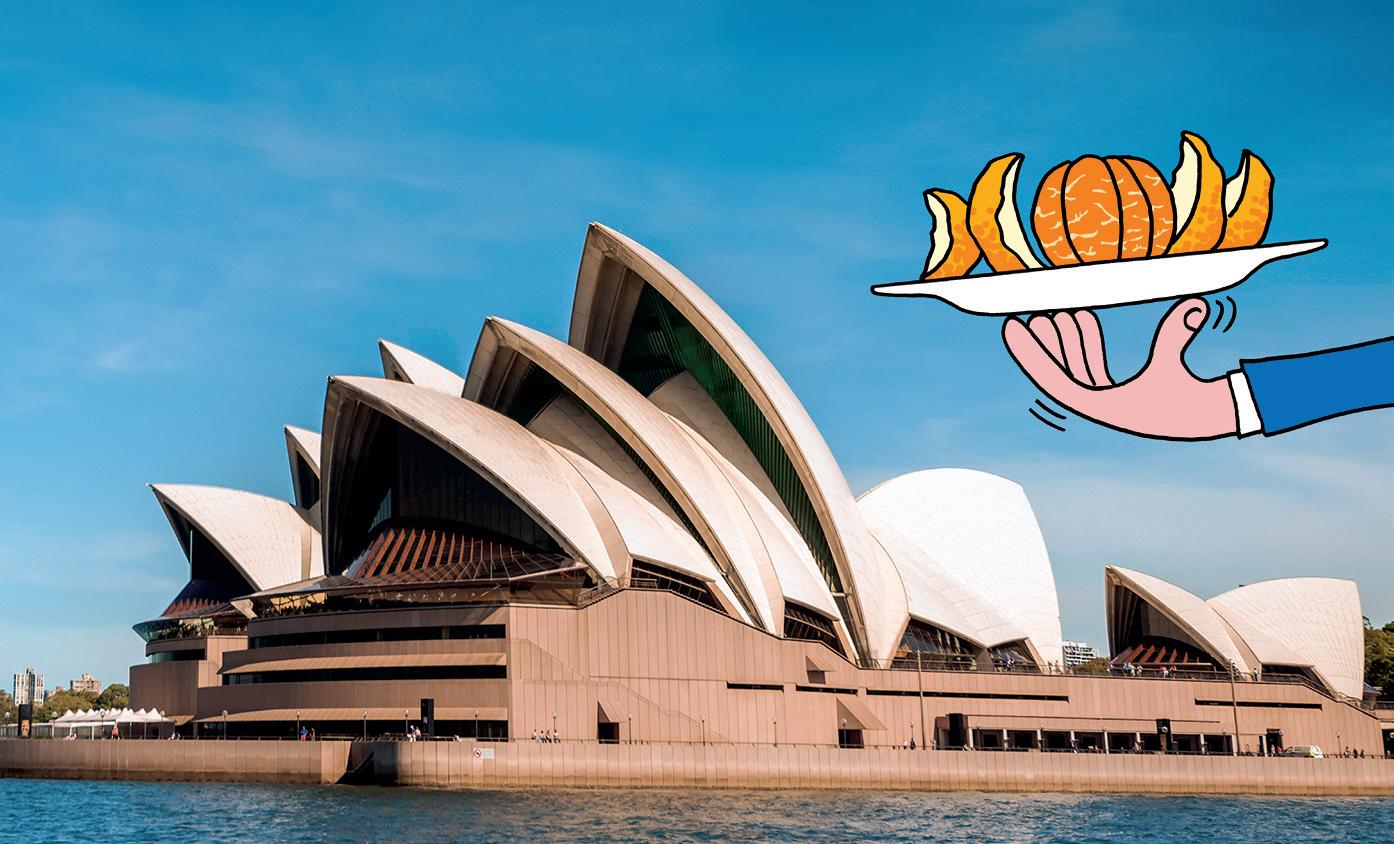
and released the rabbits. However, these bunnies were not afraid of humans. In fact, they thought it was time to eat! The hungry bunnies swarmed around Napoleon and his guests, chewing at their clothes and boots. Unable to position their guns to shoot something so close to them, they tried to beat the bunnies back with sticks and whips. Napoleon was forced to run away to his carriage — and some stories say the rabbits even chased him there!
Napoleon rode away in retreat and supposedly tossed the stowaway rabbits out the window.
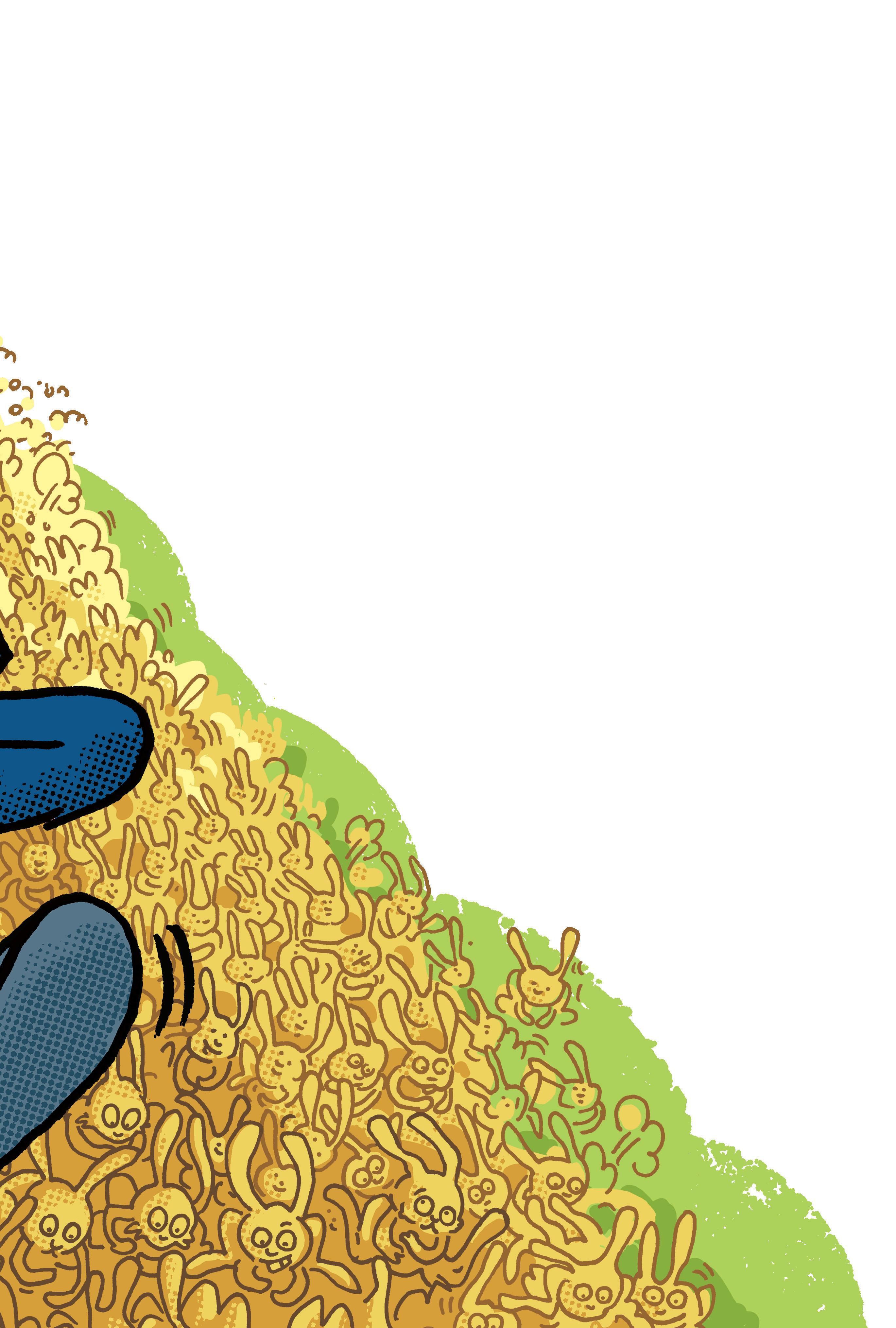
When: about 1960
What happened: The uniquely shaped opera house in Sydney, Australia, is one of the marvels of modern architecture. Before it was built, a design competition was held and Danish architect Jørn Utzon was declared the winner for his unique design featuring
Sixteen unbelievable things that actually happened – from Cleopatra’s not-somagic carpet ride to the space shuttle’s unfortunate icicle.
multiple ‘shells’. When the time came to build the opera house, however, the builders found it difficult to work out how to make the shells so that they would create a strong, stable structure. According to one story, they finally figured out the solution to the problem while peeling an orange!
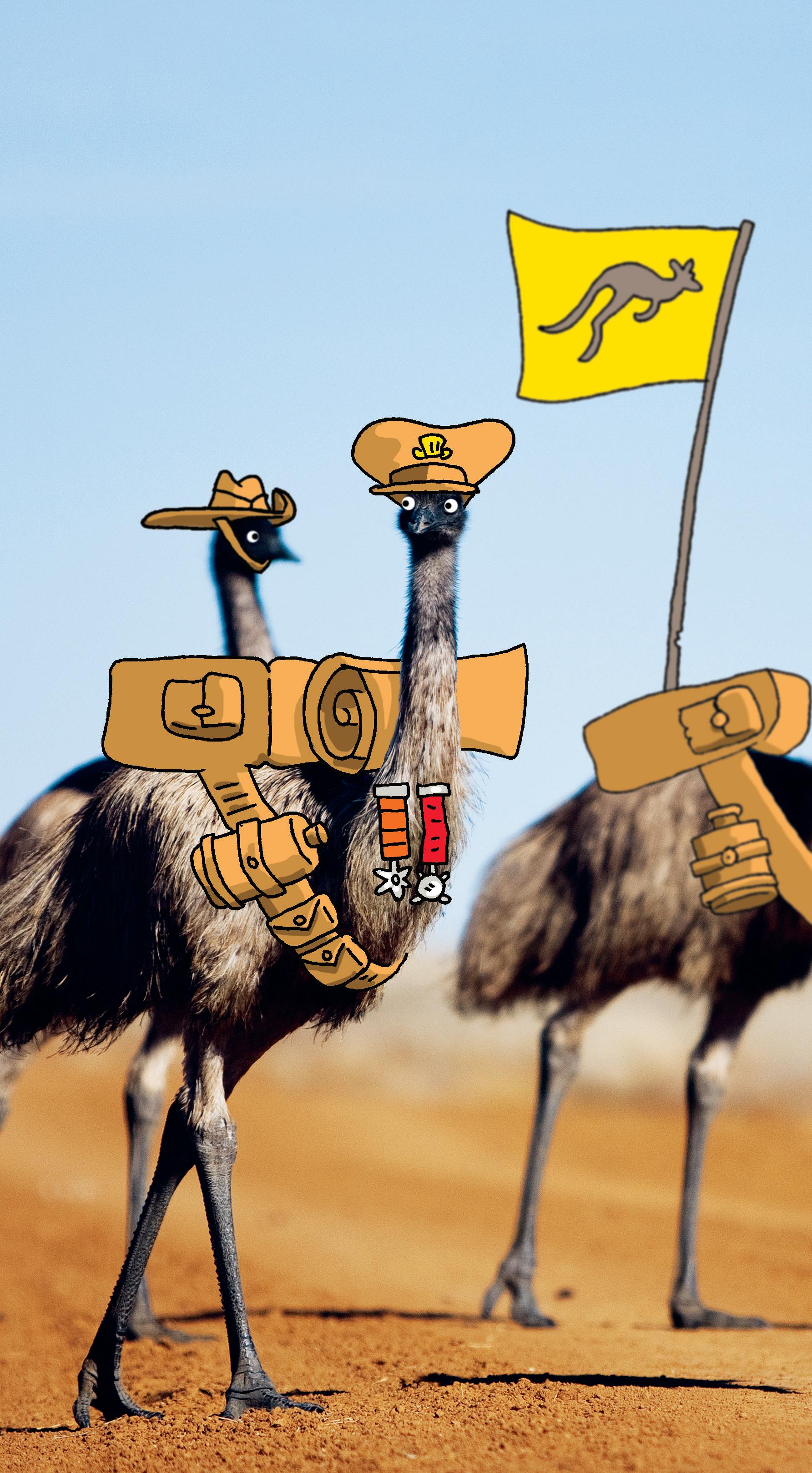
When: 75 BCE
What happened: Julius Caesar, one of the most powerful and influential people in Ancient Rome, was once captured by pirates. But he didn’t let it get him down! The 25-year-old nobleman laughed at the pirates’ small ransom (the money they were demanding in order to release him) and suggested they double it because of how important he was. While Caesar was held captive, he bossed around the pirates, acting as if he were the captain of their ship. He made them be quiet when he wanted to sleep and made them listen to the poetry he wrote while he was waiting for the ransom to be paid. He also warned the pirates that he would have them killed after he was freed – but they didn’t believe him. Maybe they should have. After the ransom was paid and Caesar was freed, he gathered a small fleet of boats and went back to find the
pirates. He took back the ransom money and the pirates’ other possessions and took them captive instead. Caesar sent the pirates to prison and then, true to his word, had them executed.
When: 1892
What happened: The huddle, in which members of a team gather around in a tight circle to discuss something, is seen in many sports today. It is used especially in American football, as players gather together between plays to discuss their tactics in secret. The sporting huddle, now used by all kinds of athletes, was originally developed by deaf sportsman Paul Hubbard in the 1890s. Hubbard was the quarterback for Gallaudet University, a school for the deaf and hard of hearing. When playing another deaf team, he called his teammates together in a tight circle so that their opponents couldn’t see their hand signals as they communicated with each other in American Sign Language.
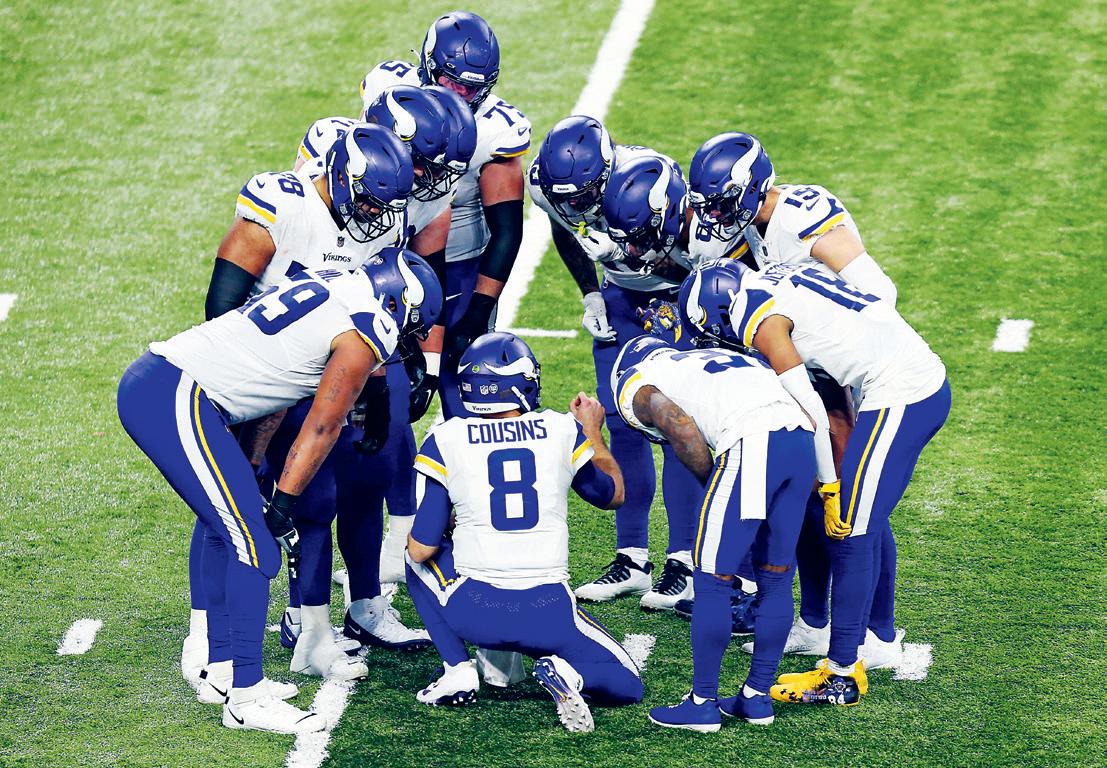
When: 1839
What happened: The first selfie was taken a lot earlier than you might expect – about 170 years before Instagram! A man named Robert Cornelius holds the title for first selfie ever taken and it was a truly extraordinary feat.
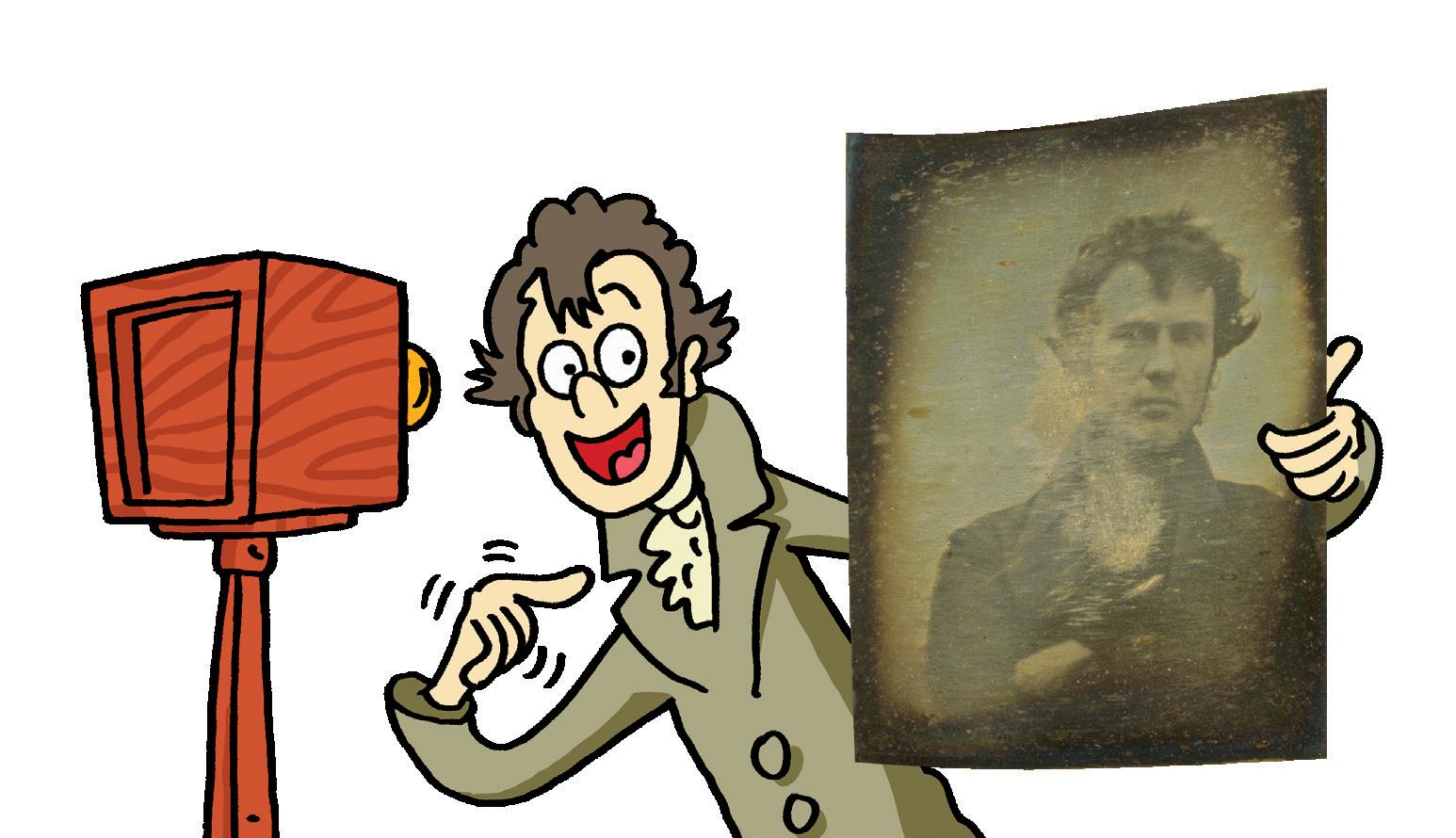
Photographs had been invented less than 20 years before, in the 1820s. Back then, it took up to 25 minutes to take a photograph, so he had to stand perfectly still and look into the camera for a very long time!
Cornelius’s ‘selfie’ (pictured below) is considered the earliest existing photographic portrait.
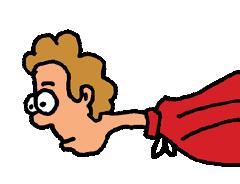
When: 857 CE
What happened: The University of al-Qarawiyyin in Fez, Morocco, is considered to be the oldest learning centre in the world. It was originally founded as a mosque by a woman
named Fatima al-Fihri and later became an educational centre. In 1963 it officially became the University of al-Qarawiyyin, which it still is today. That means it has been operating continuously for more than a thousand years!
When: 12th century to the 19th century
What happened: Samurai, who were members of the Japanese class of warriors that emerged in the late 1100s, were not only expected to be brave, disciplined and loyal, but also to master arts such as poetry or flower arranging. Ikebana, the Japanese art of flower arranging, is important in Buddhism. To the samurai,
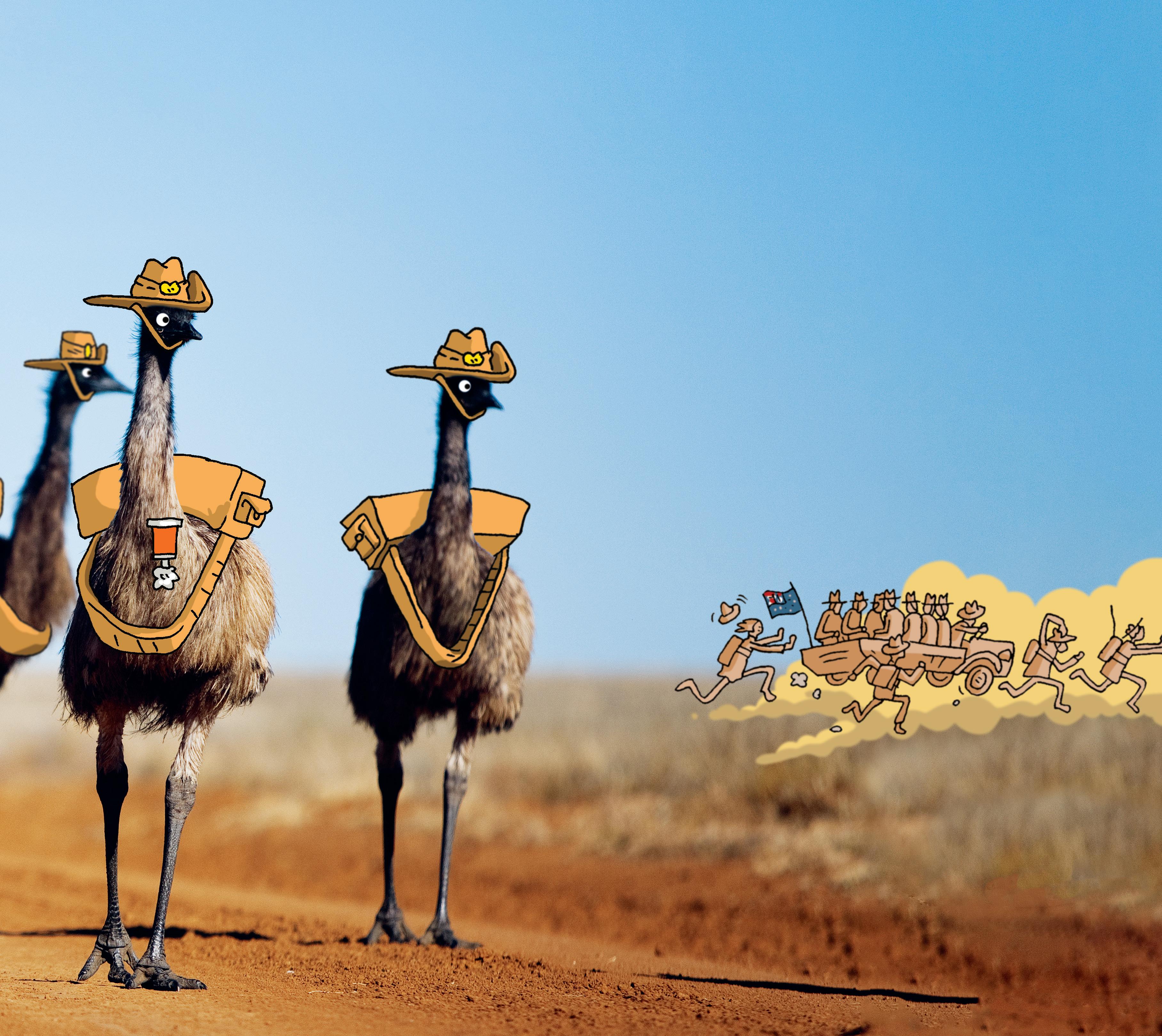
When: 1932
What happened: In 1932, the country of Australia went to war against its population of emus… and lost. The birds, once a protected species, had become too much of a nuisance to ignore. In Western Australia, farmers were already struggling to make a living and then the emus – at least 20,000 of them – had arrived and started destroying their crops. The farmers, many of them former soldiers, asked for the military to help. Military troops, complete with big machine guns, were sent to Western Australia to wage war on the emus. However, the emus were a harder enemy to face than they had anticipated! Emus can run very fast (up to 30 mph). This helped them dodge many of the bullets. They also scattered when they heard the shooting. Some emus were also able to take bullet injuries and continue running. The soldiers tried different tactics, but the birds kept outsmarting them. The soldiers even tried putting one of the big guns in a truck, but the truck wasn’t fast enough to keep up with the emus! Eventually the humans were forced to concede defeat.
In addition to combat skills, samurai studied arts such as poetry and flower arranging.
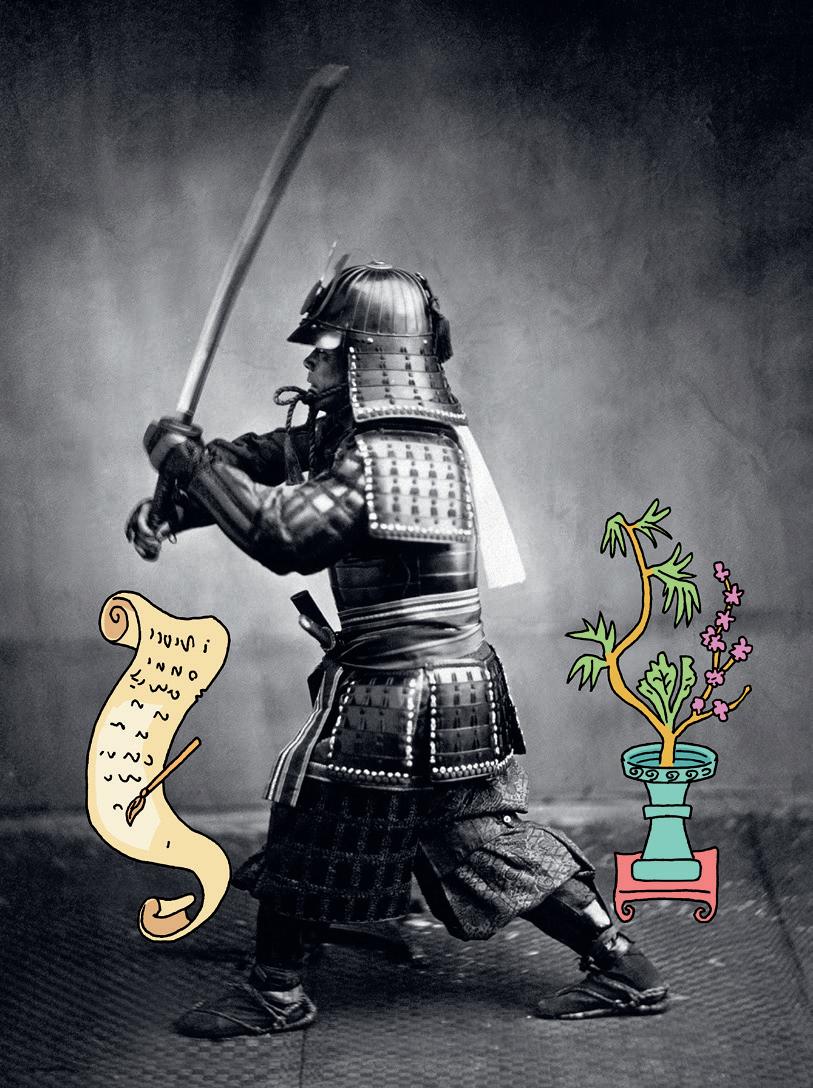
flower arrangements came to symbolise life and death and connection with nature. Some samurai would practise ikebana as a form of meditation before then going into battle.
When: 1984
What happened: The space shuttle Discovery had a bit of a rocky start. For its first voyage, it suffered launch delays and even a small fire on the launchpad. When it finally got to space, it faced a previously unknown threat – a giant icicle made of wee! The icicle was more than half a metre long
Continued on next page
Continued from previous page the great bell sank to the bottom of the river. It has never been found.

and had formed by a dump port after a malfunction. Due to its length, it was in danger of damaging part of the spacecraft. With some difficulty, the astronauts managed to knock the giant wee-cicle off with a robotic arm. Phew!
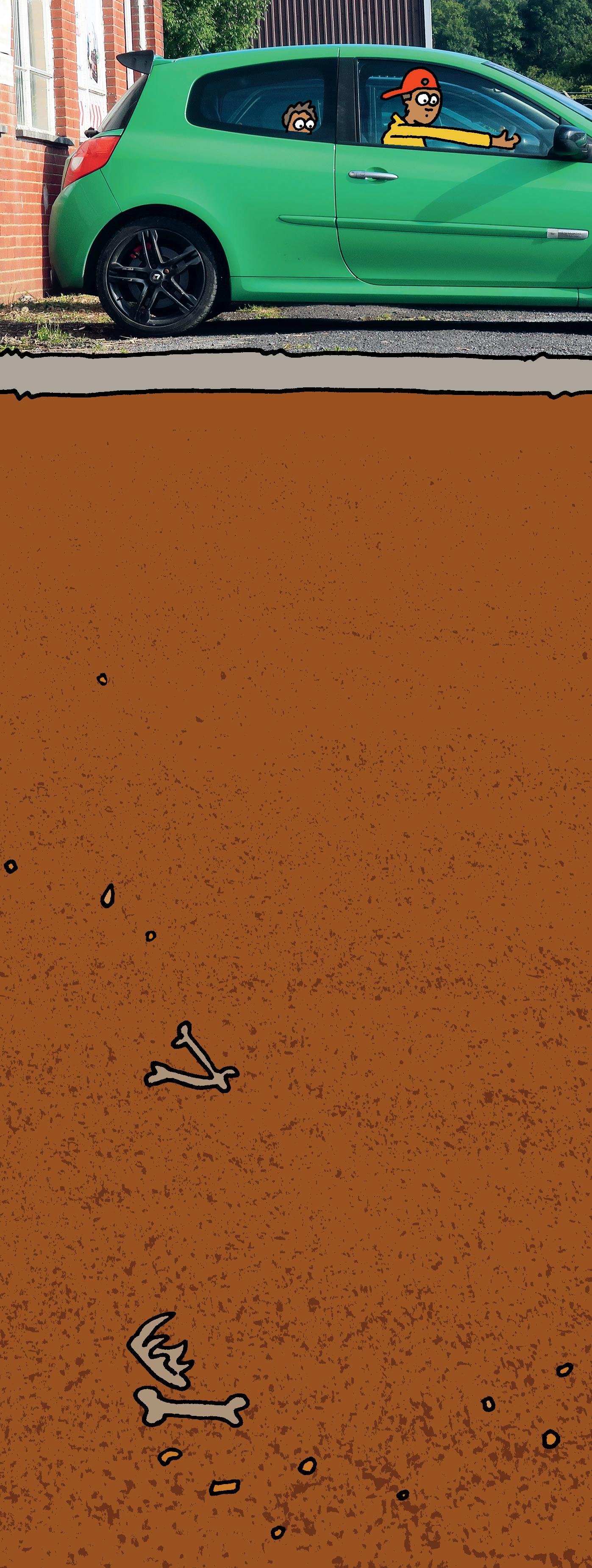
When: 1608
What happened: King Dhammazedi of Myanmar in Southeast Asia had many amazing things made during his reign in the late 1400s. One of these was an enormous bell, said to measure 6 metres by 4 metres, which is about the size of a single-car garage. The Great Bell of Dhammazedi was presented to a temple, where it remained until the temple was attacked by Portuguese soldiers in 1608. The bell was taken so that its metal could be melted down to make a cannon. The bell was rolled down a hill and then pulled by elephants to a boat on the river. However, it was much heavier than anticipated and the boat was not able to hold the bell’s weight – which was about the same as 25 double-decker buses! The boat broke, and
When: around 1200

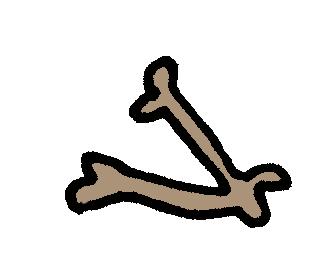
What happened: Genghis Khan, medieval ruler of the Mongol Empire, set up the Yam: a route along which messages could be transferred very quickly. The Yam is considered one of the first postal systems. Similar to modern postal systems, there were offices placed along the route where messages could change hands between messengers. These were placed every 30 to 60 kilometres or so. Tens of thousands of horses were used for carrying the messages, and the riders rode them so hard and so fast that messages could travel more than 300 kilometres in a day!
When: 1838
What happened: In 1838 a war was started over a pastry shop! A French pastry chef living near Mexico City wrote to King Louis Philippe of France that Mexican police had looted and damaged his shop. The French demanded 600,000 pesos, a fantastic sum, for the damages. When the Mexican
When: 2012
What happened: King Richard III of England, a notorious figure in history, famously died in 1485 at the age 32 in the last battle of the Wars of the Roses. He was buried at Greyfriars church in Leicester, which is thought to have been destroyed a few decades later. Fastforward 500 years, and an archaeological dig that started in 2012 suggested that his remains were now buried beneath a car park! Through carbon dating and DNA testing, scientists were able to confirm that the remains were indeed the famous king’s. Richard was later reburied at Leicester Cathedral and the car park is now a protected monument.

government did not pay, Louis Philippe sent a fleet of ships to block an important Mexican port and the war got underway later that year. It was resolved in 1839 with help from the British.
When: 1925
What happened: Frida Kahlo became one of history’s greatest artists, but as a child she wanted to be a doctor. At age 18, she was taking a bus home from her classes in Mexico City when the bus collided with an electric streetcar. Kahlo was badly


Like a Chicken
When: 1507
injured. A metal handrail went through her body and several of her bones were broken. While she recovered, she had to wear a full-body plaster cast and stay in bed all day. Her parents bought her a canvas so that she could paint on her lap, which was some distraction from the loneliness and boredom of being stuck in bed. Kahlo expressed her physical and emotional pain through painting, even after she got better. Her work paved the way for other women to express their feelings through art. Today, Kahlo is particularly well-known for her striking self-portraits.
Frida Kahlo created 143 paintings in her lifetime. Fifty-five of them were self-portraits.

What happened: Italian-born John Damian was a favourite of King James IV of Scotland. He studied medicine and alchemy and science, although it is thought that he wasn’t very good at any of them. One of Damian’s best-known blunders came in 1507, when he announced that he would fly from Stirling Castle to France using a pair of wings he had made out of feathers. Damian jumped from a castle wall and crashed into a dung heap below. He told the king that the problem had been that he had used some chicken feathers for the wings – and chickens cannot fly very well!


When: 48 BCE
What happened: When Roman general Julius Caesar came to Egypt about 48 BCE, a young Cleopatra was eager to meet him. According to legend, she had her servants wrap her up in a carpet and take her to Caesar’s rooms in secret. After he unrolled her, the story says, Caesar fell in love with her.
 History FACTopia, by Paige Towler, is out 7th September.
History FACTopia, by Paige Towler, is out 7th September.
Stumped? Don’t worry, you can find the answers to all the puzzles on page 57.

Can you spot the names of 23 machines hidden in our jumbo word search puzzle? Good luck!
The six-sided shape on the left can be folded up to form a cube. Only two of the cubes below can be made by it. Which are they?
Can you spot all 2O differences between these two forest illustrations?
Use the word wheel to help find the answers to the six clues below. All the answers contain the middle letter, and each letter can only be used once.
Clue: something a scientist might create (9 letters).
Answer:
Clue: to ask someone to go somewhere or do something (6 letters).
Answer:
Clue: the square root of 81 (4 letters).
I N N O E
Answer:
Clue: kitchen appliance that gets very hot (4 letters).
Answer:
Clue: a short message (4 letters).
Answer:
Clue: like a finger on your foot (3 letters).
Answer:
Can you find your way through our maze of square rooms? Enter through the door marked with the red arrow, then try to find your way to the exit by going through the correct sequence of open doors. Good luck!
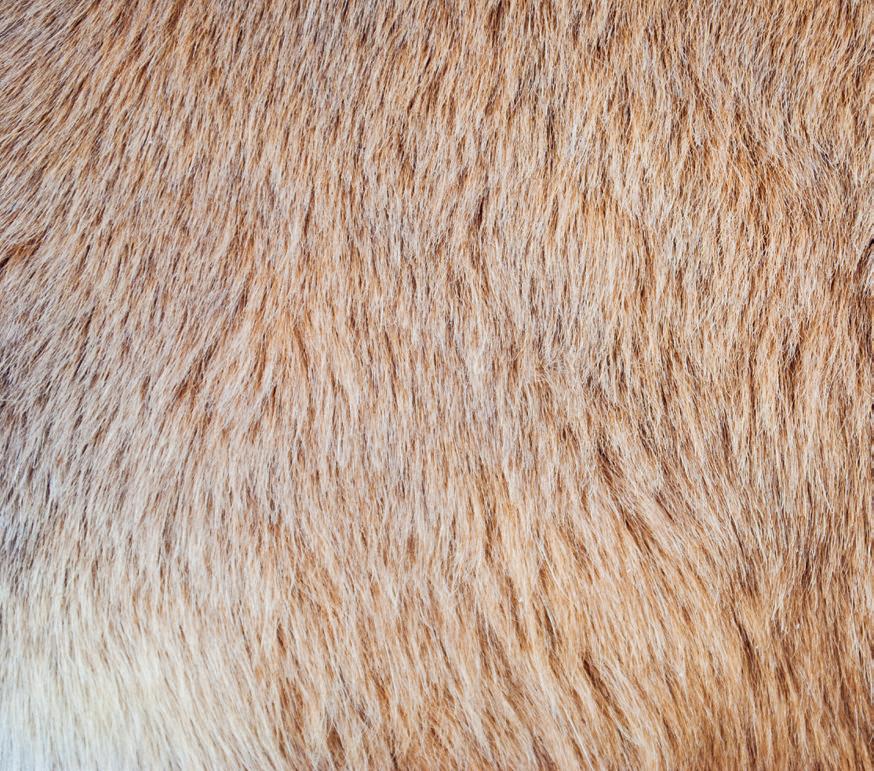
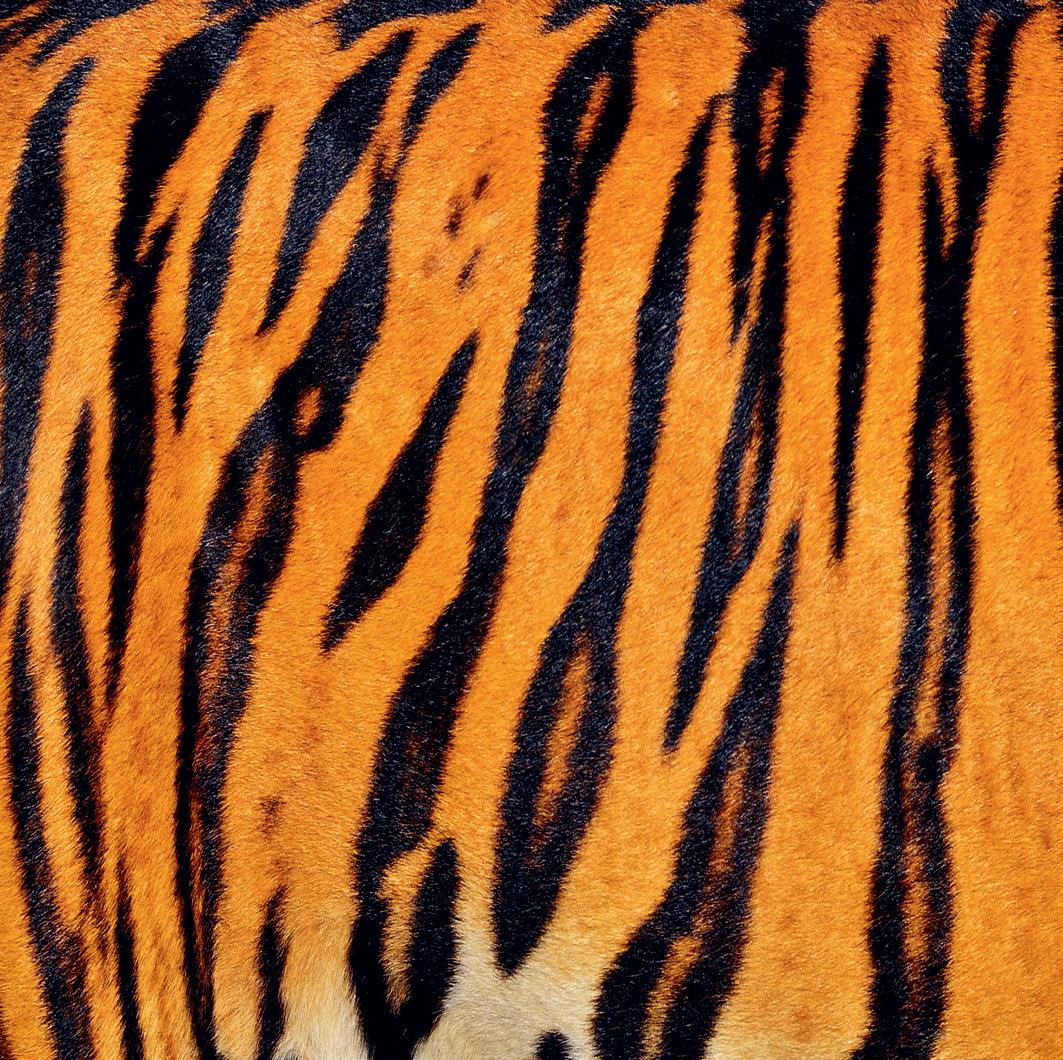
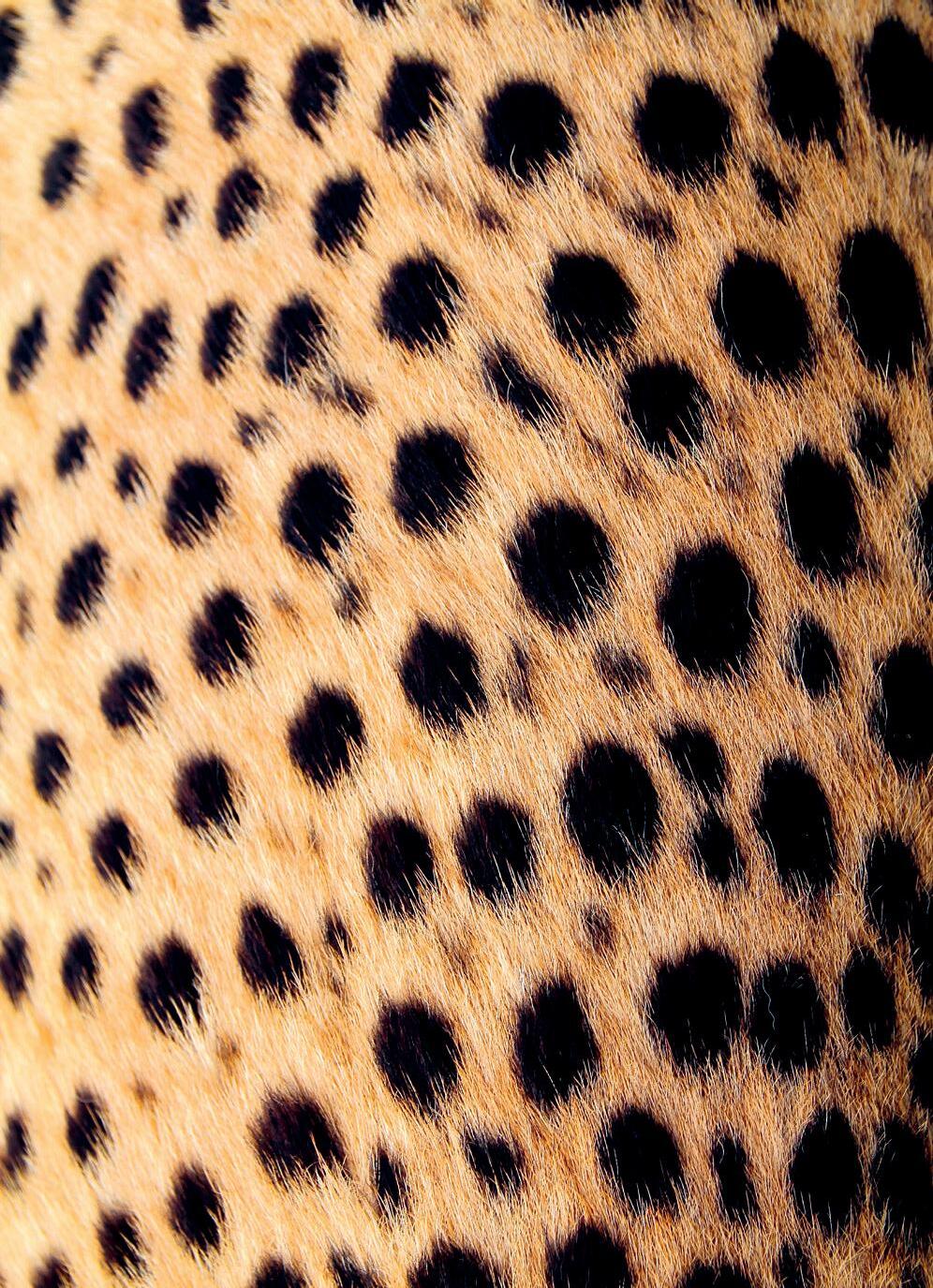
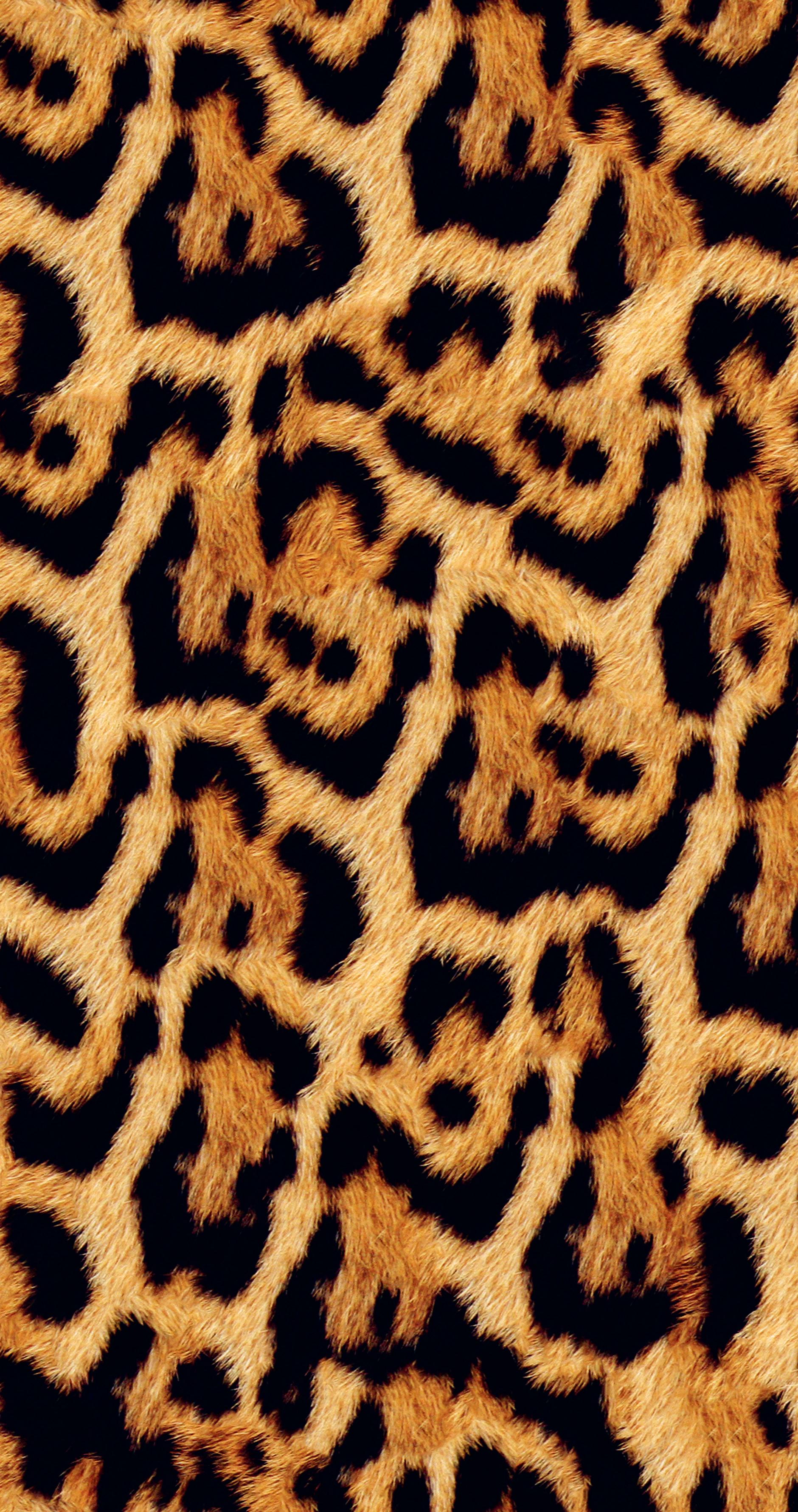
Fill in the missing numbers so that every row and column includes the numbers 1, 2, 3 and 4. Use the inequality signs as clues and make sure numbers always obey the inequality sign between them. This means that the arrows between the numbers always point towards the smaller number.
Here is an example:
In the three squares shown above, the number A must be less than 3 and greater than the missing number B.
We know all the numbers must be between 1 and 4 , so therefore A must be 2 and B must be 1.
4
photos show a section of fur from each of these six big cats: lion, tiger, cheetah, jaguar, leopard and puma. Can you work out which is which?
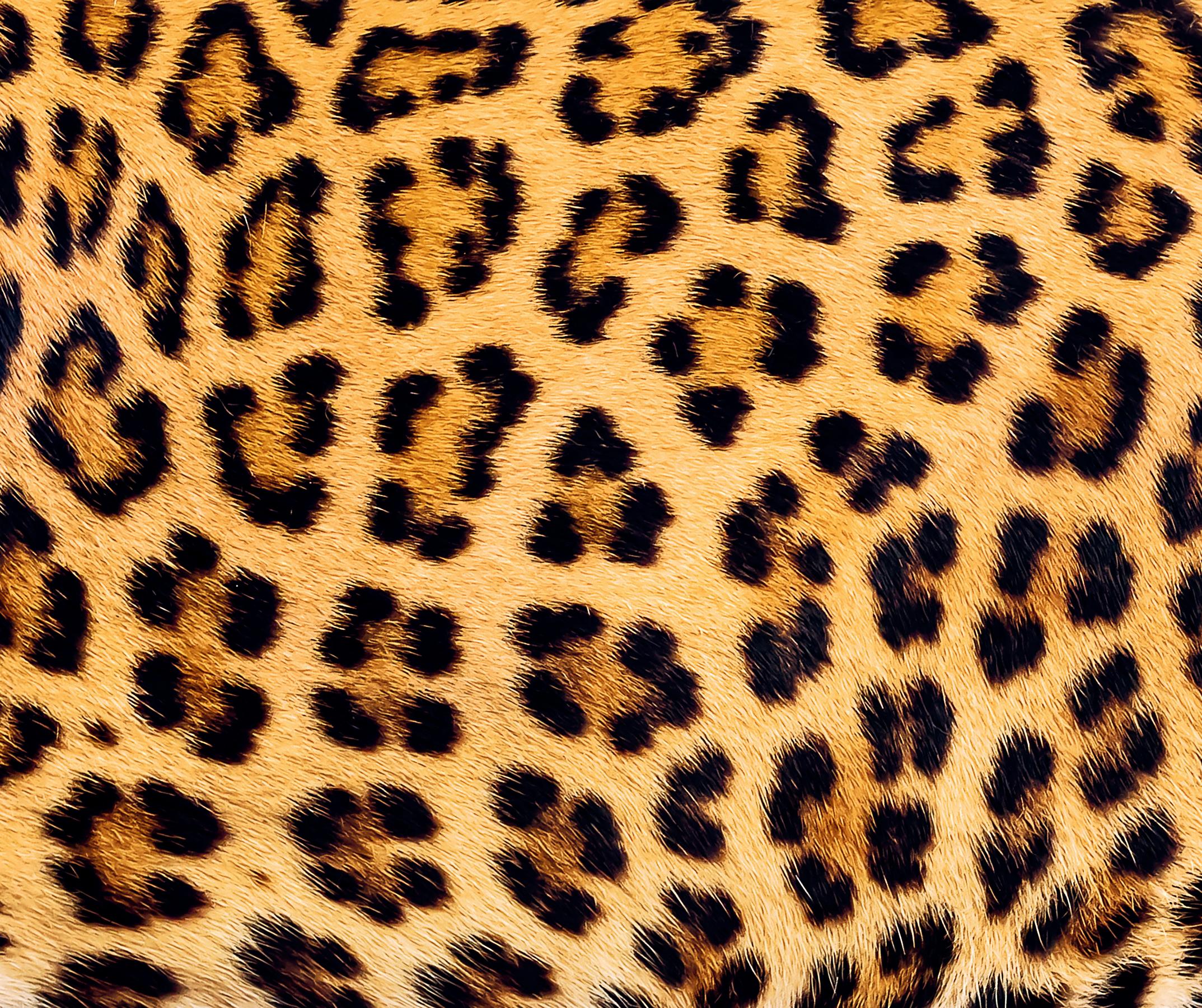

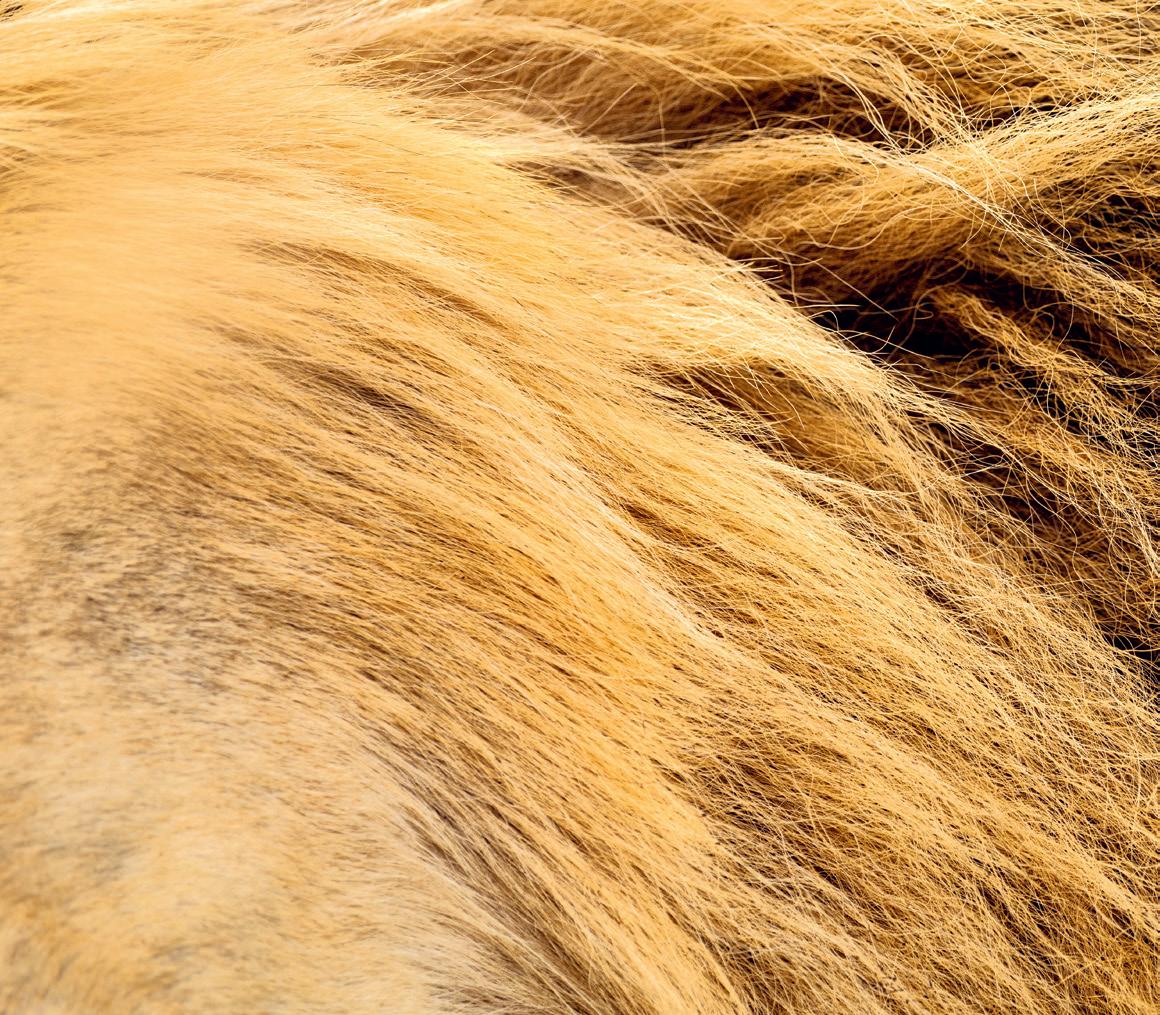
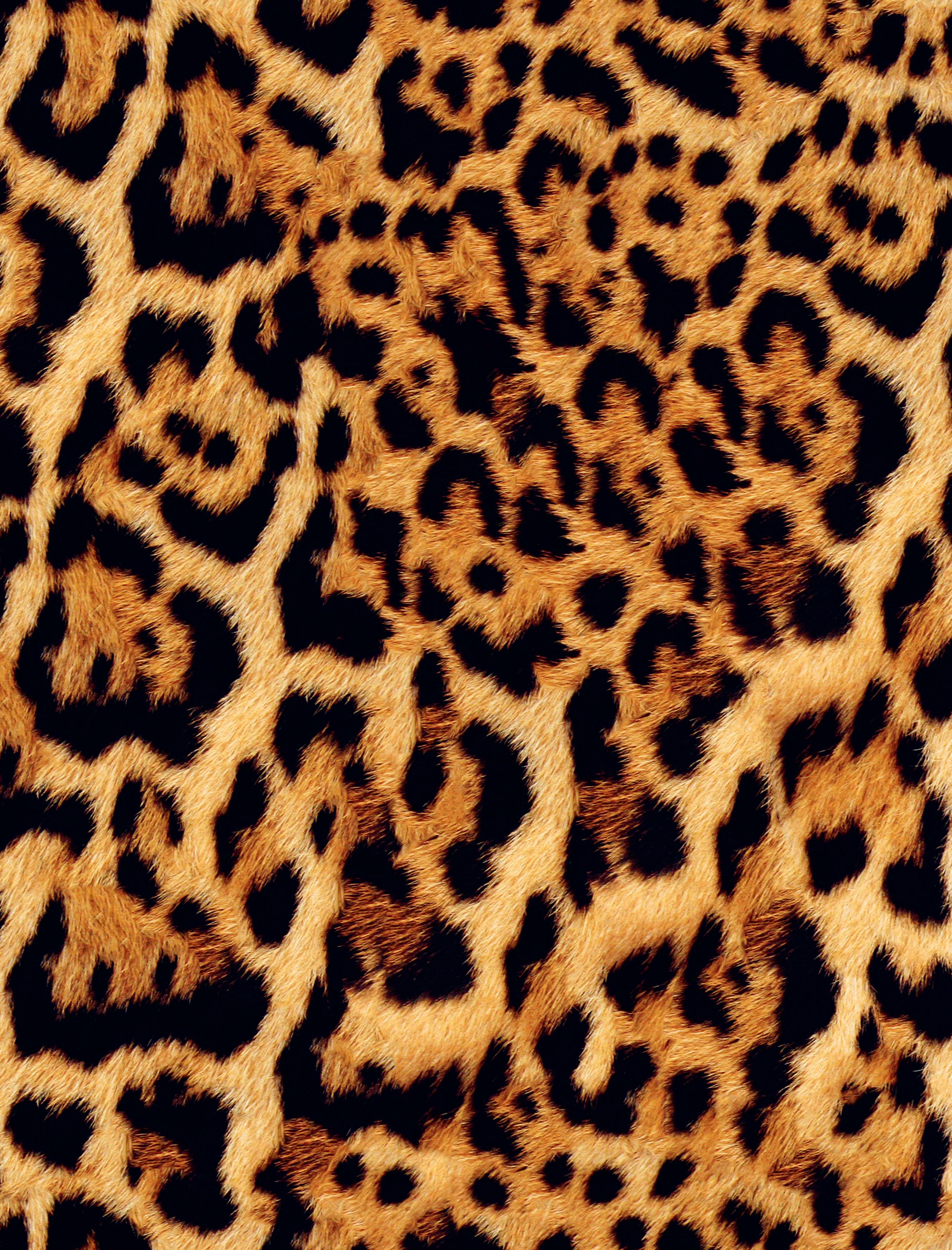
CONNECT THE PLANETS
Rules:
1. The bridges must be straight lines and cannot bend.
2. The bridges cannot intersect with each other.
3. The bridges can be horizontal or vertical but not diagonal.
4. The maximum number of bridges connecting two islands is two.
SUDOKU!
Fill all the empty squares so that every row, column and 3x2 box contains each of the numbers 1 to 6.
3
Each month we feature an amazing story from world history taken from the bestselling book by Christopher Lloyd, with illustrations by Andy Forshaw. This month: Spain and Portugal try to conquer the world.
In 1494 Spain and Portugal signed a pact called the Treaty of Tordesillas. Incredible as it sounds today, this agreement was meant to divide the entire world between them. They agreed to divide the world into two parts along a line drawn down the middle of the Atlantic Ocean. Everything ‘discovered’ to the east would ‘belong’ to Portugal, everything to the west to Spain. Of course, nobody asked the people who already lived in Africa, Asia or the Americas what they thought of this plan.
This was the beginning of something called western colonialism. That’s the time period when European countries went about taking control of faraway places and exploiting their people and natural resources to make themselves rich. We have seen a lot of empires
Below: sugar plantations included both the fields that grew the cane and the factories where the juice was squeezed out and made into sugar, molasses and sometimes rum. Enslaved people were forced to do difficult, dangerous work in these fields and factories day in and day out, and many of them died. Others risked death to seek freedom.
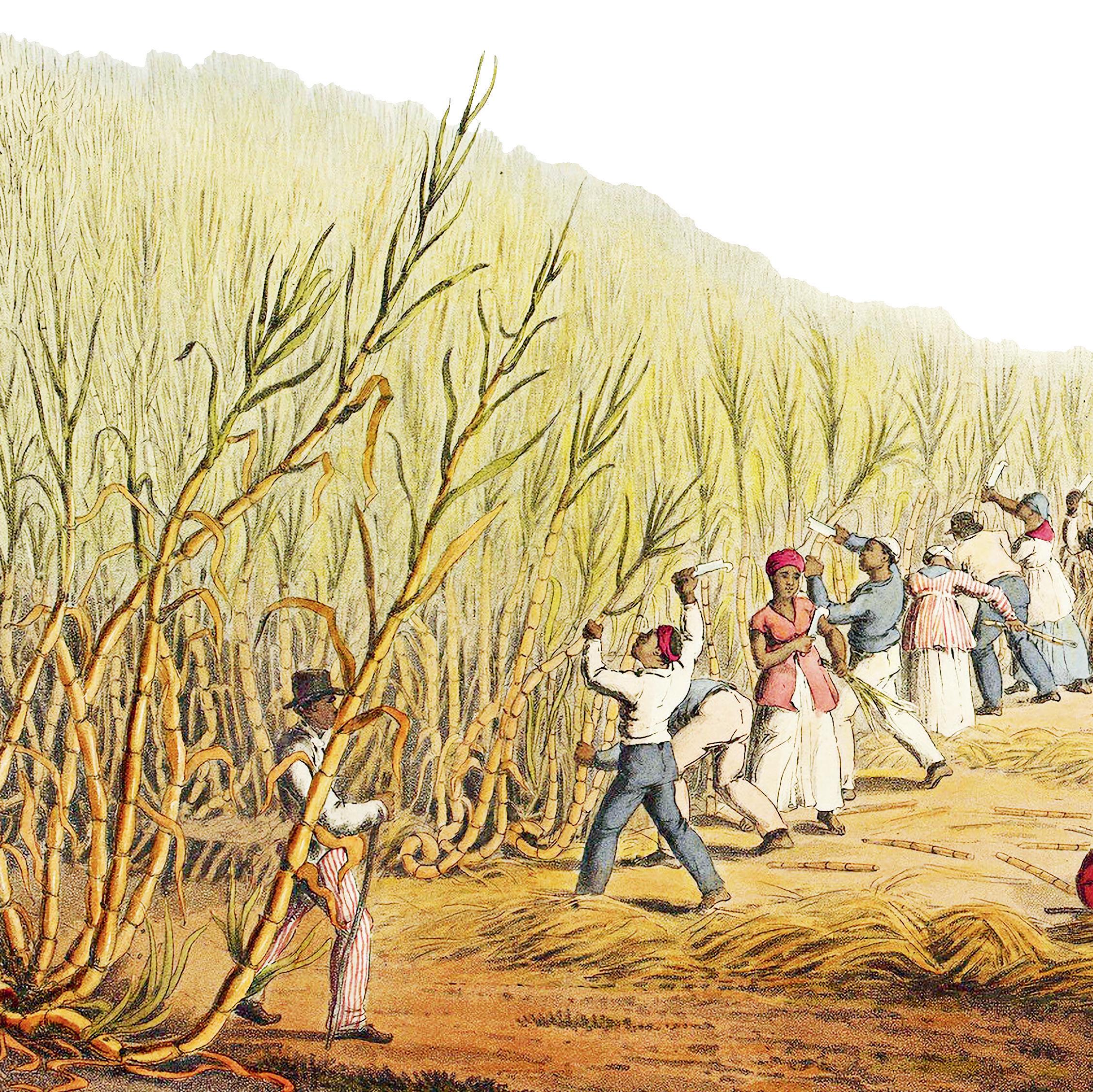
come and go in this series already. But this global approach was a whole new way to build an empire. As with other empires, it was terrible for the people being conquered, controlled, and often killed.
Many Europeans of the period were just fine with all of this. They believed that they were bringing Christianity and a future in heaven to the whole world. The idea was that if you were a Christian, you could go to heaven. If you were not a Christian, you would go to hell.
So they believed that by converting native people to Christianity they were doing them a big favour, even if it meant the loss of everything the new converts cared about and a life of enslavement. Looking at it from centuries later, this whole idea seems appalling, but it really is what many Europeans thought at the time.
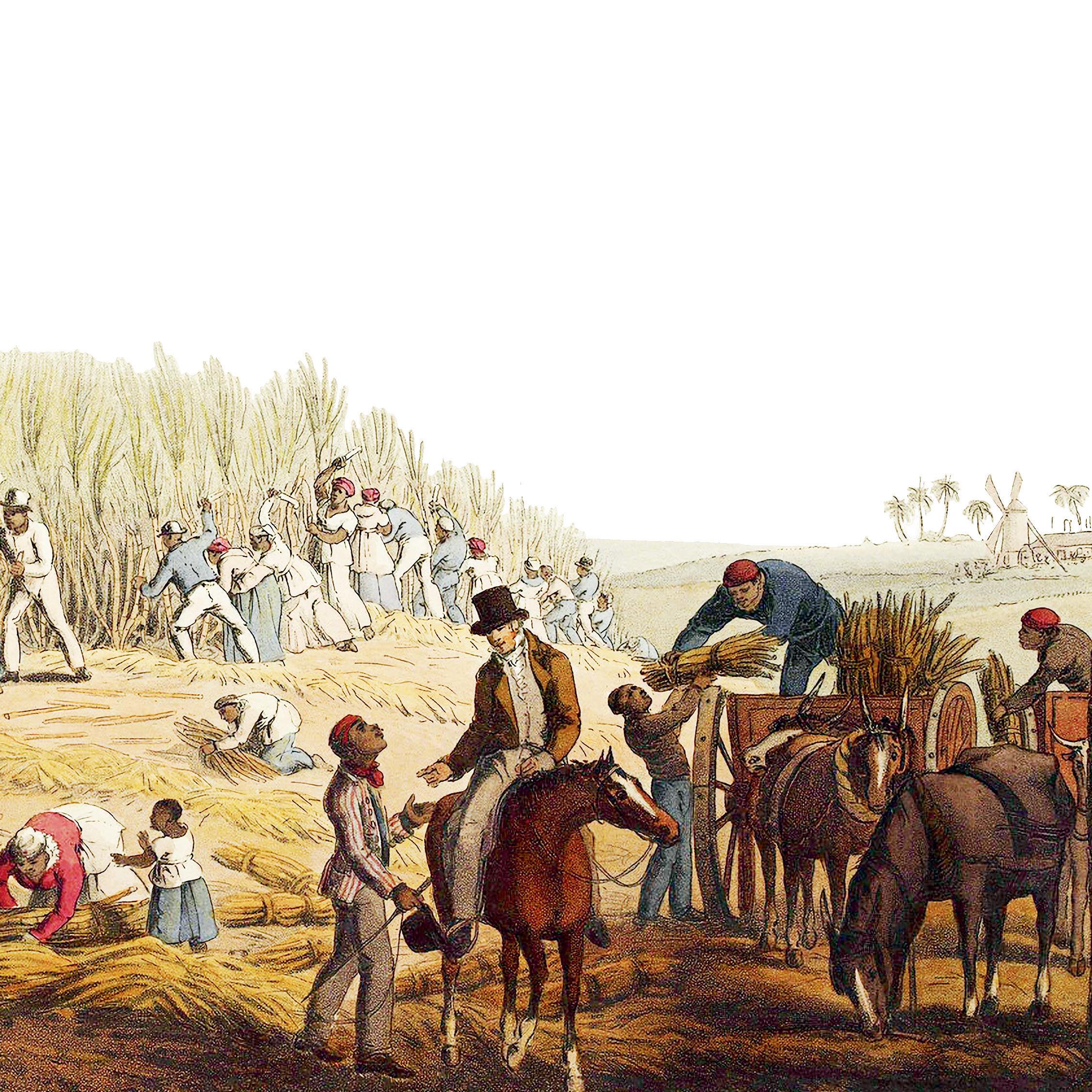
Portuguese sailor Vasco da Gama, the first European to sail east around the Cape of Good Hope (he arrived in India on 20 May 1498) hated Muslims. Before he would have trade negotiations with a city,
he made its leader kick out all of the Muslims living there. Once he even captured a ship full of Muslim pilgrims on their way to Mecca, locked the pilgrims into the storage area of the ship, and set it on fire, killing all of them.
Not every Portuguese coloniser was as bad as da Gama, but for the people along the coast of the Persian Gulf and in India, Indonesia, and finally Japan, the arrival of the Portuguese was far from easy. Meanwhile, Pedro Álvares Cabral, also from Portugal, sailed west, arriving in what is now Brazil in April 1500.

By the 1530s, the African slave trade was well under way. Europeans were buying people in Africa and taking them across the ocean to
Brazil and the Caribbean. They had first tried to enslave the indigenous people of the area, but many of them had died and others had run away. Many enslaved people did not survive the ships across the Atlantic, either.
Enslavers forced the people they enslaved to work harder than anyone should ever have to. One of the most notorious jobs was farming sugar cane and processing it into sugar. This work was so dangerous that most enslaved people died in less than five years if they didn’t manage to escape first. The sugar they made was shipped across the ocean and sold in Europe for high prices. The sugar growers were making so much money that they could afford to buy more people to work to death. Thanks to this ugly business, European nations got richer and richer.
So what was going on here? Why were the European colonisers so brutal? And how were they able to overrun so much of the rest of the world? One thing to understand is that not every European felt the same way. There was a lot of
Continued on next page
disagreement in Europe itself about the way the colonisers treated the local people. But those in charge (kings, queens and rich companies) were after more riches, and they chose brutal leaders on purpose because they brought back more stolen goods.
The biggest prize for a coloniser was gold. This shiny yellow metal was so valuable that the hope of finding it made Europeans willing to face any kind of danger. Spanish cousins Hernán Cortés and Francisco Pizarro were after gold when they set out on separate expeditions. Each of them was responsible for the destruction of a huge, powerful empire. Cortés brought ruin to the Aztecs, Pizarro the Inca. They, and other Spaniards like them, were known as conquistadors – or conquerors. Quite how they made these conquests counts as one of the most extraordinary –and distressing – stories in all of history.
When Cortés arrived off the coast of Mexico in the spring of 1519, he had 11 ships, about 100 sailors, 508 soldiers and very little understanding of the people he was to meet. He then chanced upon a Spanish sailor who had been shipwrecked on a previous expedition.
Gerónimo de Aguilar had been captured and enslaved by the Maya for eight years. During that time, he had learned their language, so he spoke both Spanish and Mayan.
Then a group of Mayan people gave Cortés twenty enslaved people as a gift.
One of them was a Nahua
In 1494 Spain and Portugal ignored hundreds of independent civilisations around the world and divided the right to rule newly ‘discovered’ places along a line drawn down the middle of the Atlantic. In 1529 they agreed to another line along the Pacific coast of Asia. Together, these two treaties said that Portugal could conquer Africa and Asia, and Spain could conquer most of the Americas. Once it became clear that there was money to be made in the exploration and conquest of faraway civilisations, the countries of Europe rushed out to grab their share of the treasure.
woman named Malintzin, who spoke both Mayan and Nahuatl (the language of the Aztecs). Now Cortés could speak Spanish to Aguilar, who would translate his words into Mayan. Then Malintzin translated them from Mayan to Nahuatl. With these two, Cortés found he could make himself understood by just about anyone he might meet on his hunt for gold.
Cortés made a crucial military alliance
with two local peoples, the Totonac and the Tlaxcalans. This wasn’t so hard when he explained he wanted to defeat the Aztecs. The Aztecs demanded that the surrounding communities pay taxes. So of course those communities were happy for a chance to conquer them.
Now Cortés and his small band of warriors had the allies they needed to advance to Tenochtitlán, the glorious capital of the Aztec Empire. You know, the one built in the middle of a lake.
At its peak, Tenochtitlán was one of the biggest cities in the world, and the biggest in the Americas.

The Aztec king was called Moctezuma II. After welcoming Cortés and his army as guests, the ruler soon found himself a prisoner in his own palace. Cortés demanded an enormous ransom in gold as the price of the king’s freedom. As more and more treasure was given over to the Spanish, the Aztec people got angrier and angrier at Cortés, his warriors, and the huge ransom demand.
But within a few days, Moctezuma lay dead. No one quite knows how he died. Did Cortés or one of his men kill him? Or perhaps a group of Aztecs did the dastardly deed? In any case, by the beginning of July 1520, furious Aztec citizens forced the Spanish to flee the city.
When the Spanish returned
a few months later, they came with a huge new army, mostly made up of people sick of being under the thumb of the Aztecs. But worse killers than any army were the diseases the Europeans carried with them. They didn’t know why the smallpox that they were used to in Europe was killing whole villages in the Americas. The Americans didn’t know why either. It seemed like a horrible supernatural plague. We now understand what was happening. Like the bubonic plague that struck medieval Europe, smallpox is a highly infectious disease. Unlike bubonic plague, though, smallpox in Europe was what’s called endemic. That means it was always around. It killed some people, but others survived. Over time, lots of
people had already been exposed to the disease, so they had become immune. In the Americas, it was different. The smallpox virus had never been there before, so nobody had ever had it. It ripped through the native people of both North and South America. About 40 per cent of the Aztec population
died within a year of their first contact with the Spanish. Weakened by these deaths and besieged by Cortés’s army, Tenochtitlán fell into Spanish hands. As many as 240,000 Aztecs died in the final
Inca emperor Atahualpa was captured by Spanish conquistador Francisco Pizarro. Similar to Moctezuma, he was killed even though his people paid a large ransom for his release.

ninety-three-day siege, some in the fighting and some from smallpox.
The way was now clear for a Spanish conquest of the whole region of what is now Mexico, and beyond. The area was renamed New Spain, and a
governor was appointed as overlord in 1524. When news of the discovery of Aztec silver mines began to filter back to Spain, more European adventurers set sail, hoping to get rich quick in the Americas.
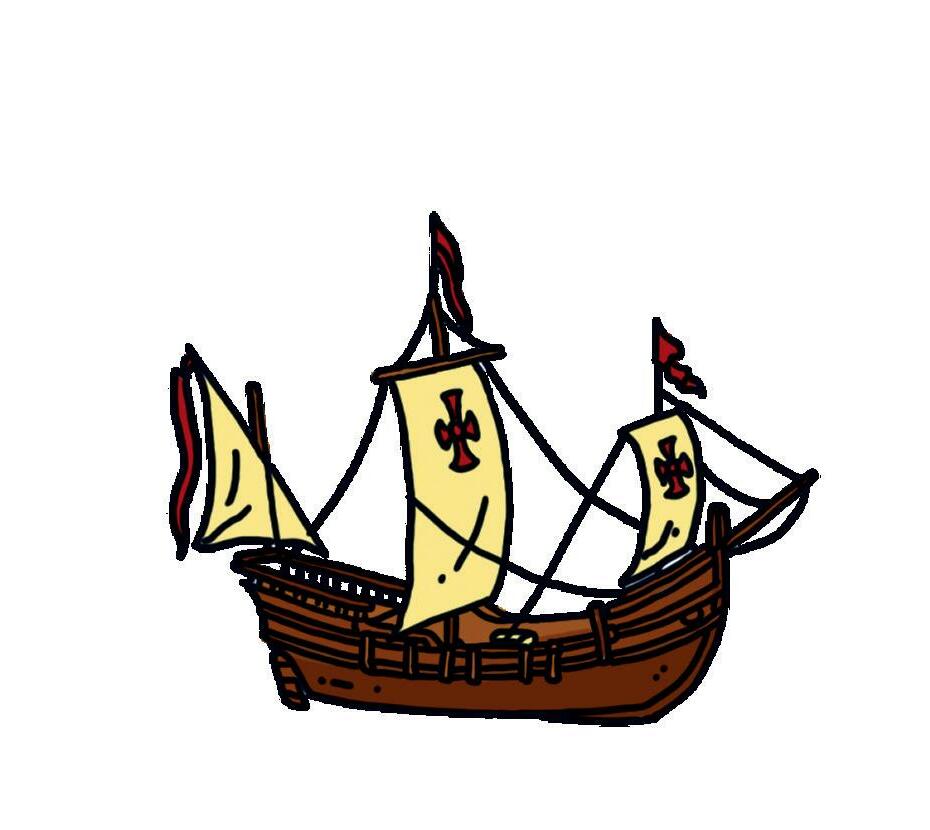
In 1529, Cortés’s second cousin, Francisco Pizarro, received royal Spanish approval for a conquest of the Inca in South America. Pizarro’s tactics were inspired by those of his cousin, Hernán Cortés. He arranged for some of his men to meet the Inca emperor, Atahualpa, in the central square of a hilltop town called Cajamarca on 16 November 1532.
The Inca of what is now Peru were a major power in South America. About a hundred
Continued from previous page
years before any Europeans arrived, they had united the whole Andes mountain region through a combination of warfare and cooperation.
When Pizarro marched into town, this great empire was the largest in the Americas, and possibly the largest in the world.
One of the Inca’s most impressive achievements was a 30,000-kilometre network of footpaths and trails, some of them crossing mountains more than 5,000 metres high. Many of these trails are still in use today. In Inca times, there were stations about every twenty-five kilometres along the major trails. Runners
stood ready at each station to carry messages as in a relay race. That way, Inca rulers and officials could communicate as fast as possible along the whole length of the empire. With each runner having to cover only a short distance, the system could keep up top speed.
Instead of paper, parchment or clay, the runners carried quipu, pieces of string that contained messages written in rows of knots. Like the pharaohs of ancient Egypt, the Inca emperor was believed to be divine. He was regarded as the son of Inti, the Sun god.
The Inca revered Inti so highly that they believed that precious shiny gold itself was his sweat.

None of that prepared Atahualpa for the trickery of Francisco Pizarro.
The emperor
approached the town square in a ceremonial procession with a large group of followers. When the Inca wanted to take over territory, Atahualpa always met with the ruler first to discuss his plan and to try to come to an agreement. So he expected Pizarro to have the same sort of conversation with him. What actually happened next was a huge and unpleasant surprise.
According to accounts written by the Spanish, the emperor was ordered to abandon his native religion and accept the word of Jesus Christ. A Spanish priest probably read The Spanish Requirement of 1513, a document that the Pope required conquistadors to read aloud (in Spanish) to any people they wanted to conquer, whether their audience could understand it or not. If the
people did not agree that the Pope and Spain were in charge, the conquistadors were allowed to make war on them.
When Atahualpa refused to accept the priest’s demands, Pizarro’s men charged on horseback and opened fire. Horses had been extinct in the Americas for more than 10,000 years, so the surprise attack from men riding these unknown beasts created mass panic. Huge numbers of Inca were killed in the confusion.
From there the story is very similar to Moctezuma’s. The emperor was captured and imprisoned in a small room. A ‘ransom room’ was piled high with treasure to try to make the Spanish take money instead of executing Atahualpa, but the Spanish took the money and executed him anyway.
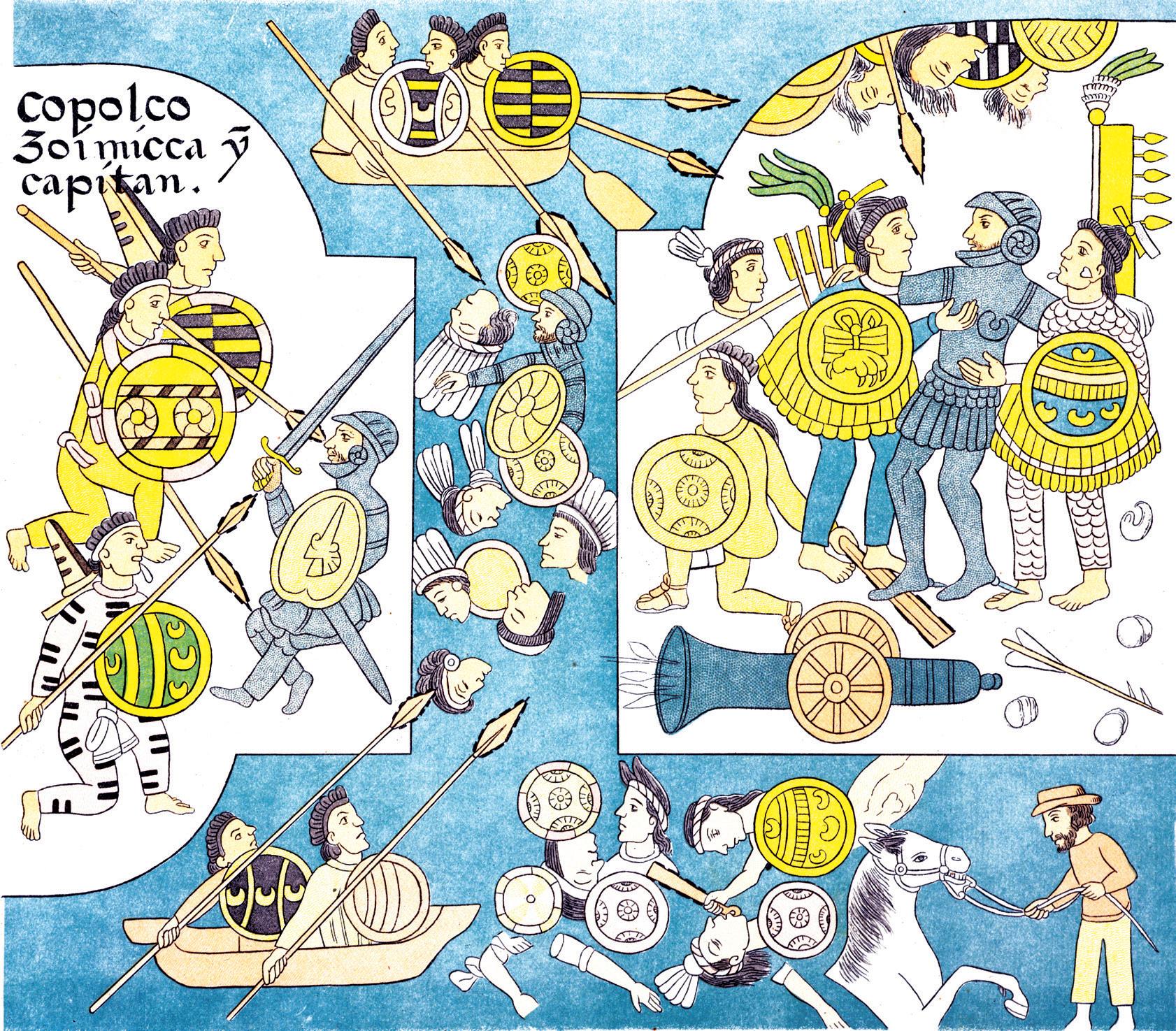
A bitter six-year war ensued, but even with a much larger army, Inca battle axes, spears and arrows were no match for Spanish guns and armour.

Soon huge ships called galleons were arriving in Spanish ports filled to the brim with Inca and Aztec gold and silver.
Other European nations were also on the move.
Having been paid by merchants in England, John Cabot explored the coast of North America in 1497. Jacques Cartier, a French navigator, sailed to what is now Canada on a series of expeditions for the French king. In 1522, an expedition started by Ferdinand Magellan became the first to travel all the way around the world.:
Each year, millions of monarchbutterfi es m gi etar morf
Scientists can trackthe but t e r f,sei tub sa ehtwohrof
newlyborn onesknow e tcaxyl …ogoterehw
.ocixeMotadanaC
takes several generations of butt e r f y ot ekam siht pe.yenruojci MYSTERIES 55
Congratulations to Sasha Hill, who was recently awarded the Christopher Lloyd Prize for her awesome pop-up project about the ocean, which you can see pictured on the right.
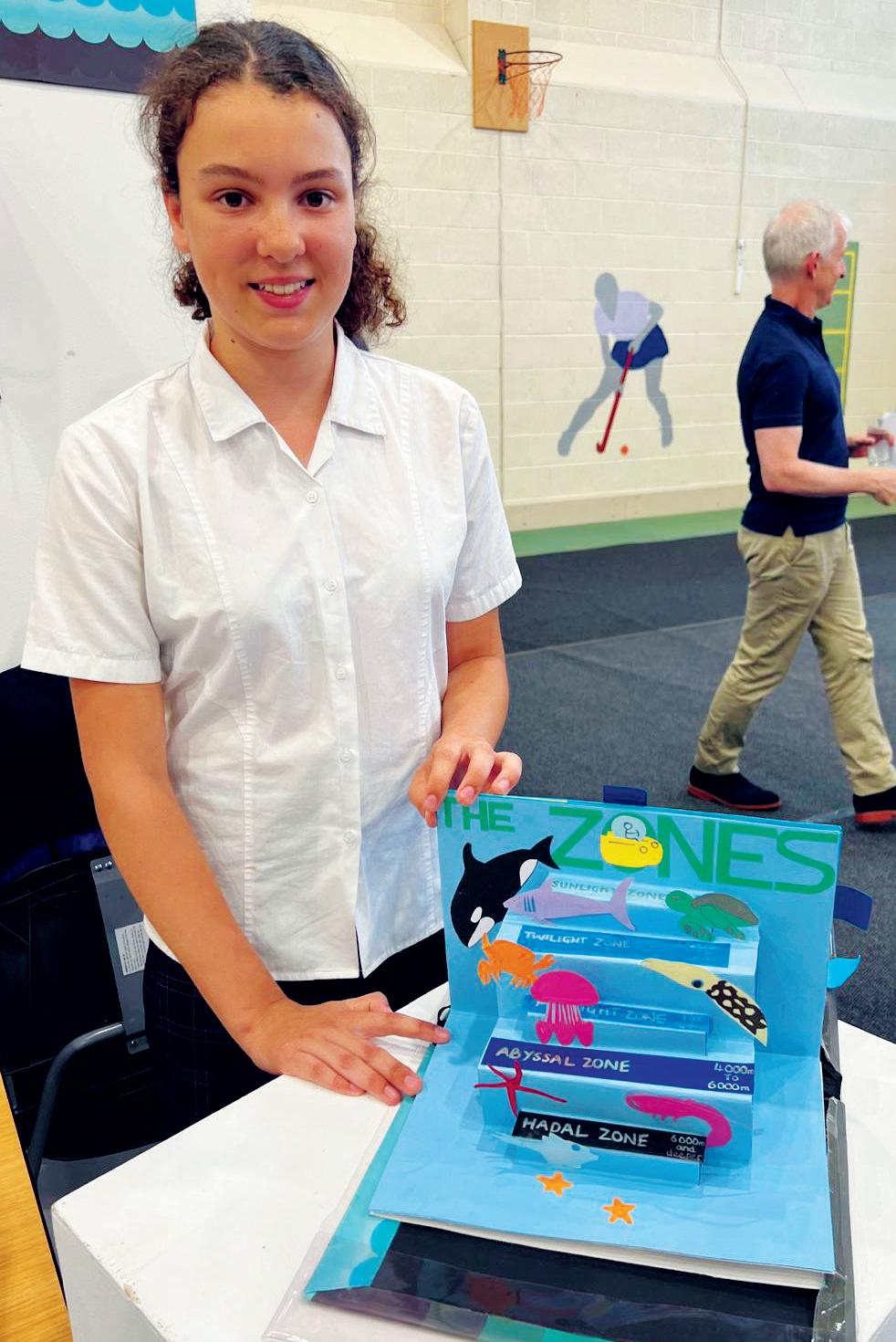
Sasha, who has just finished Year 8 at Sydenham High School in south London, was inspired to create her project by an article in the book Listified! about the five zones into which the ocean has been divided by marine scientists.
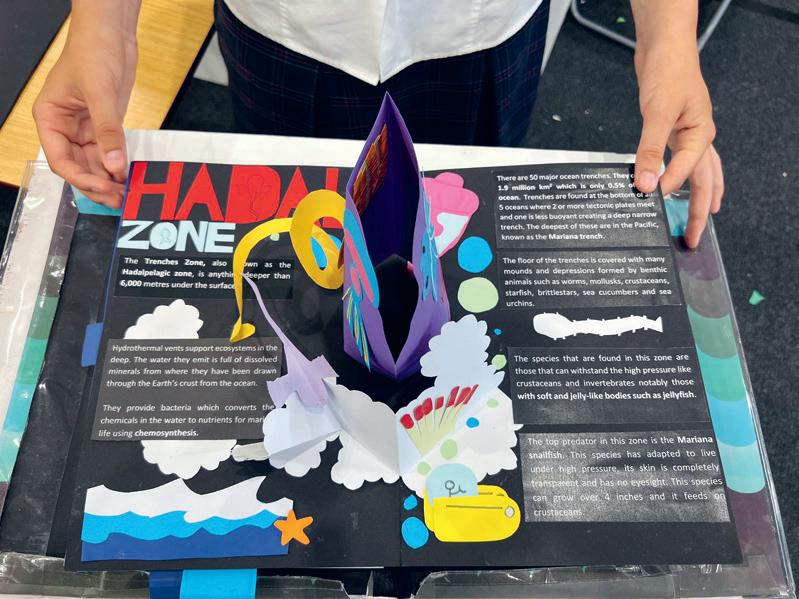
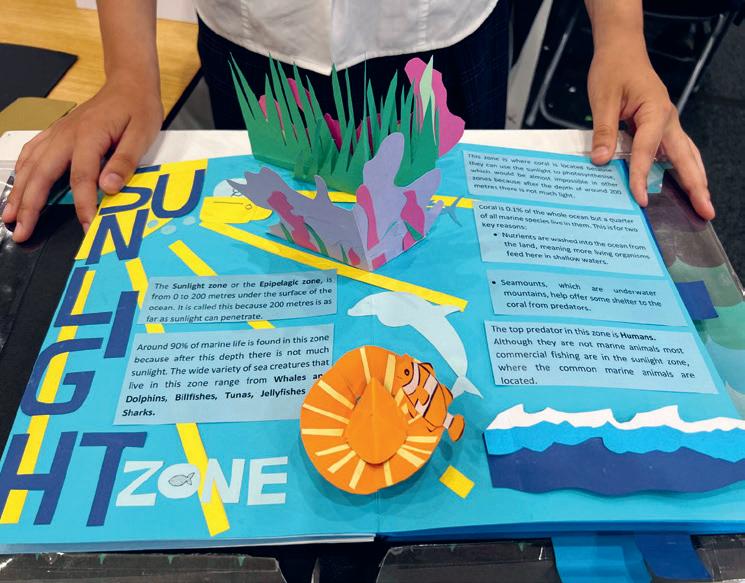
Sasha’s project, which is called ‘POP Into the Deep’, introduces each of these five underwater zones, starting with the Sunlight zone, which is closest to the surface, before diving deeper to explore the Twilight zone, Midnight zone, Abyssal zone and, finally, the Hadal zone. Each page is full of fascinating facts – did you know, for example, that there are more than 50 major deep-sea trenches at the bottom of the ocean? – and colourful pop-ups of some of the extraordinary creatures you can find there. Well done Sasha!



Congratulations to readers Vian and Harry who sent in the two rib-ticklers below. And remember: if your joke, riddle or limerick is featured in a future issue, you will win a copy of the hilarious and fascinating Gross FACTopia! So just send your favourite joke to: editor@whatonearth.co.uk
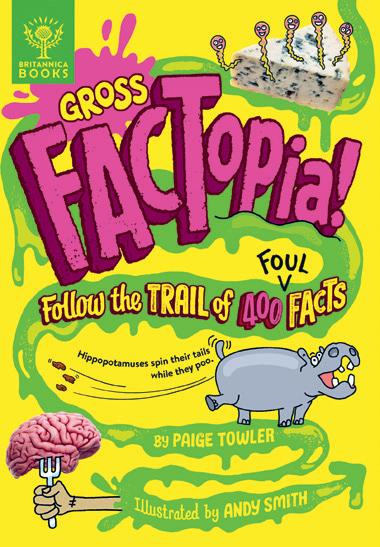
Because it was
SEND IT IN! From Harry, age 8 From Vian, age 10
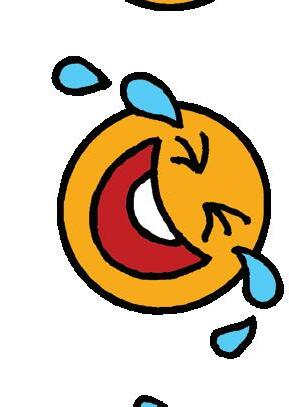
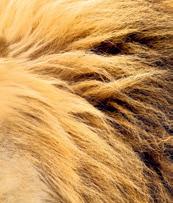
Send
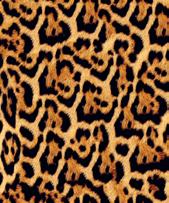
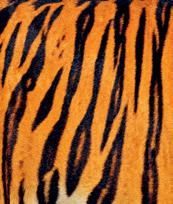
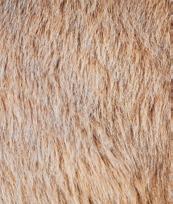
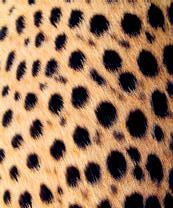
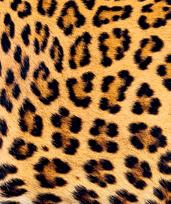
At MIT university in Massachusetts, USA, you can earn an official pirate certificate!
MIT, which stands for Massachusetts Institute of Technology, is one of the most prestigious universities in the world and is associated with dozens of Nobel Prize winners. MIT has had its fair share of pirates, too! In 2011, the university’s

physical education department started to offer official pirate certificates to students who completed PE credits in four key piratical activities: archery, fencing, pistol shooting and sailing. About 50 students complete the course each year and
are honoured with a ‘Pirate Induction Day’. However, the university’s website warns: ‘The MIT Pirate Certificate is for entertainment purposes only and does not give the recipient licence to engage in piracy or any pirate activities.’

Why did the go skydiving? chicken


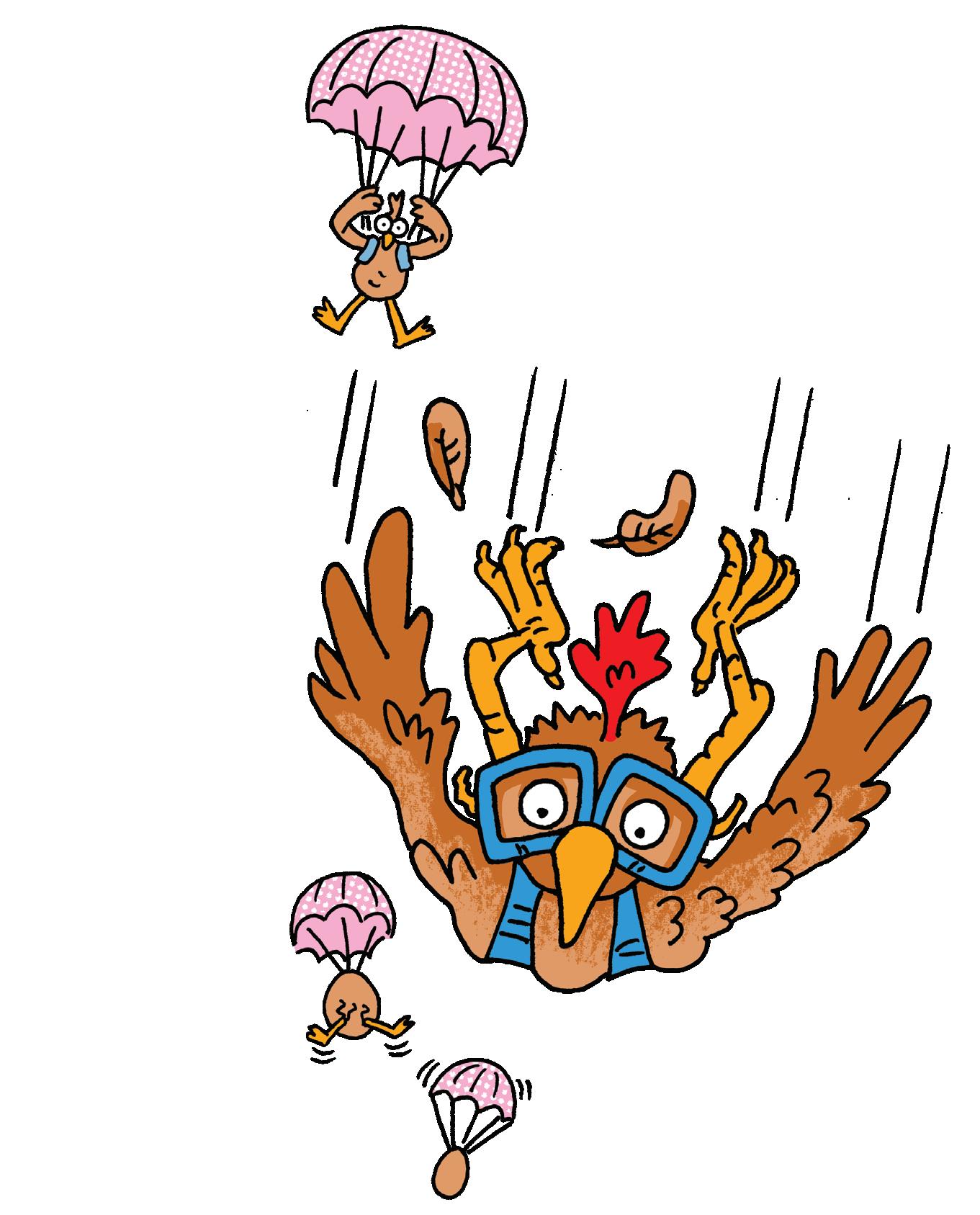
It loved sports! eggs-streme
Dad, a haircut? did you get
WhatQuestion: canyoucatch but never throw?
Answer: A cold!
Question: What type of ring is square?

Answer: A boxing ring!
No, I got them all cut!
like to play at sharks

What game do breaktime?
Swallow leader! the

How did the marathon? feel after running a T. rex

Dino-sore!

Tickle your ribs and tease your brain with our favourite gags and riddles, hand-picked by our jokes editor May.
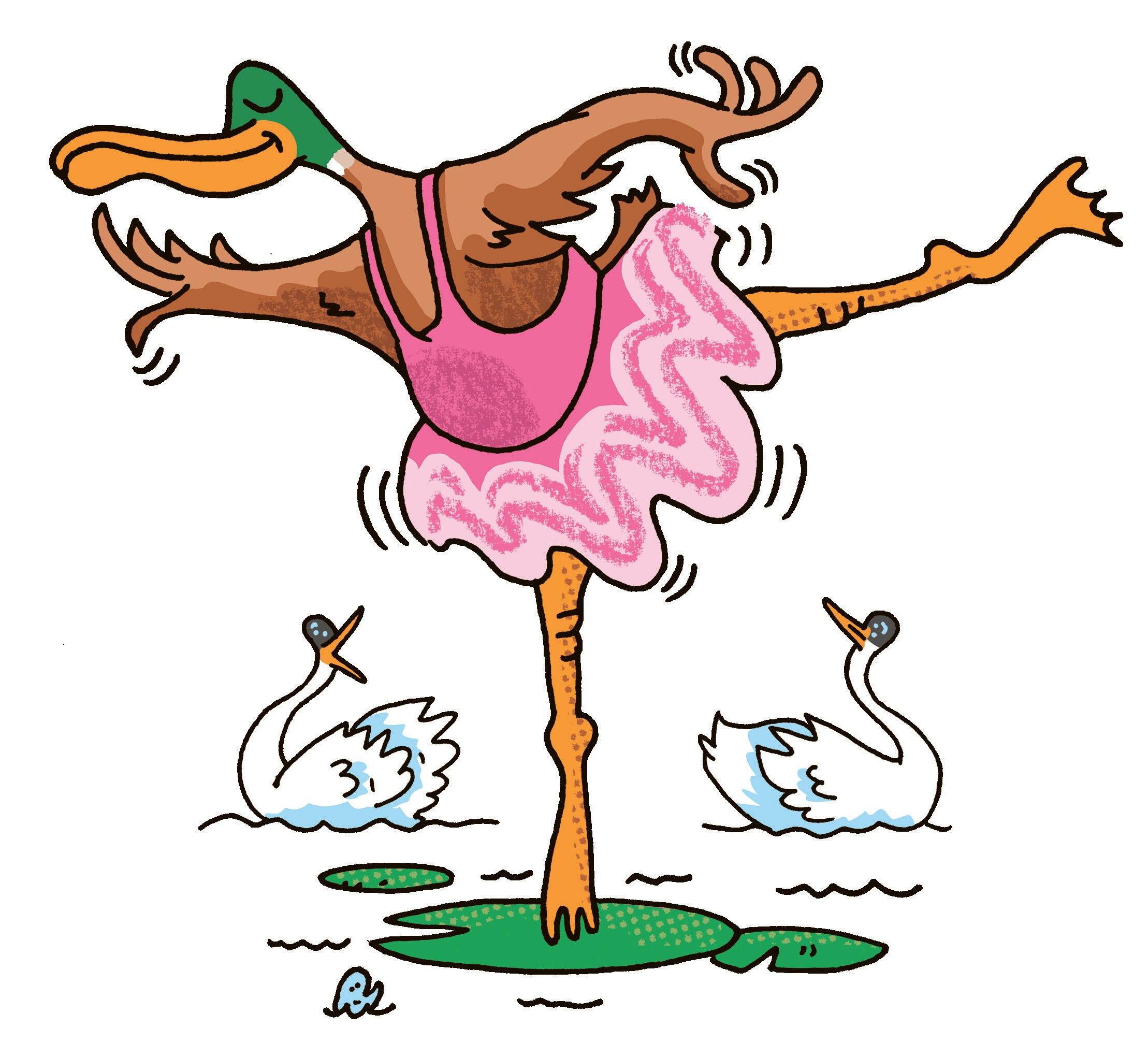
BRITANNICA’S
Published by What on Earth Magazines Ltd, The Black Barn, Wickhurst Farm, Leigh, Tonbridge, Kent, TN11 8PS
Editor-in-Chief
Andrew Pettie
Editor
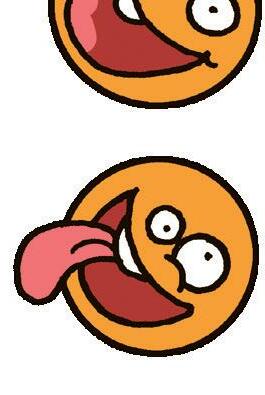
Ali Eldridge
Art & Design Director
Mark Hickling
Designer
Susanna Hickling
Production
Sarah Epton
Contributors
Kate Hale, Andy Forshaw, Andy Smith, Dr Nick Crumpton, Christopher Lloyd, Adrienne Barman, Andrés Lozano, Valentina D’Efilippo, Susanna Hickling, May, Mark Long, Dr Laura Kalin
With thanks to Andy Forshaw, Natalie Bellos, Casey Neumann, Katy Lennon, Daisy Symes, Helen Thewlis, Olivia Galyer, Nell Wood and the whole team at What on Earth Publishing
Editorial Consultant
Nancy Feresten
Business Development
David Falzani
CEO, What on Earth Magazines
Christopher Lloyd For Encyclopaedia Britannica
J.E. Luebering, Vice President, Editorial Printing and distribution Warners Midlands PLC, The Maltings, Manor Lane, Bourne, Lincolnshire, PE10 9PH
Marketing Director

Luise Mulholland
Editorial enquiries editor@whatonearth.co.uk

Subscriptions
01778 392479
whatonearth.co.uk
Picture credits
Selected library images from: Getty Images; Shutterstock; Alamy; NASA. Snap It: Badwater Milky Way/Abhijit; Chris Porsz/ Comedy Pets. Eureka: ESA; National Theater of Korea/AFP.
Copyright 2023 What on Earth Magazines Ltd. All rights reserved. No part of this magazine may be reproduced or transmitted in any form, including photocopying, without permission in writing from the publishers.
